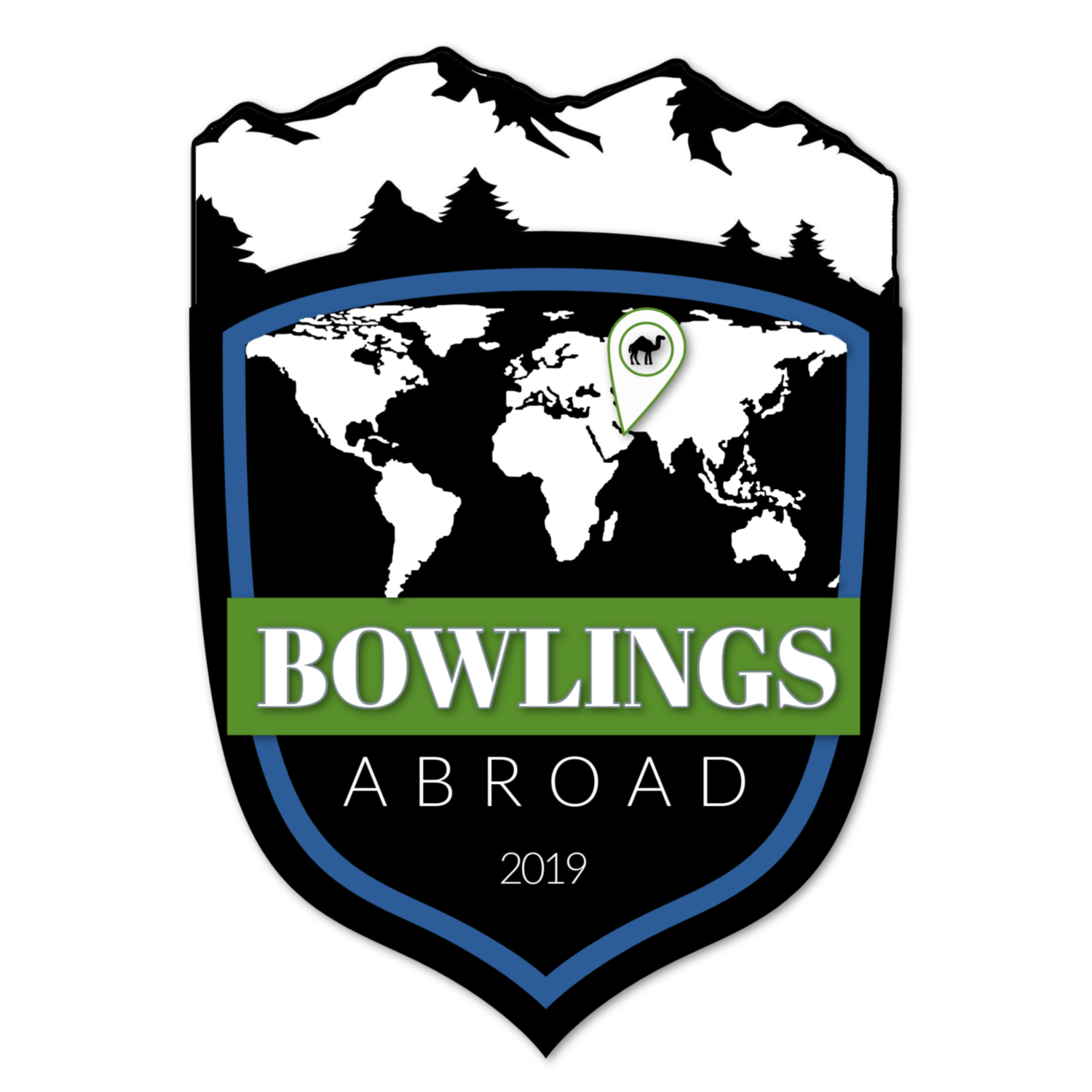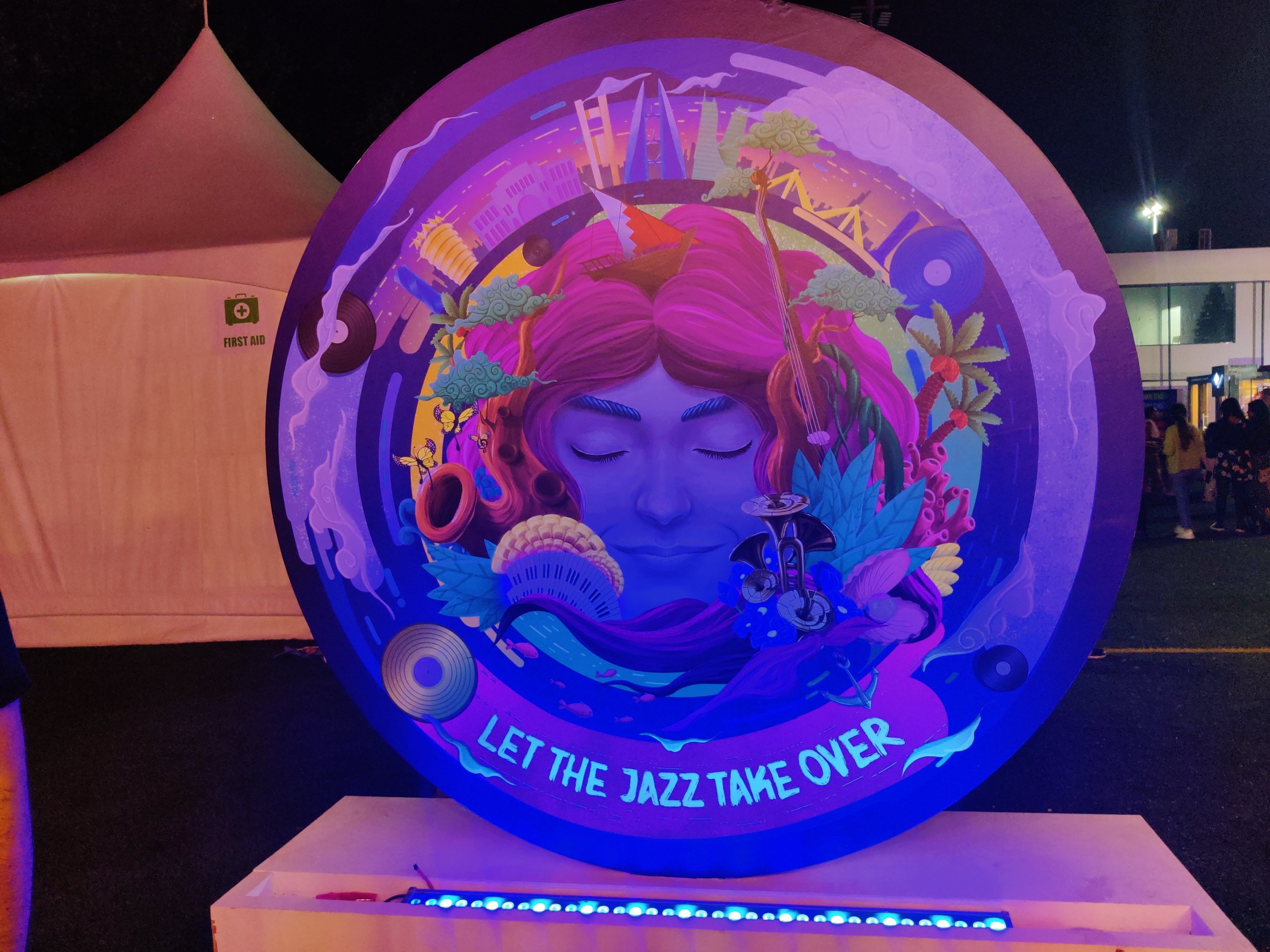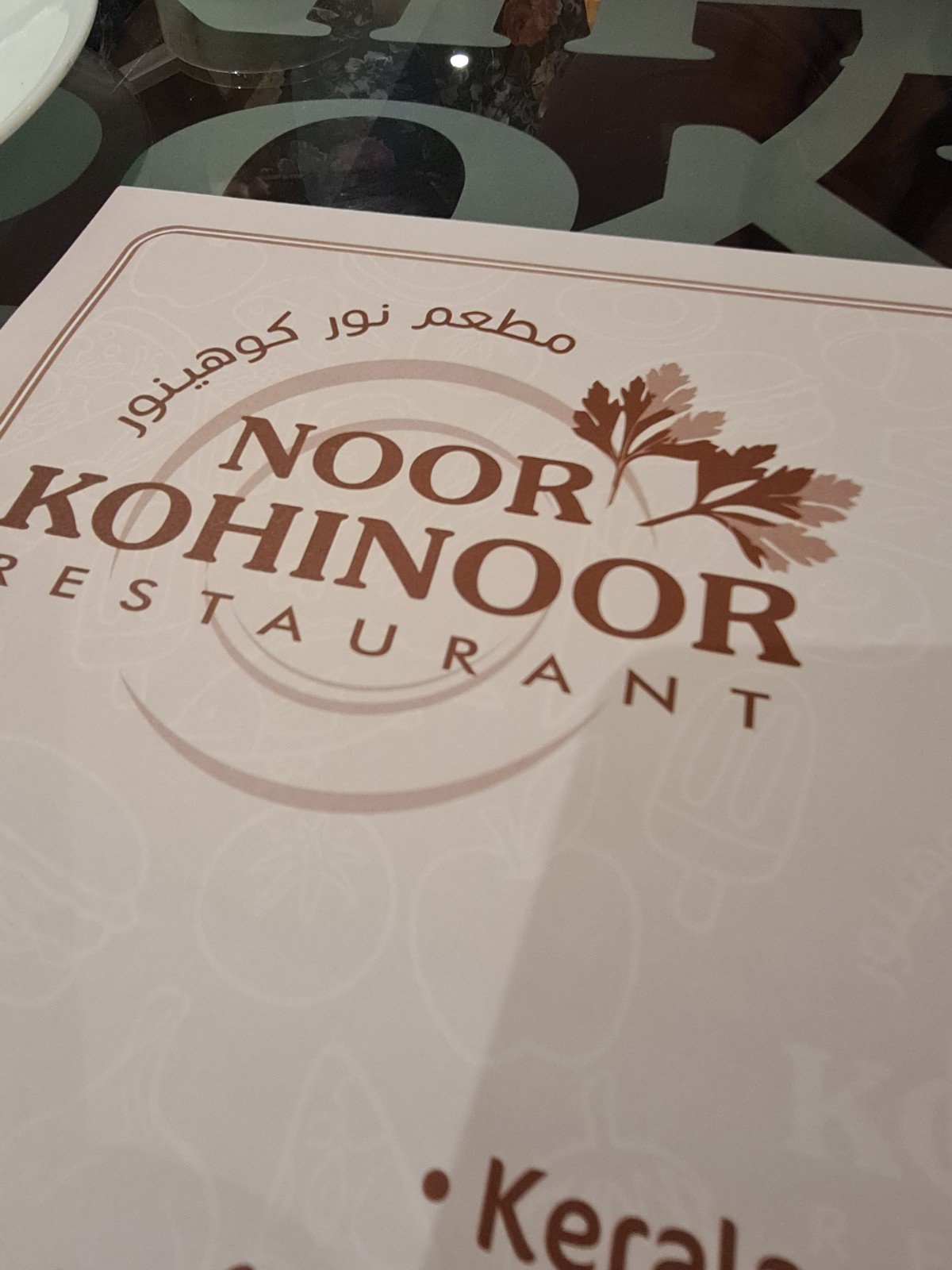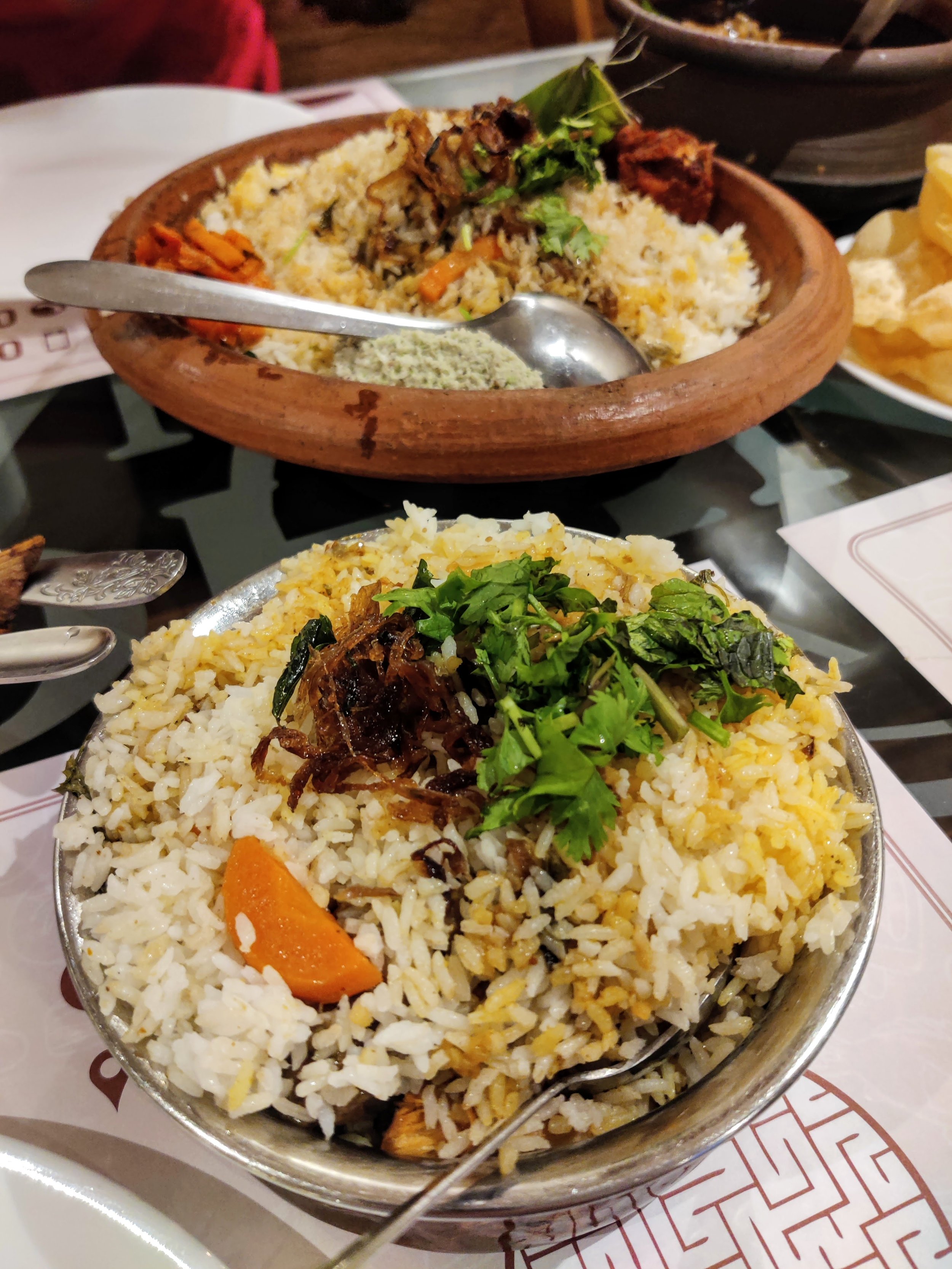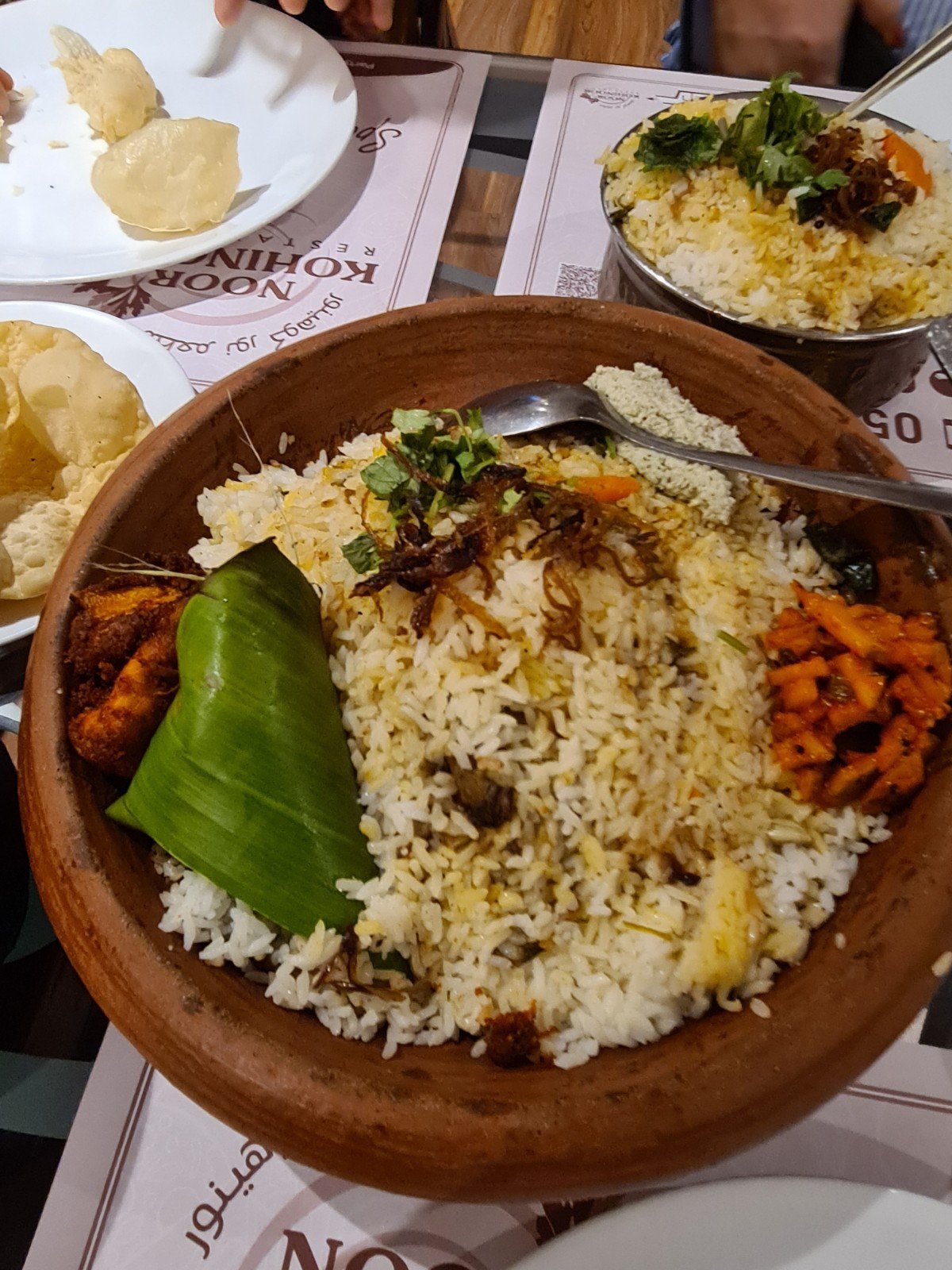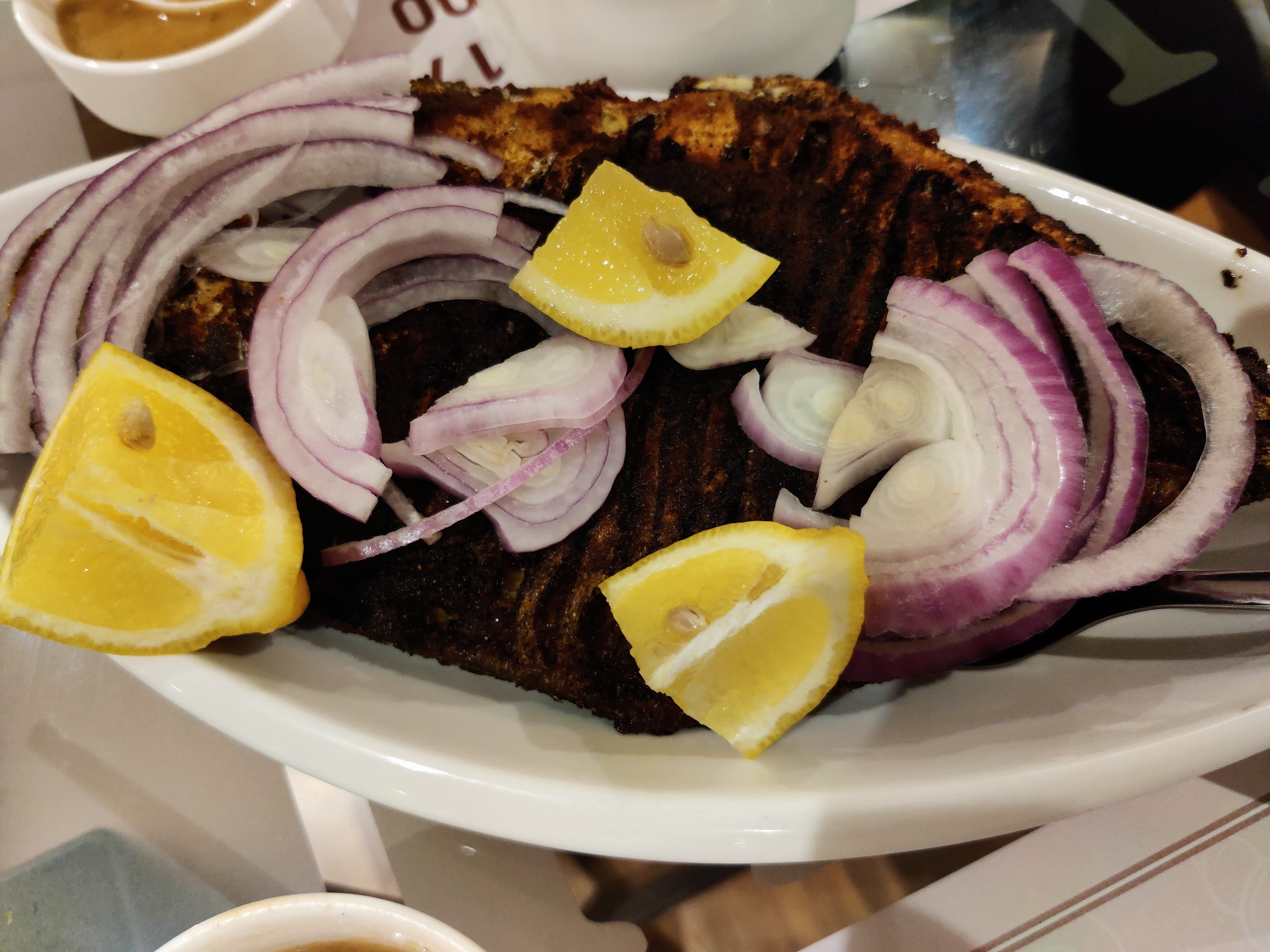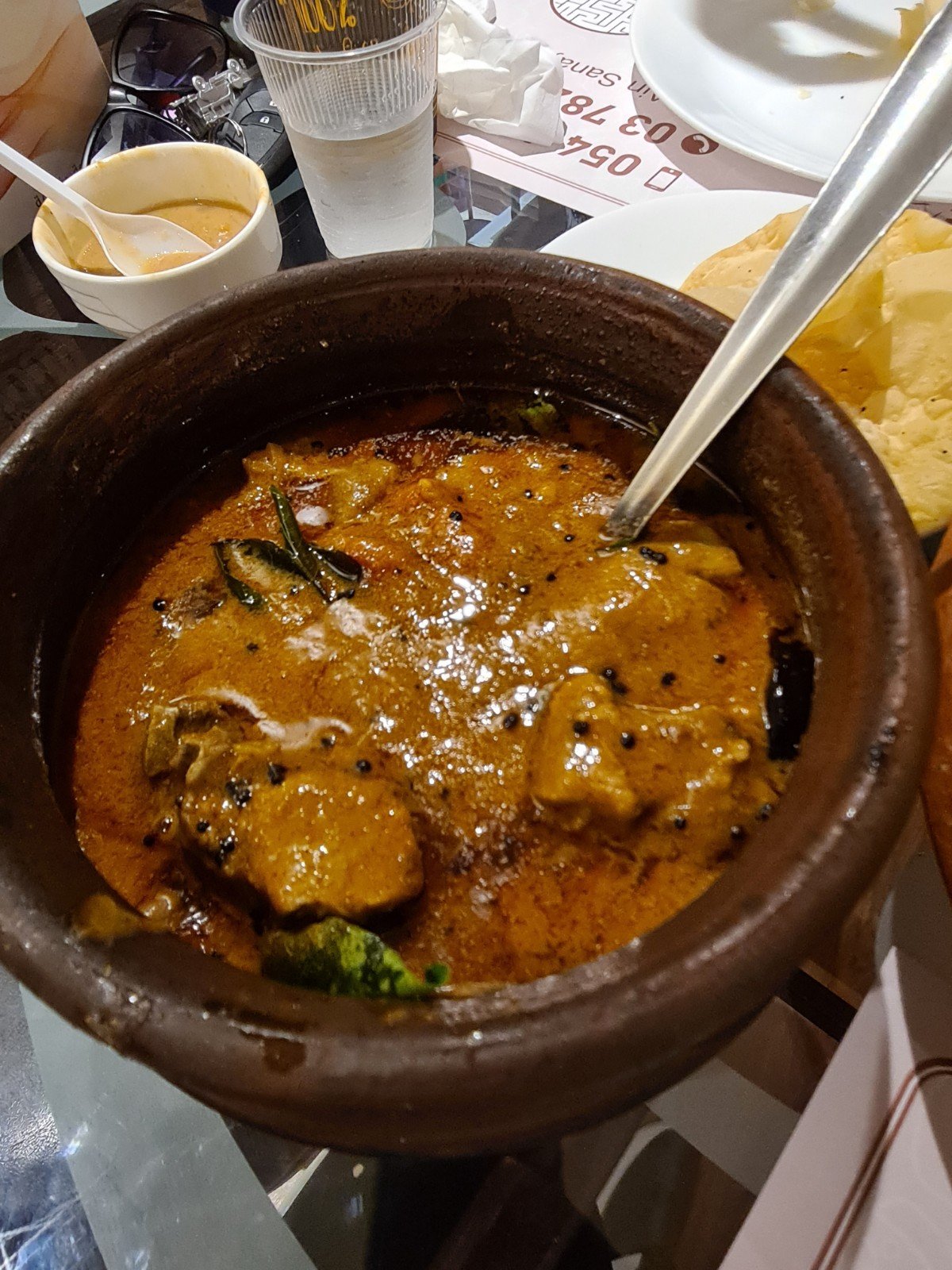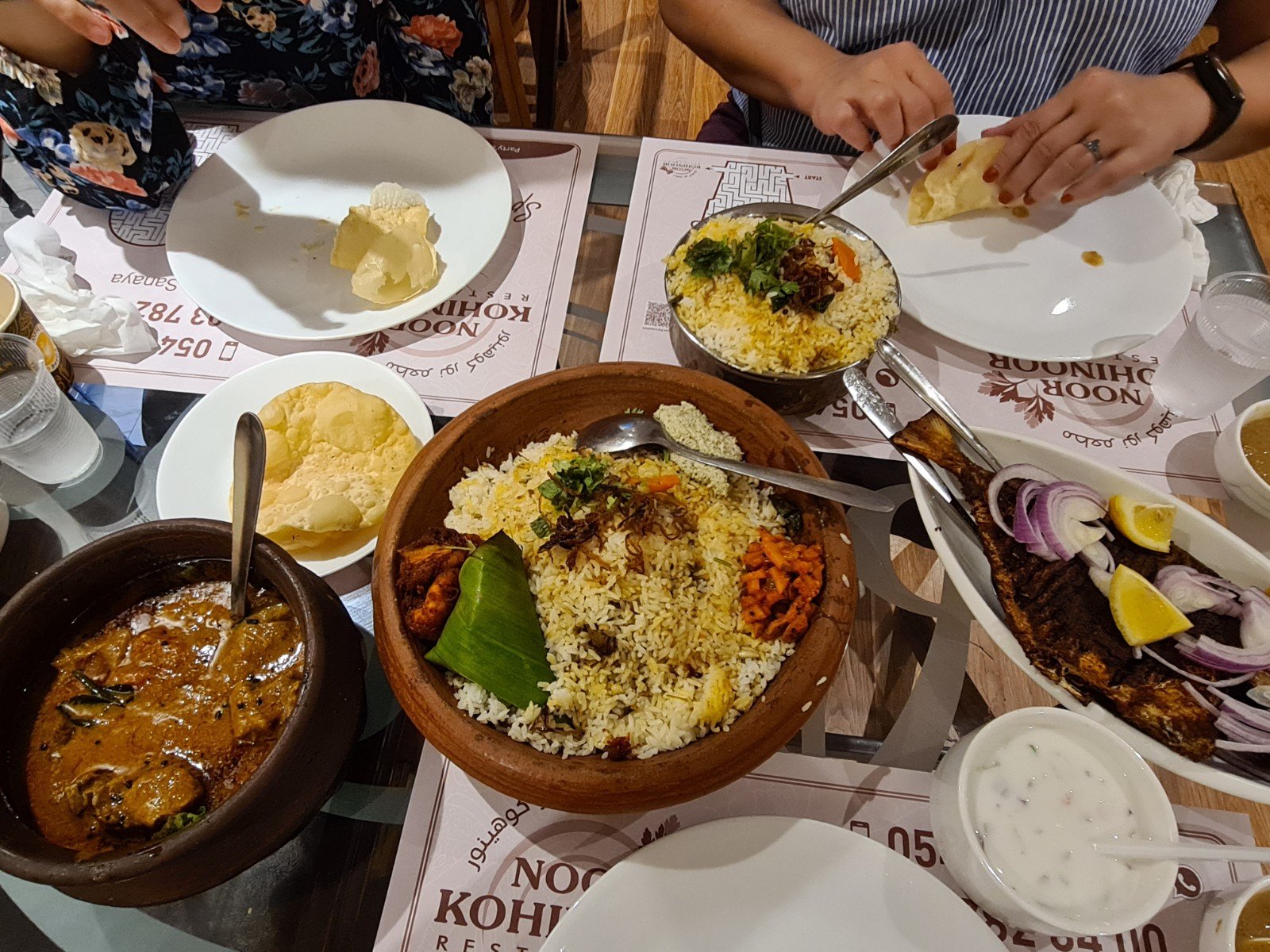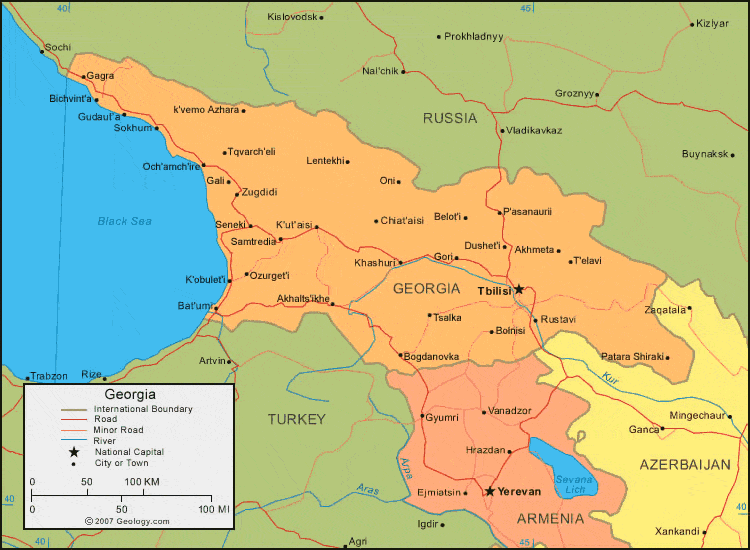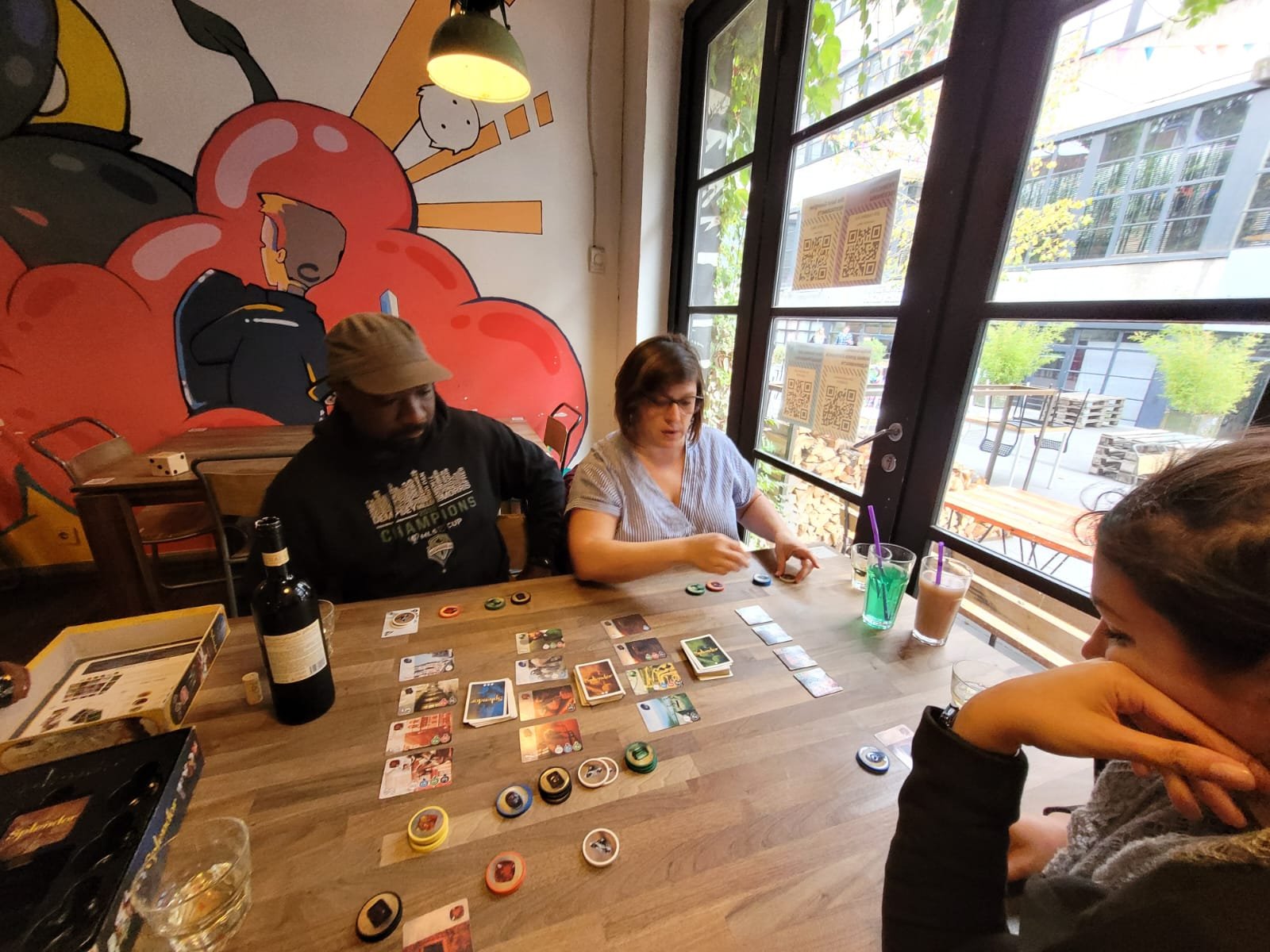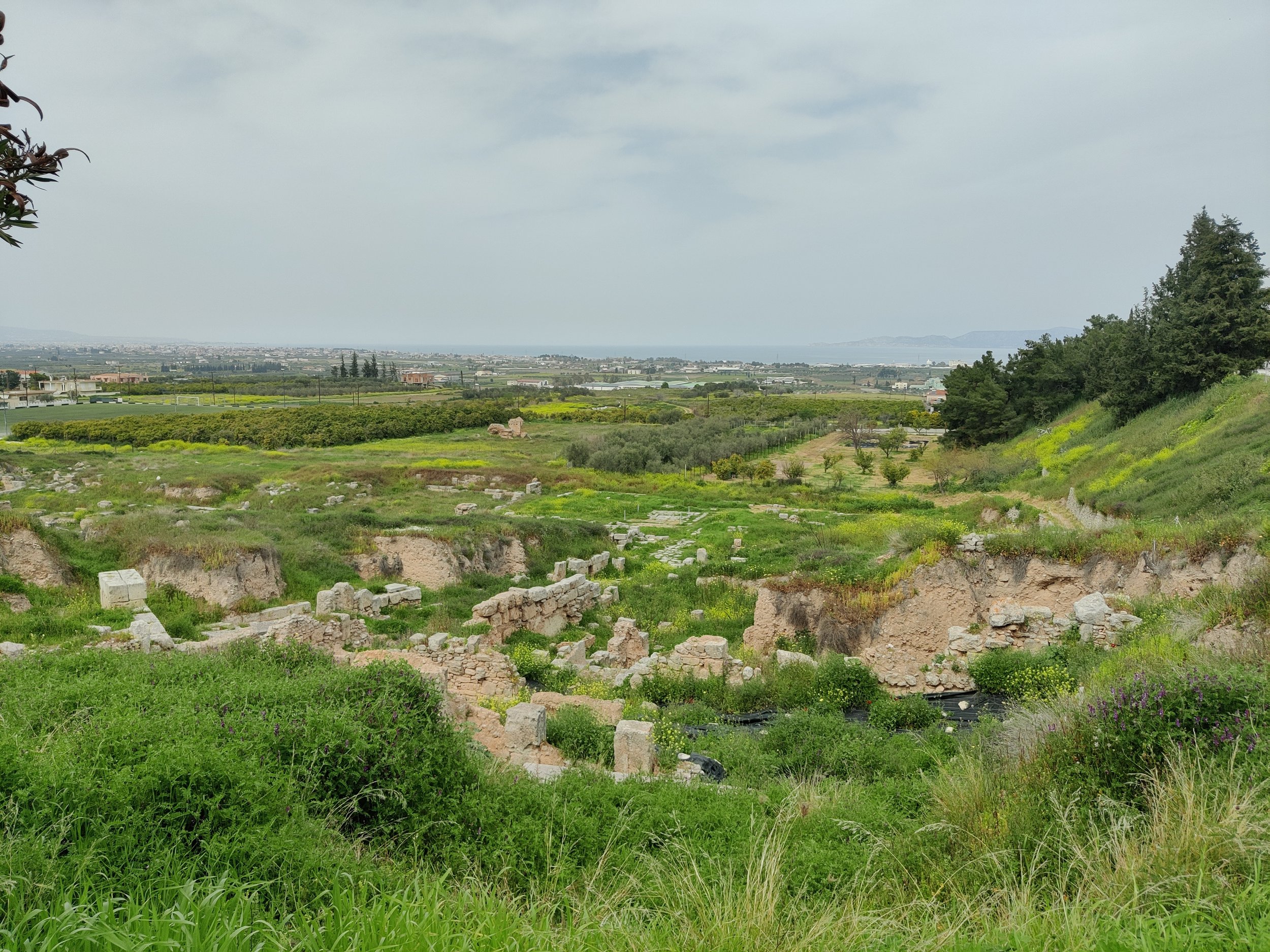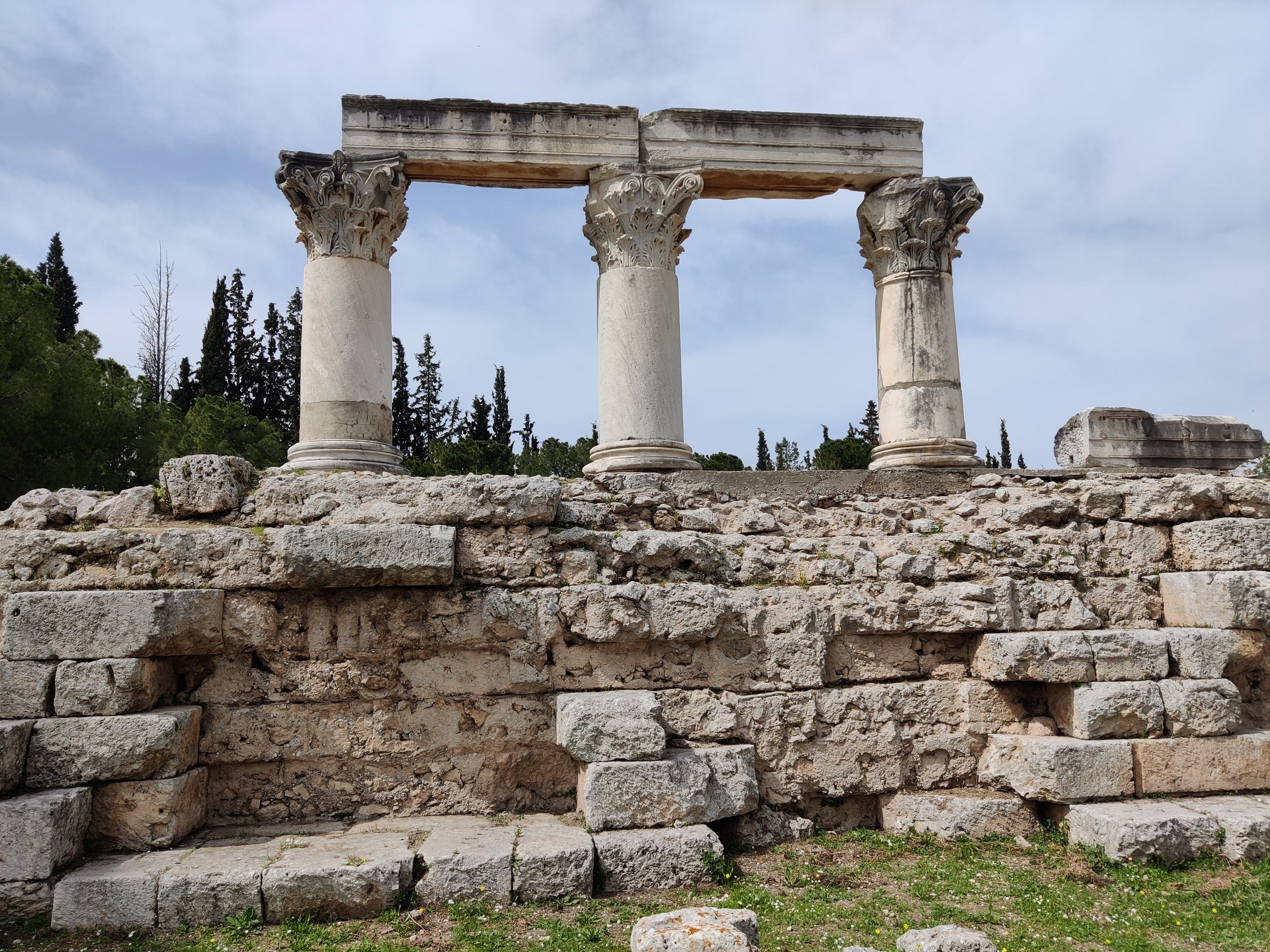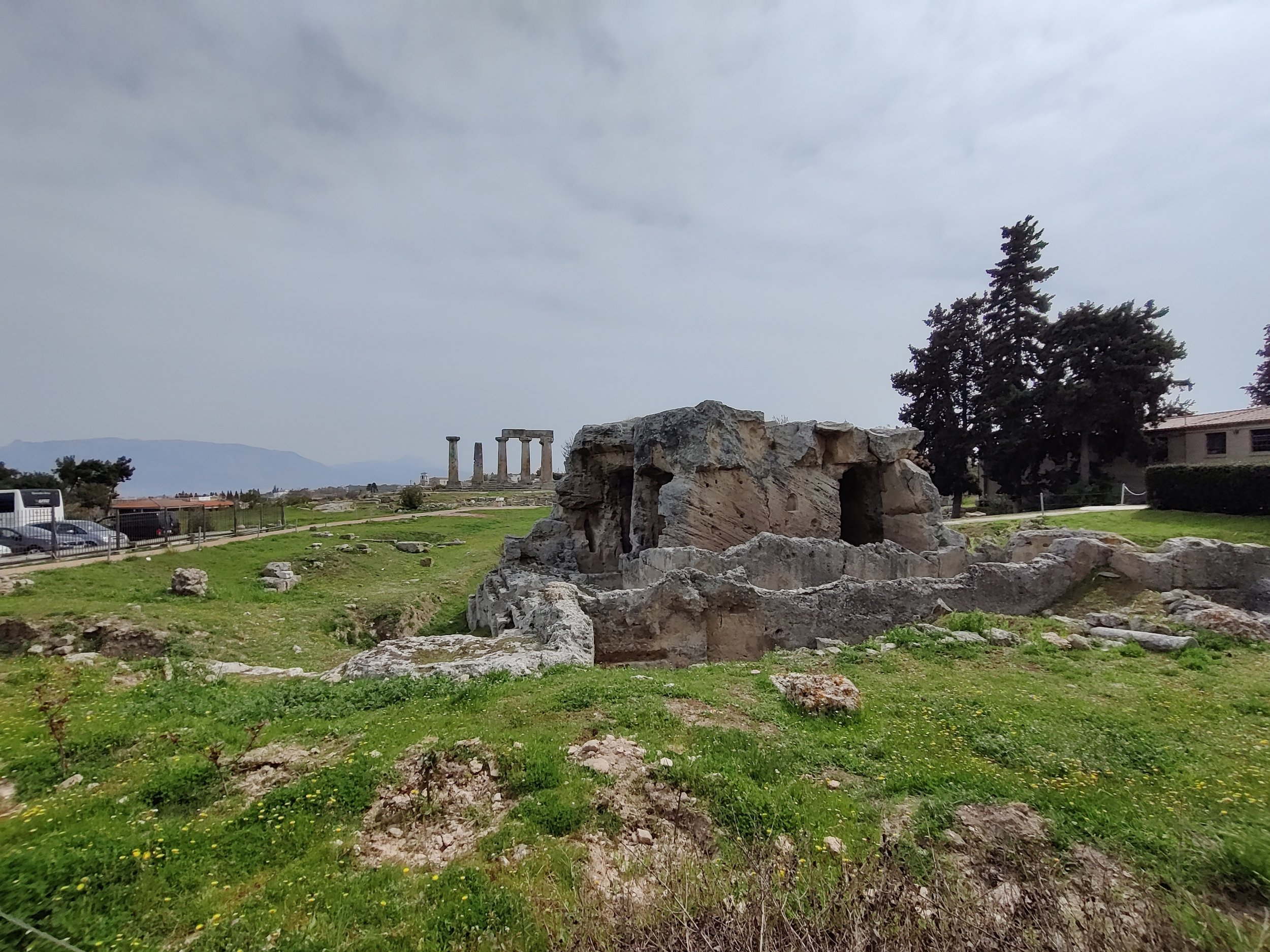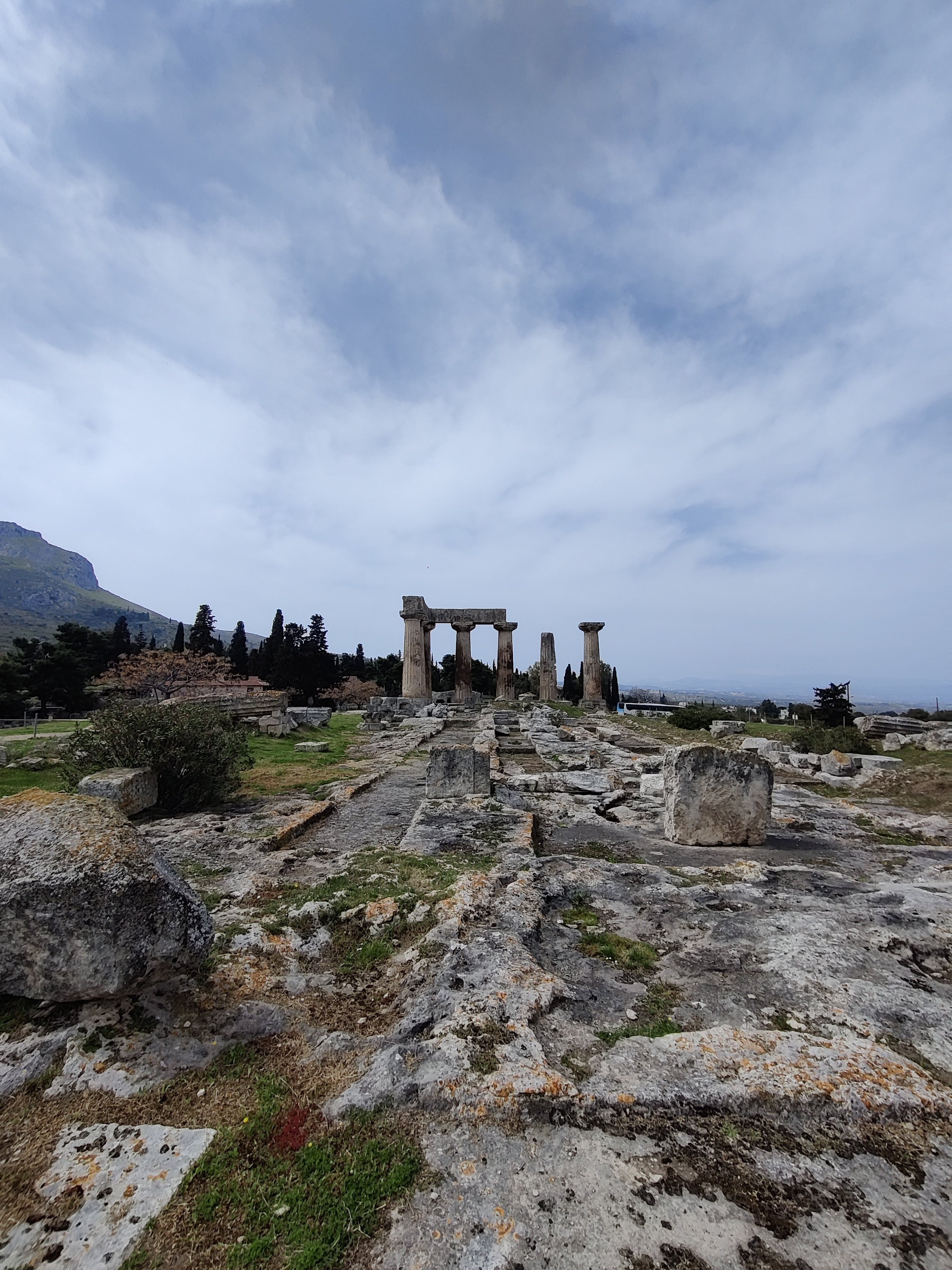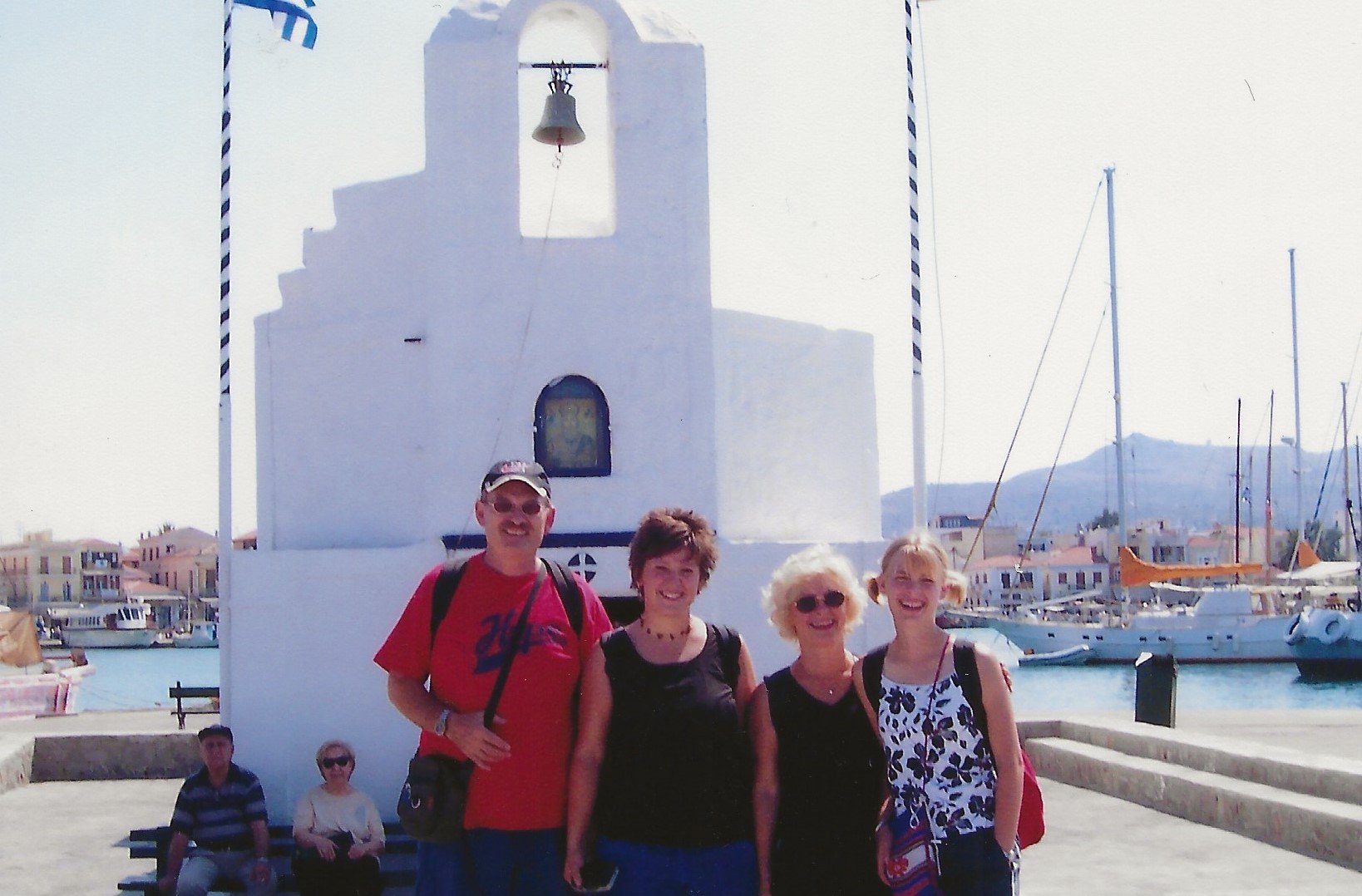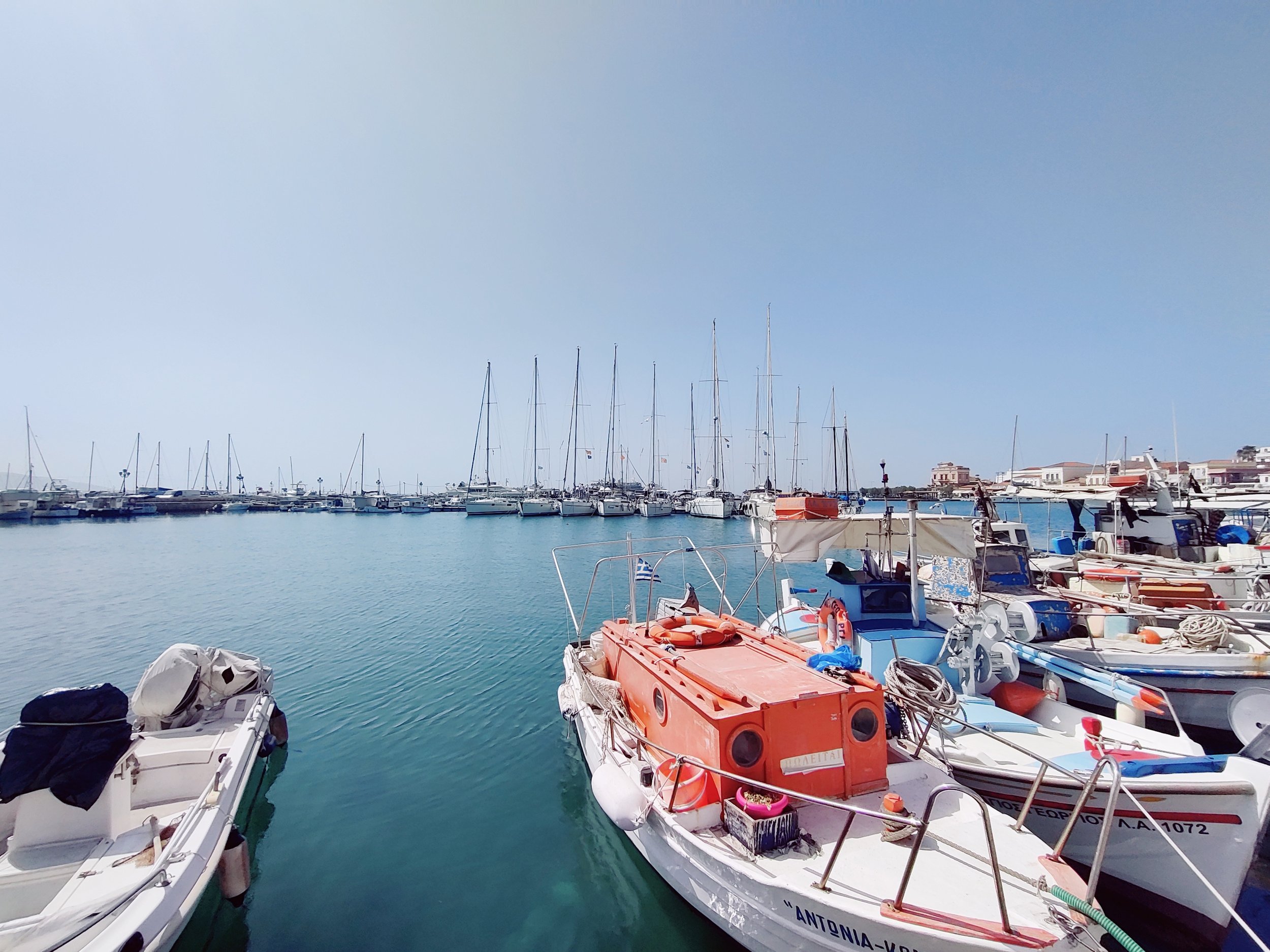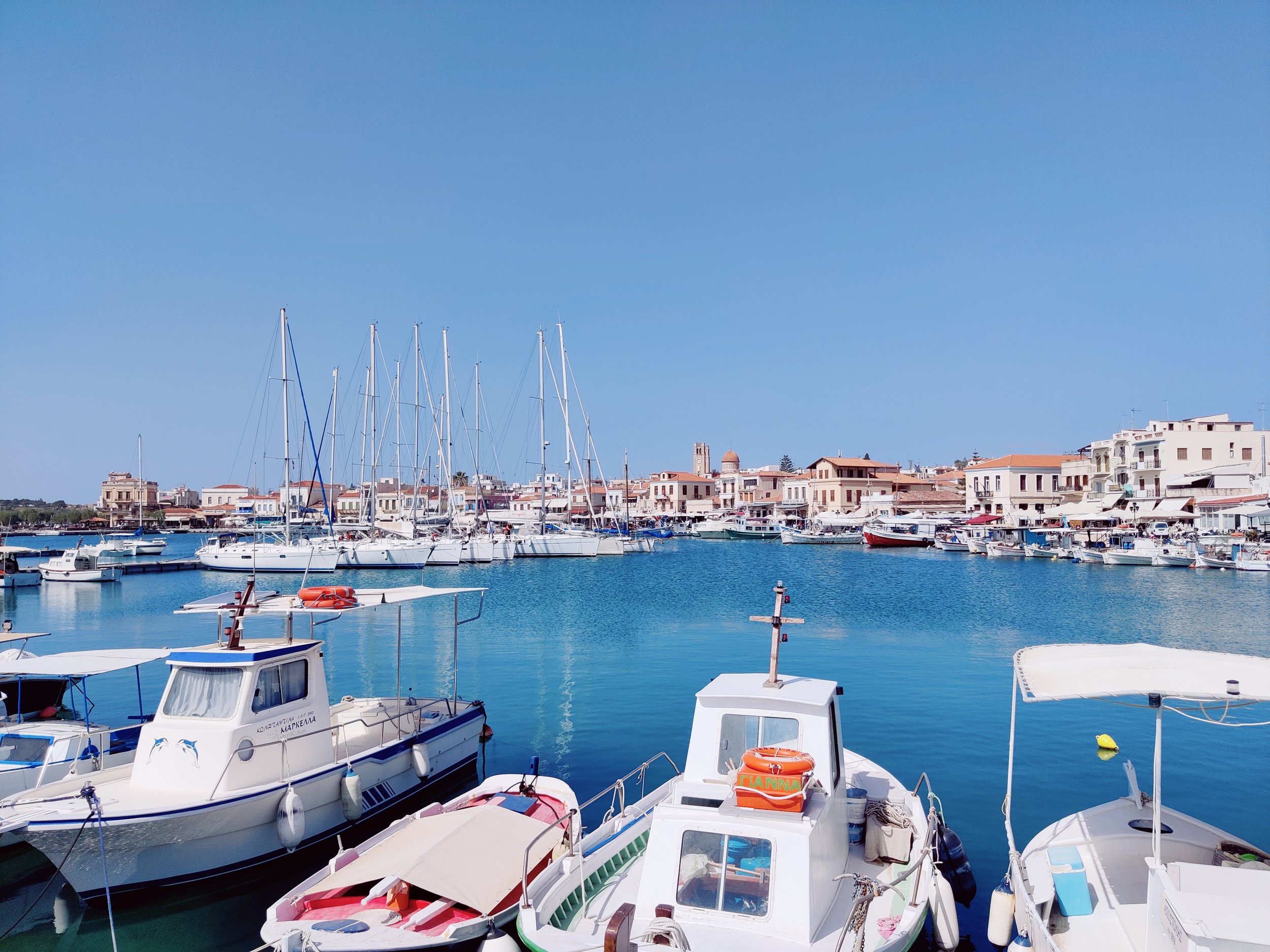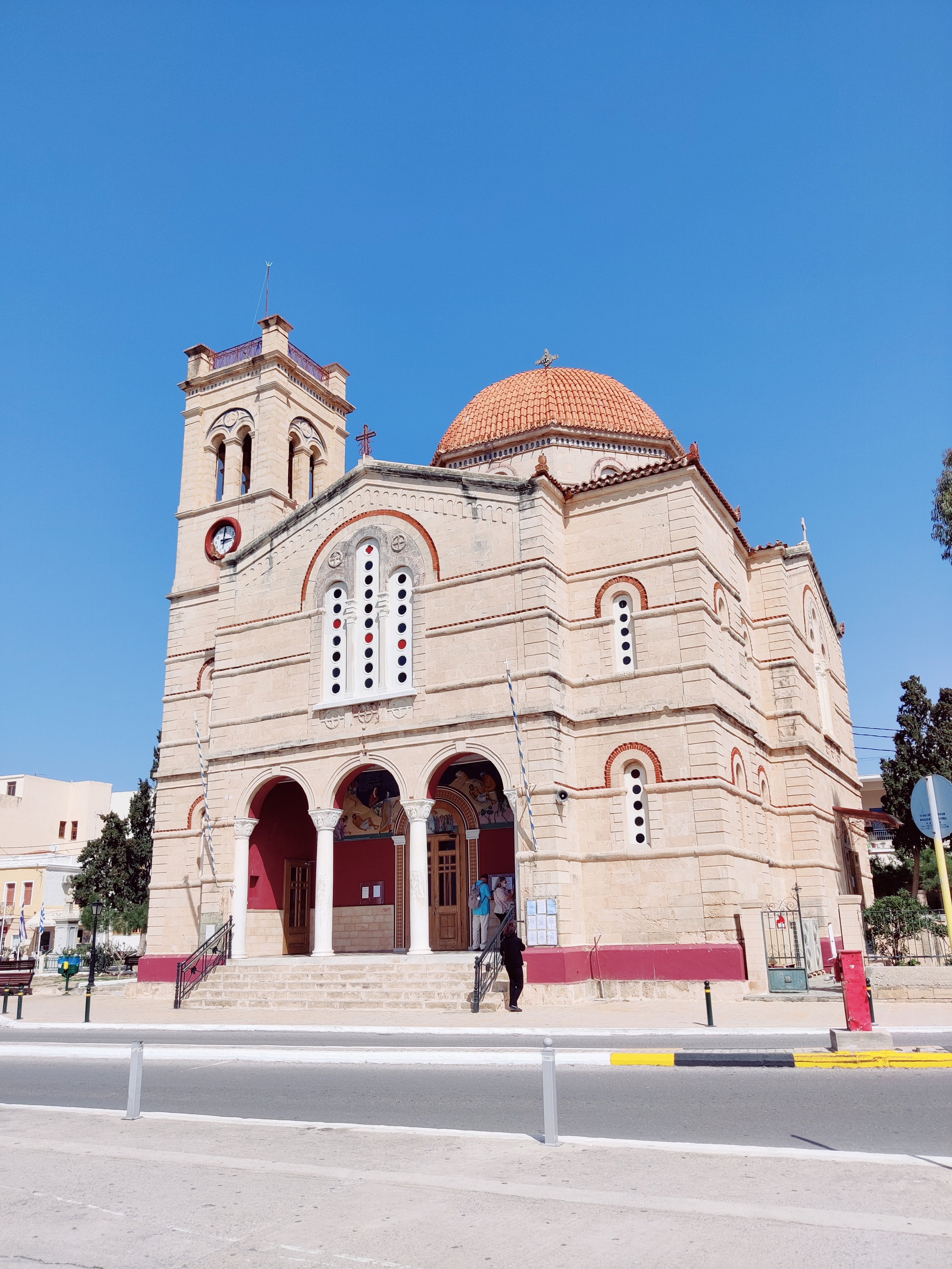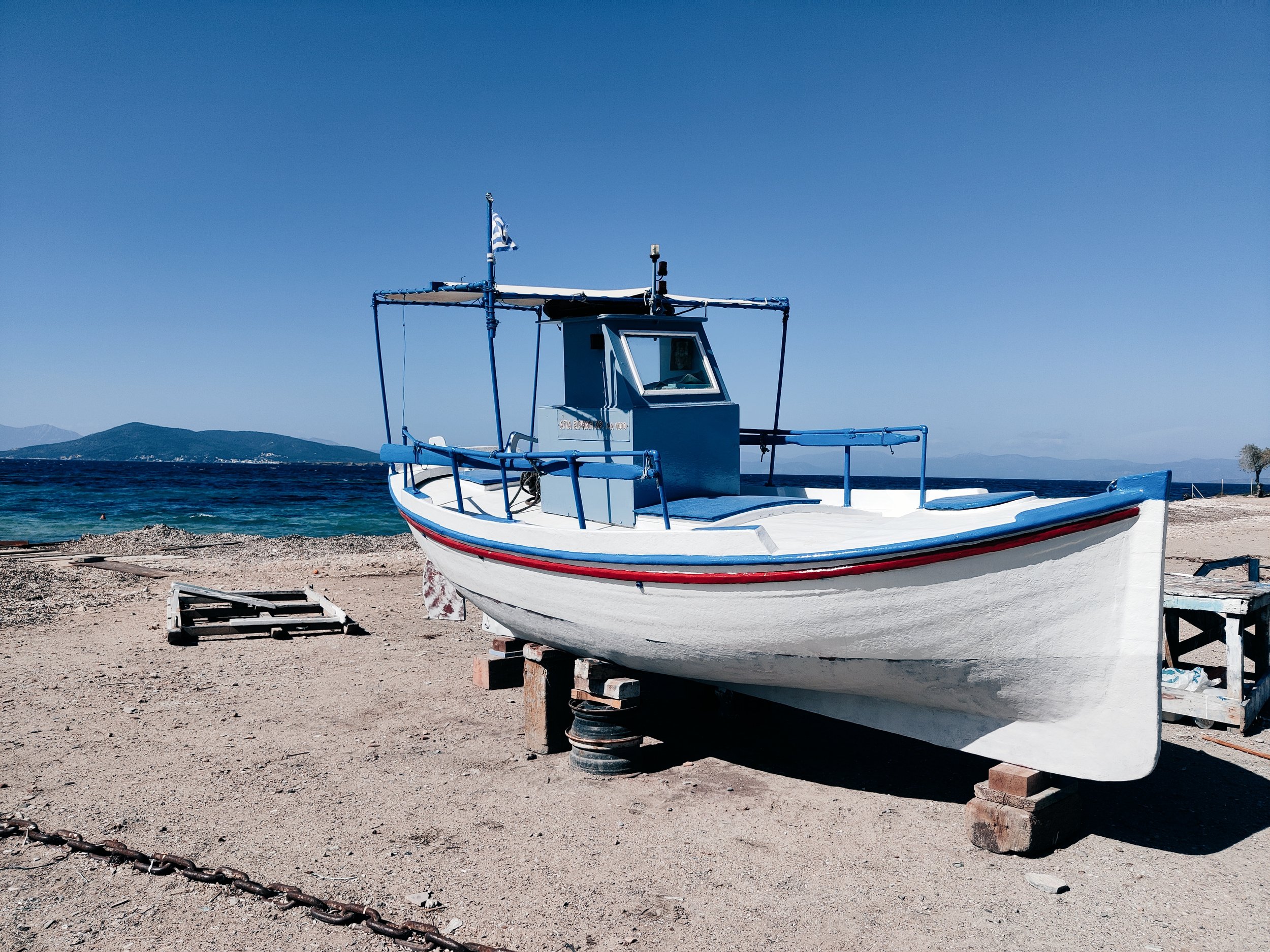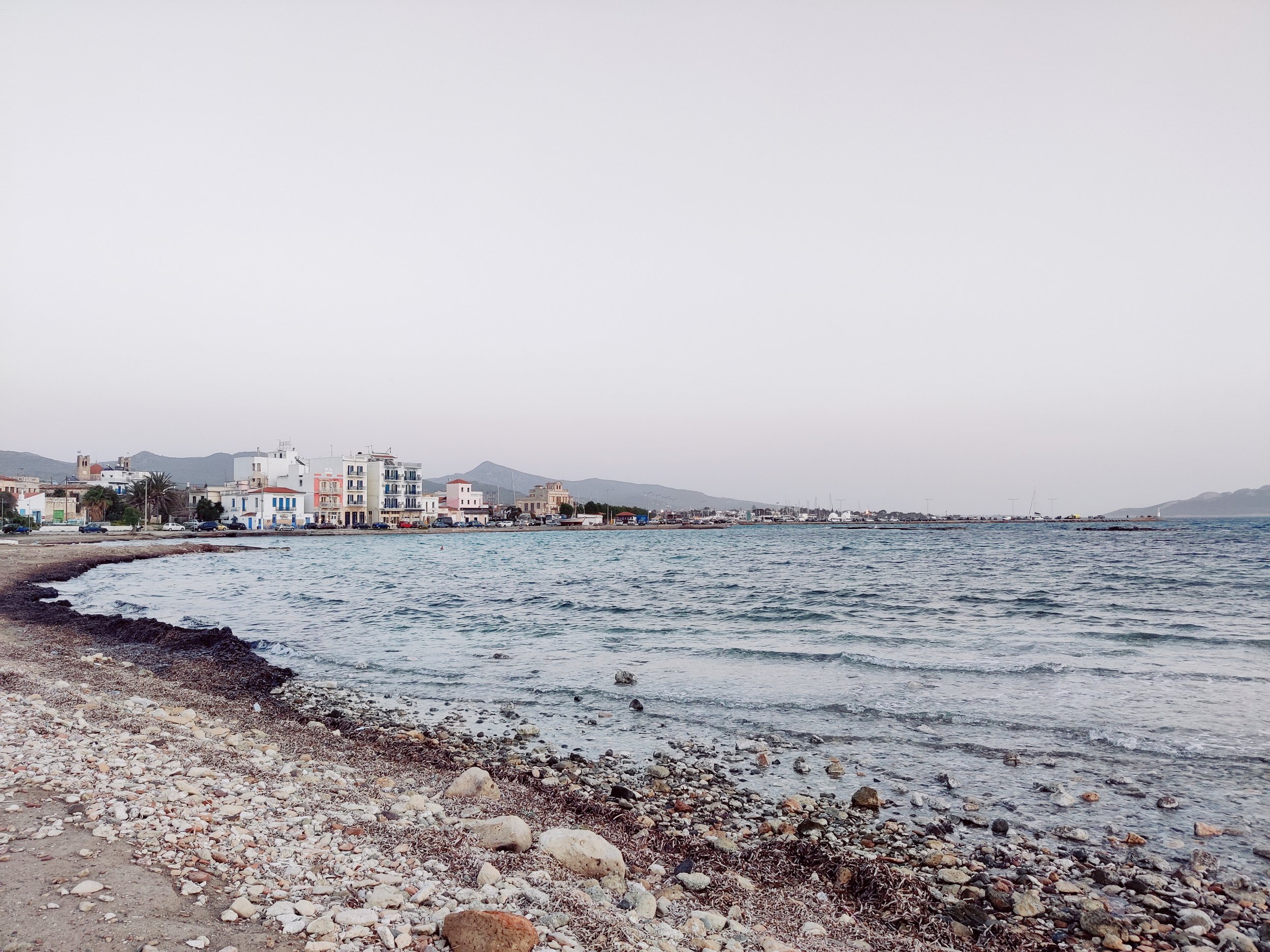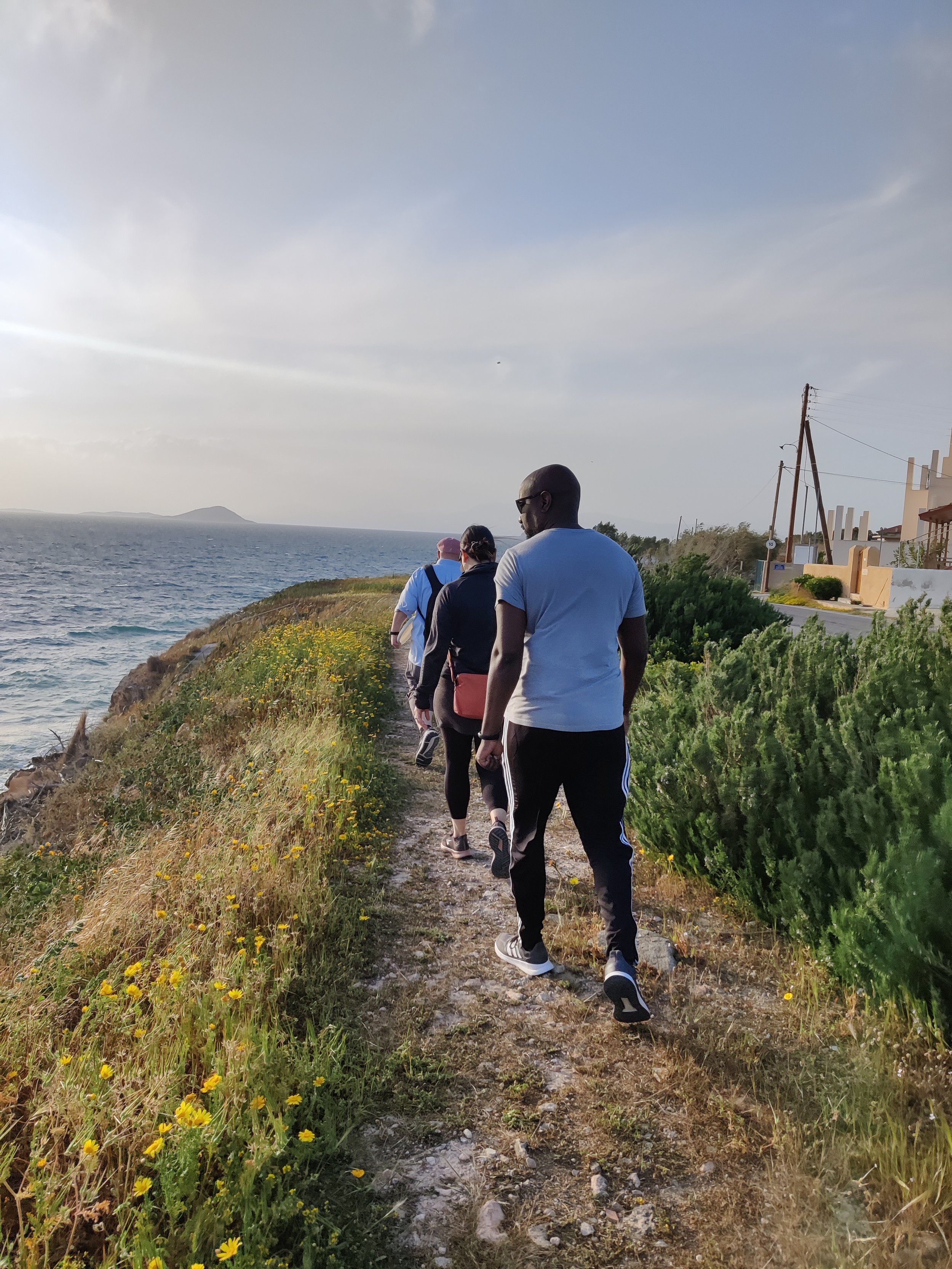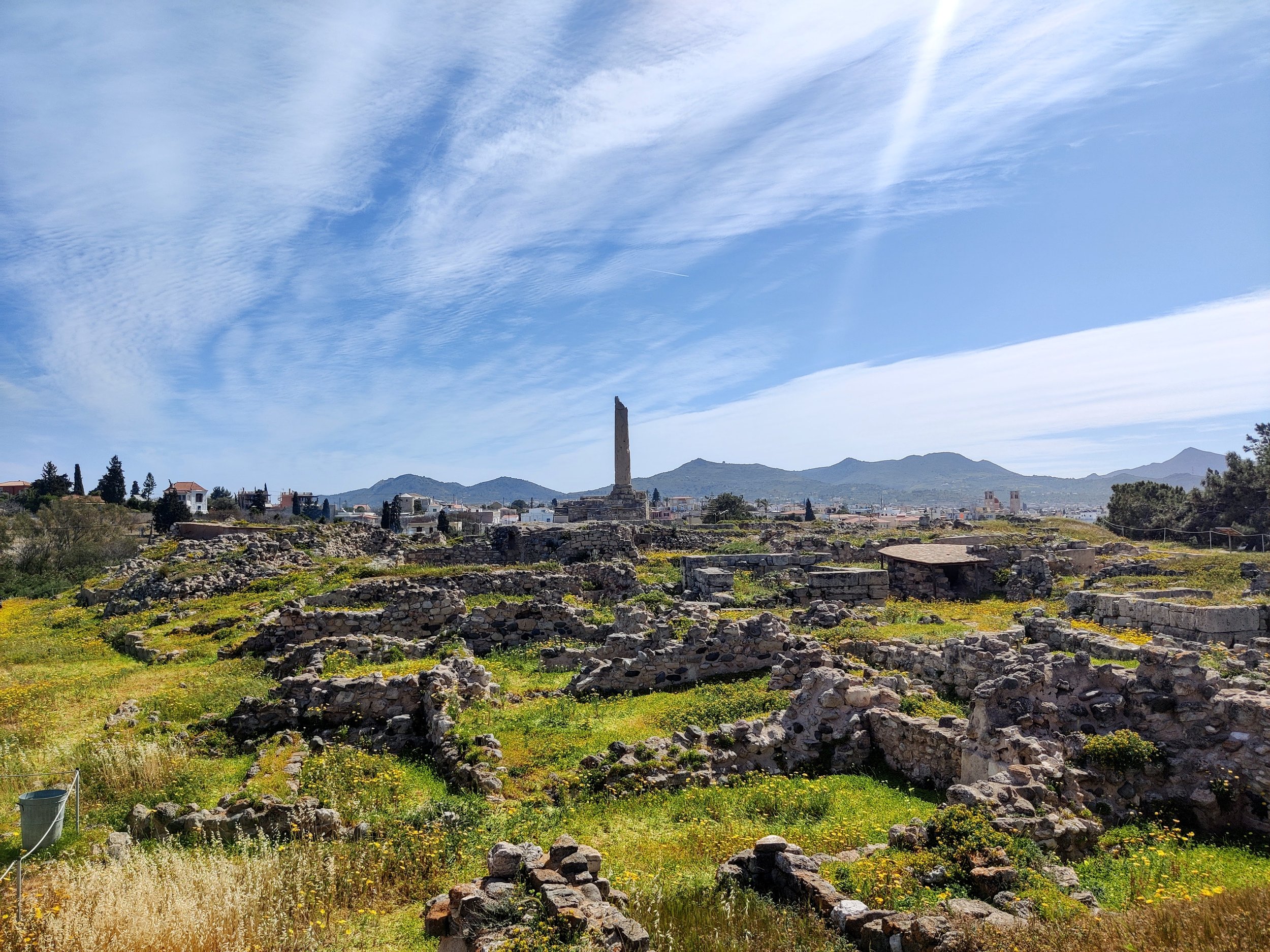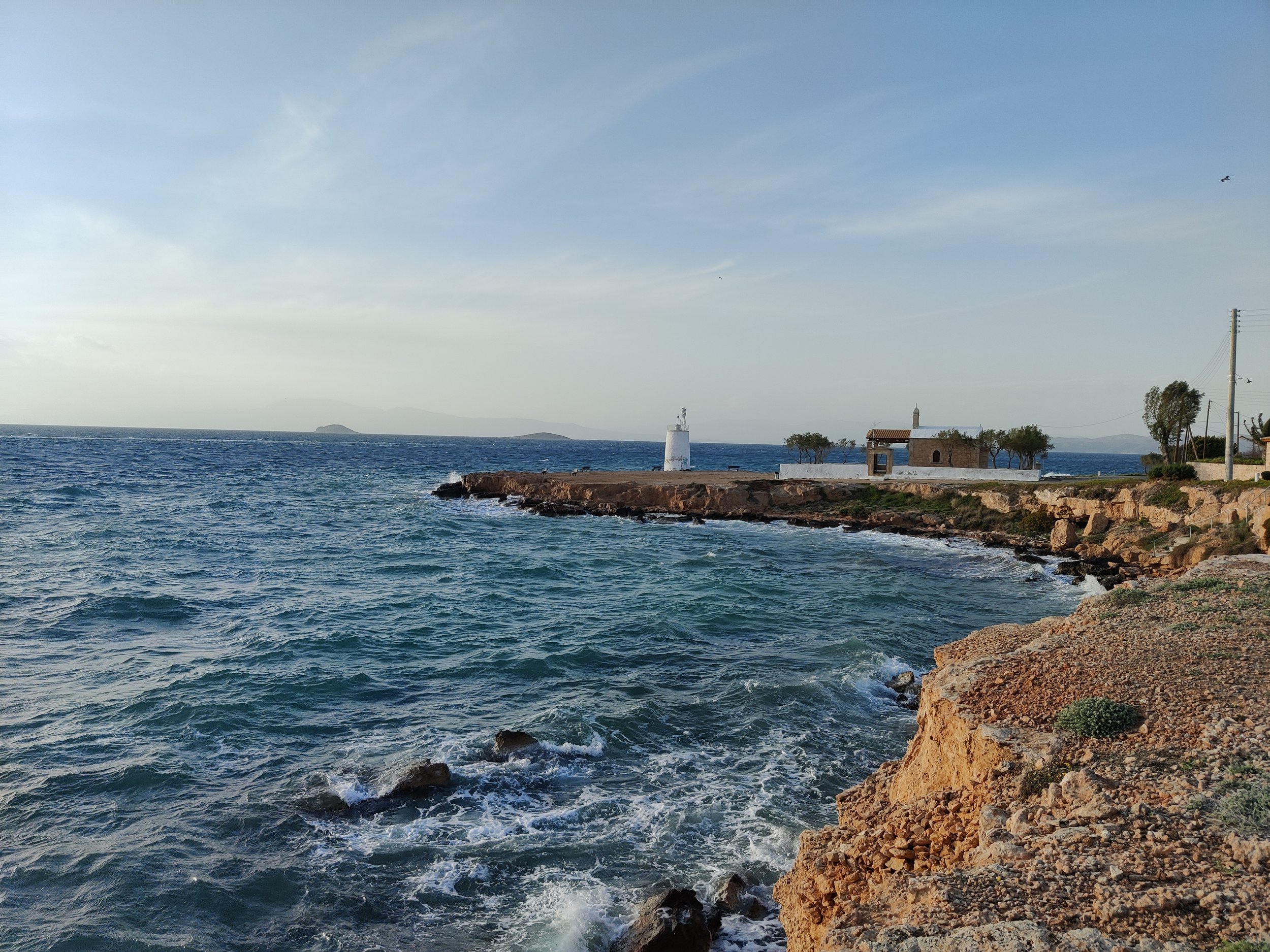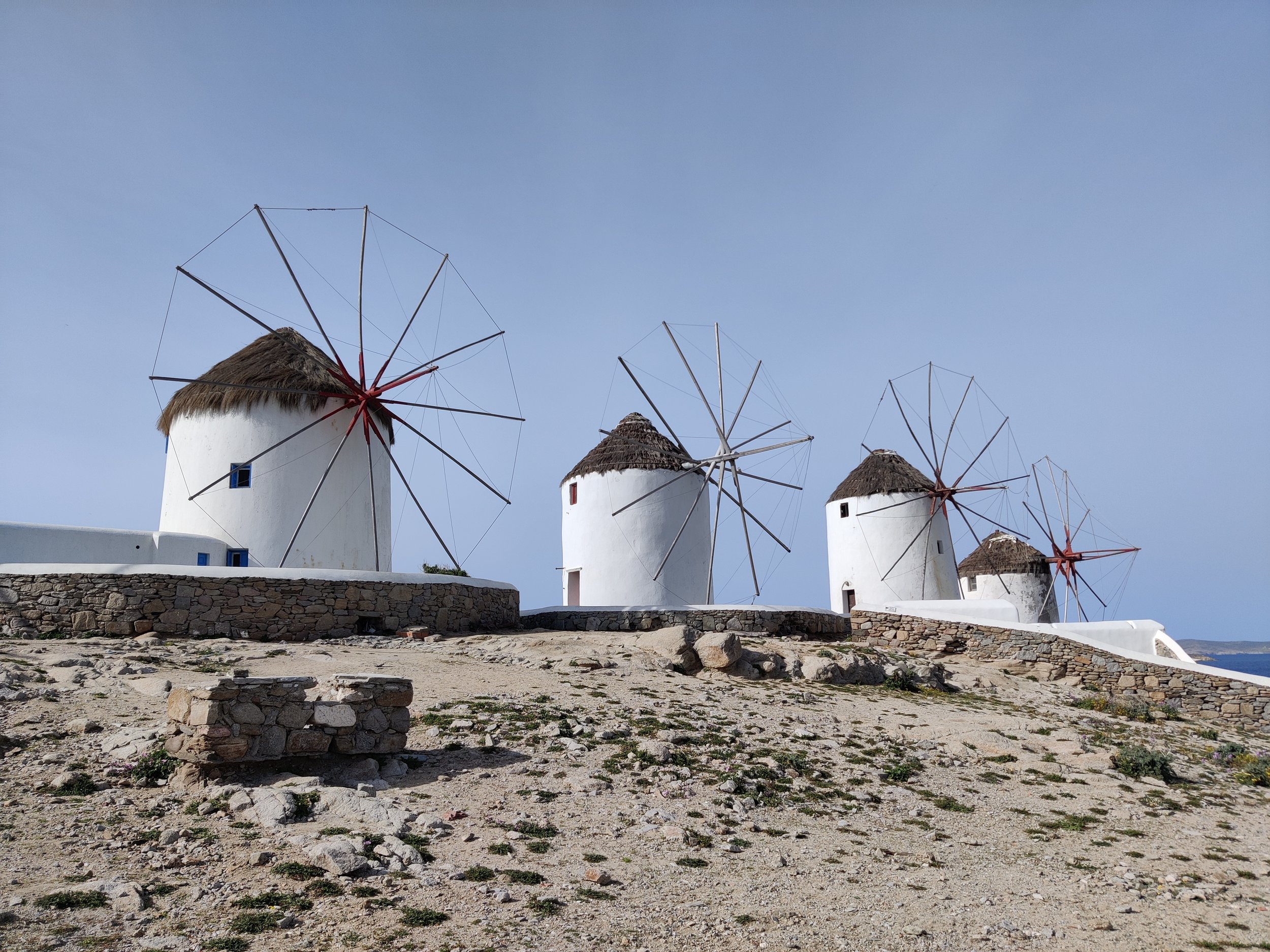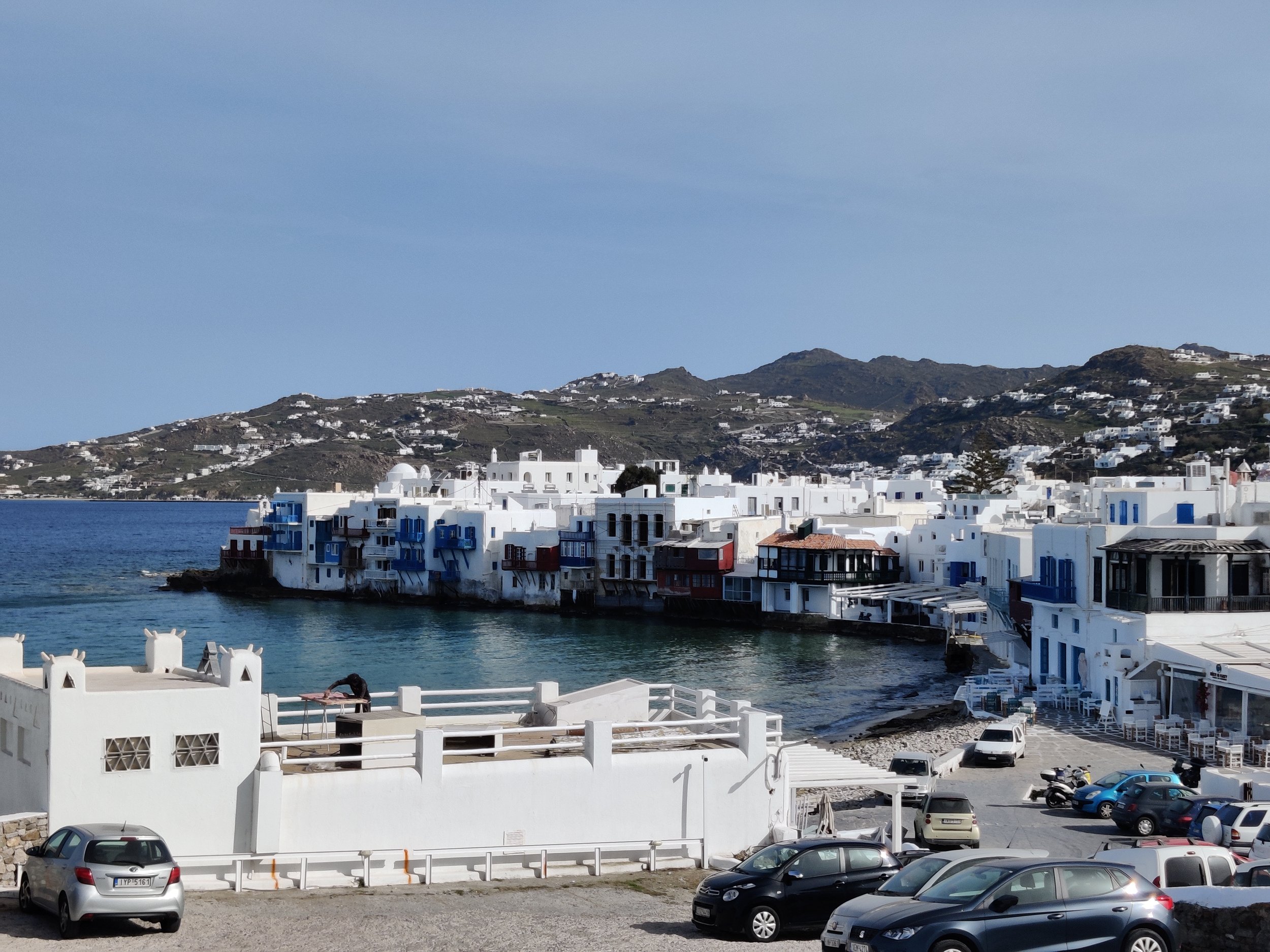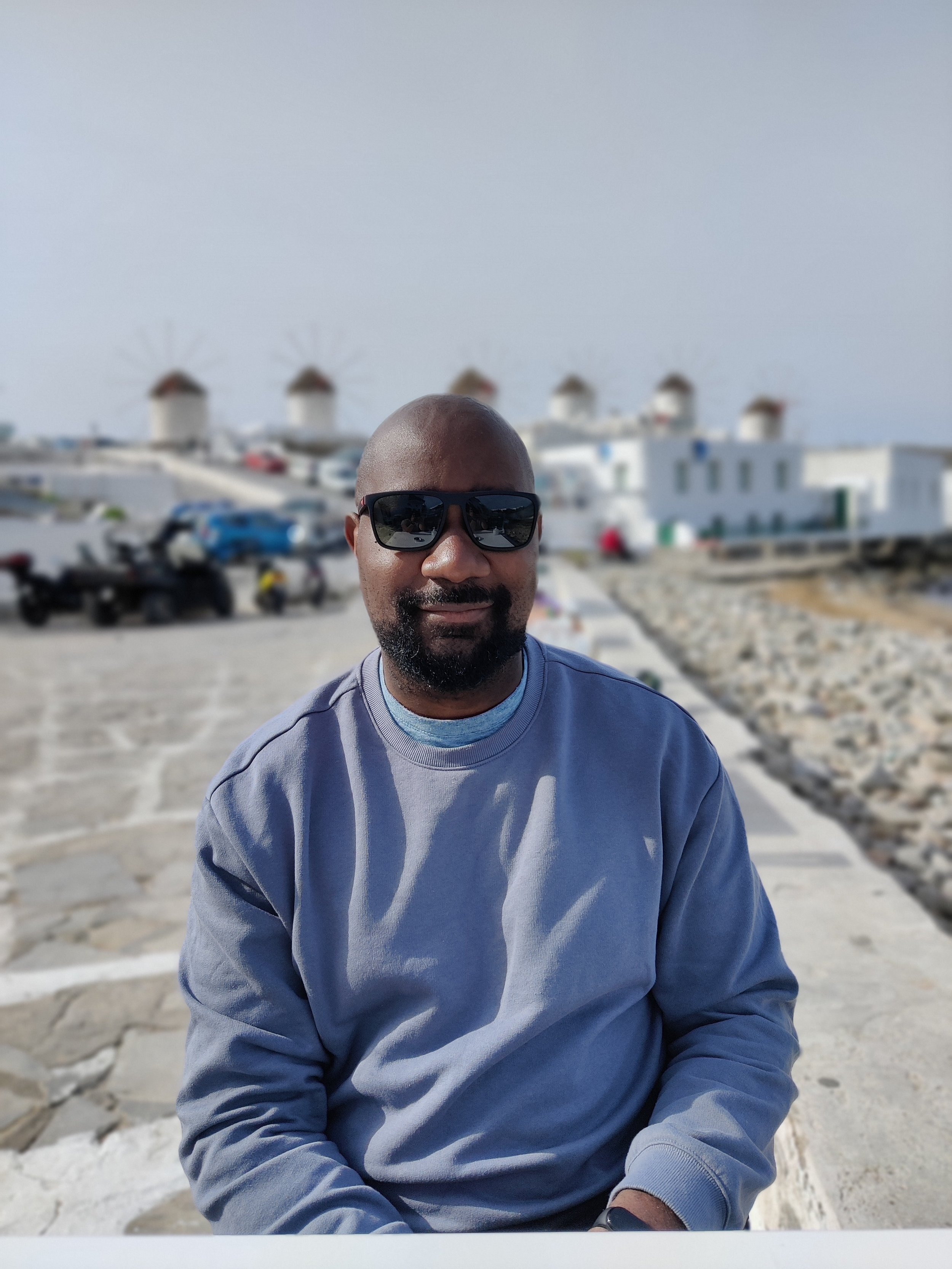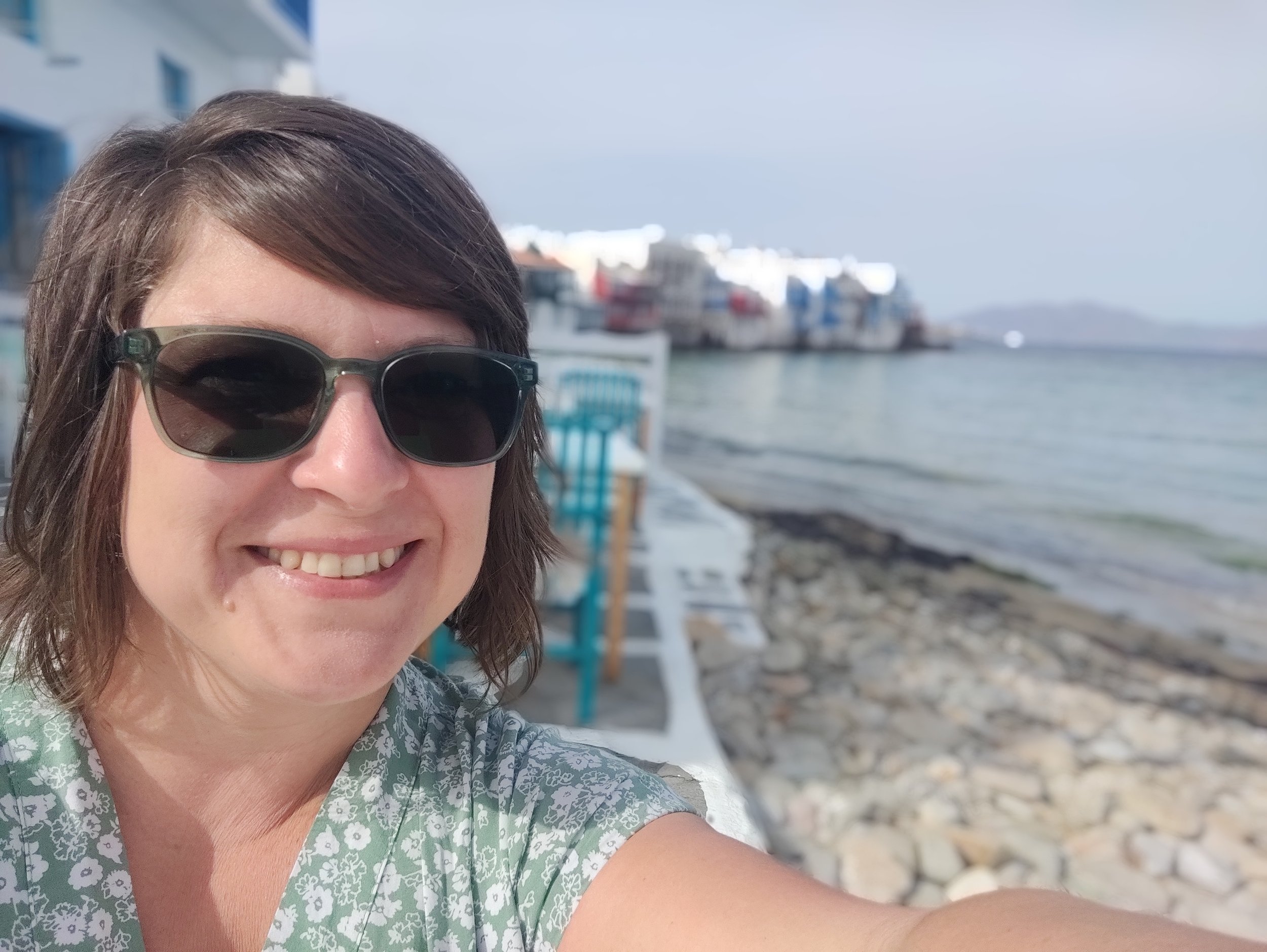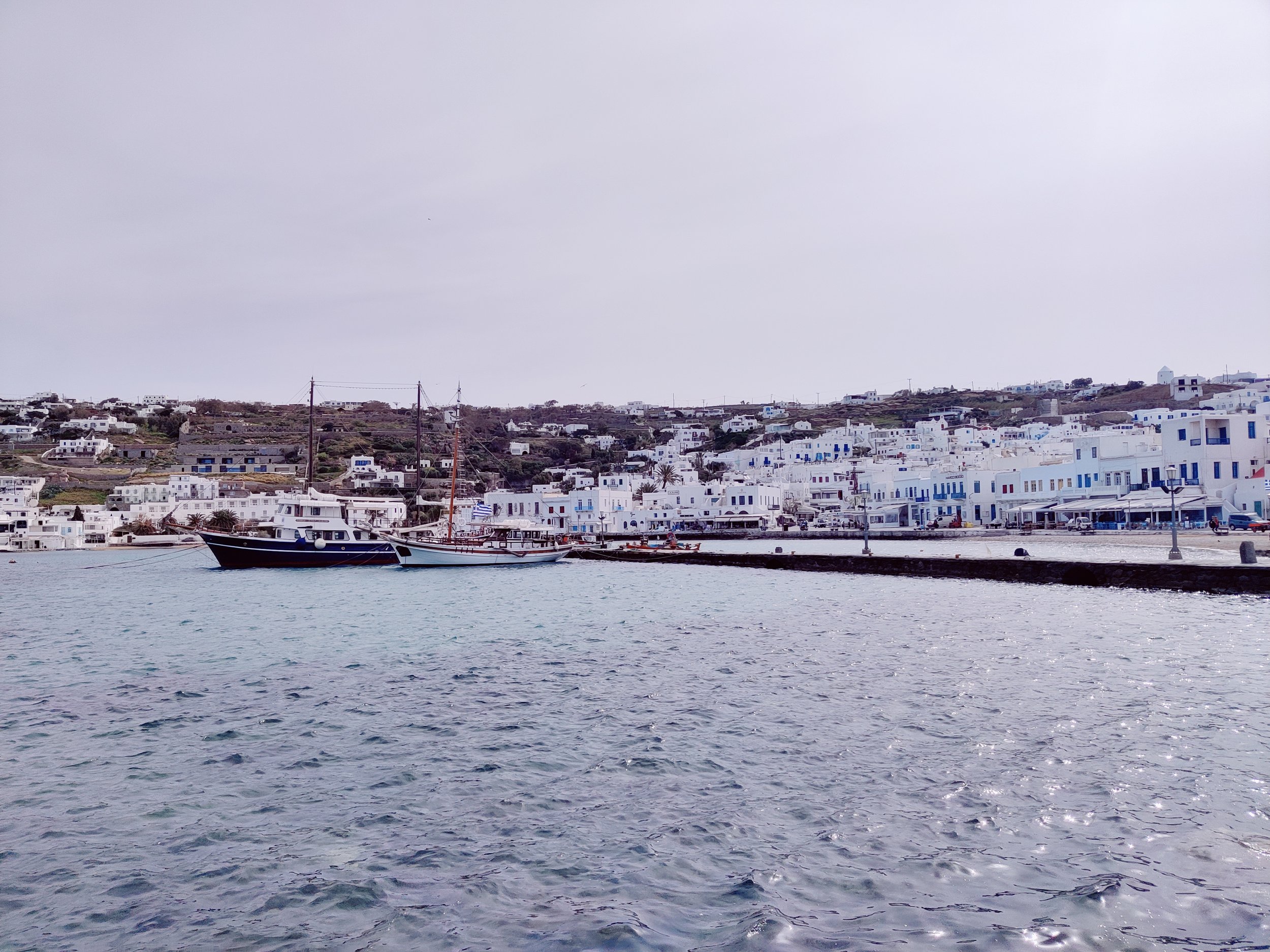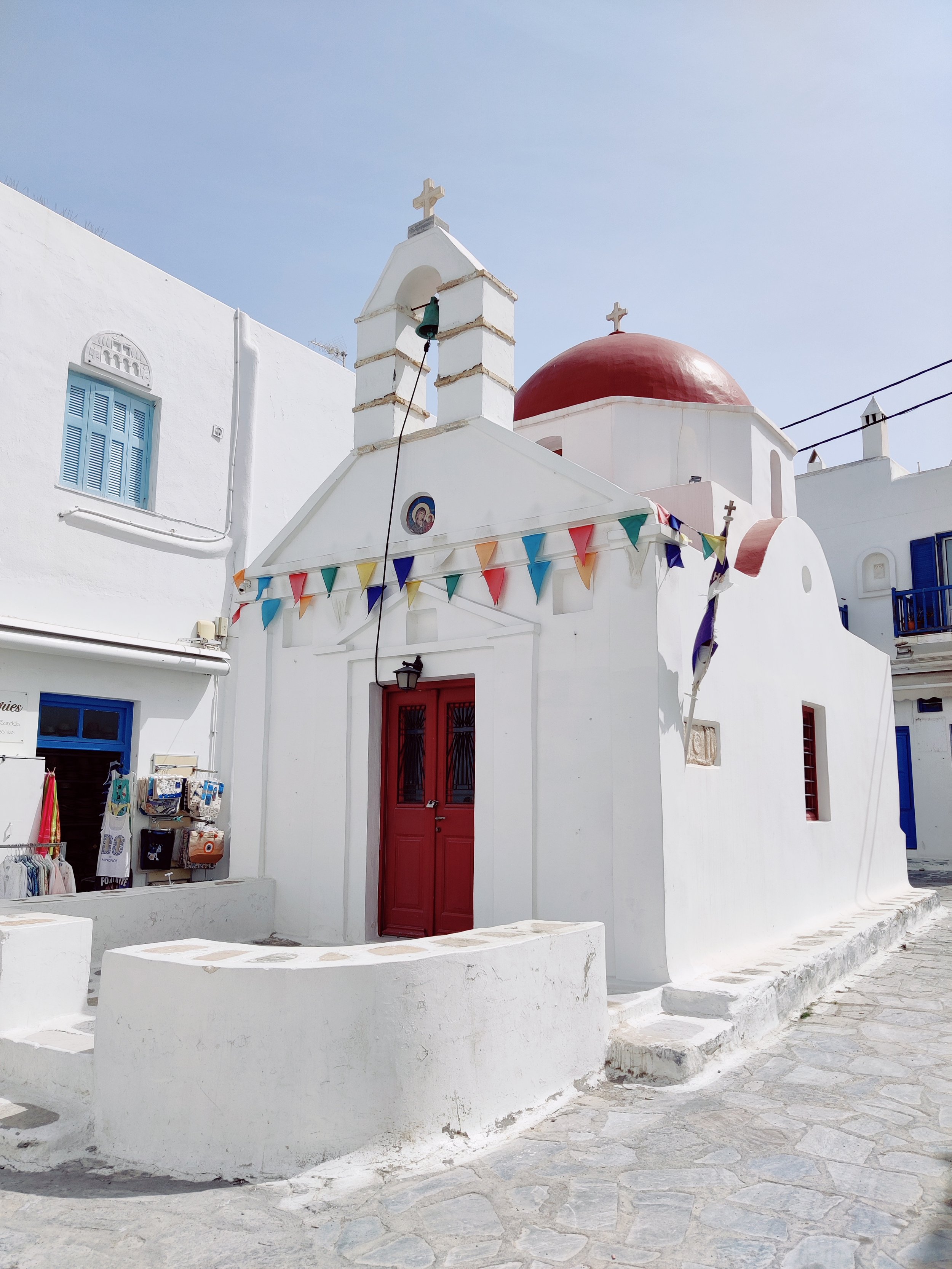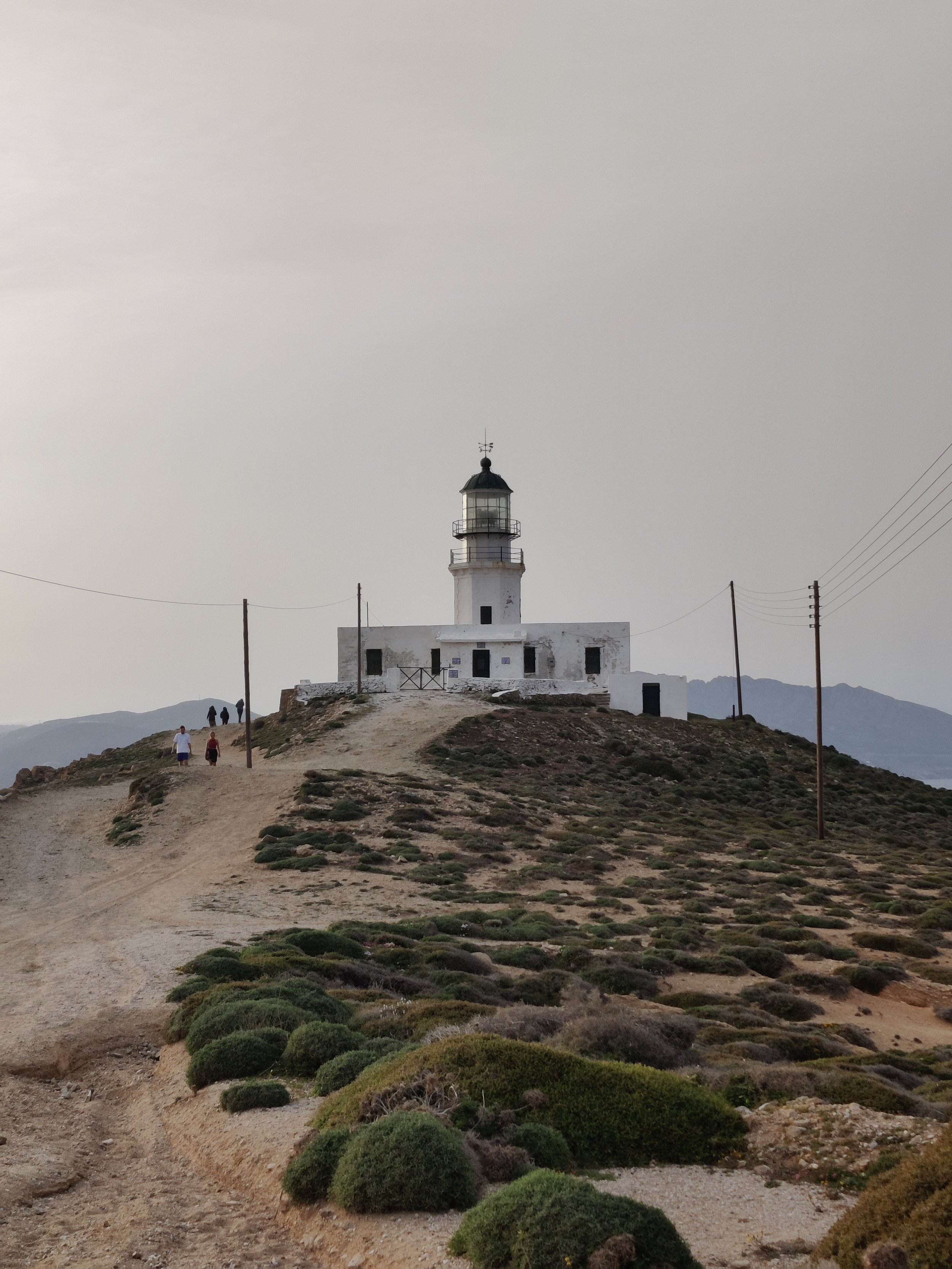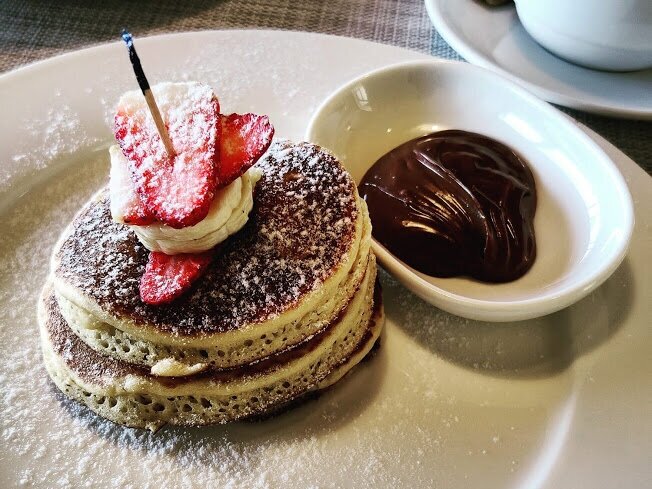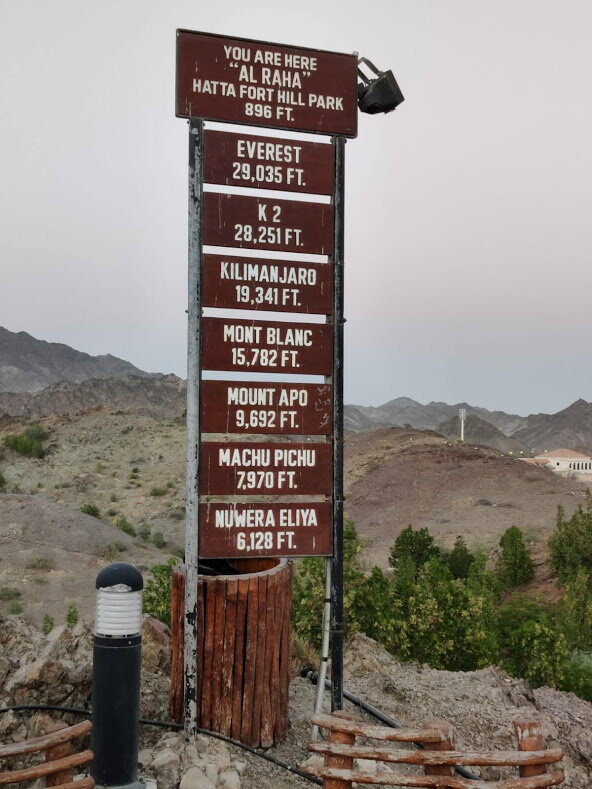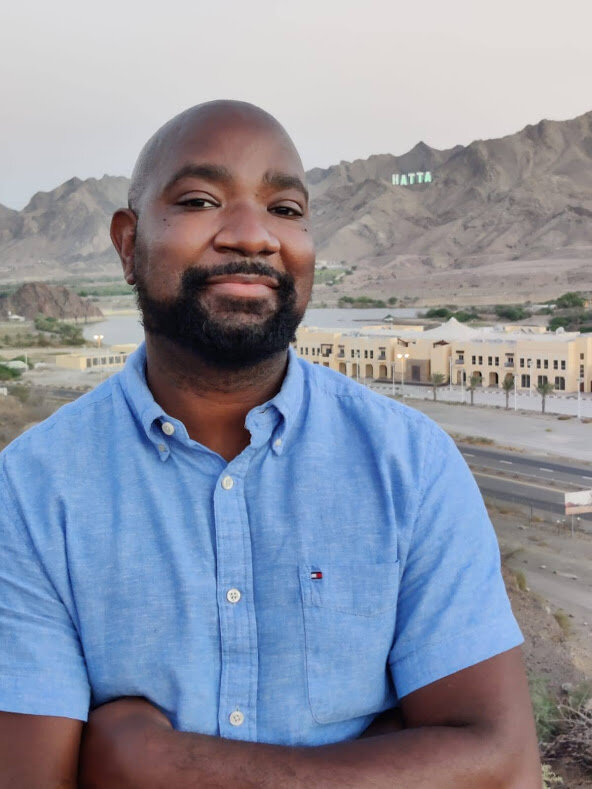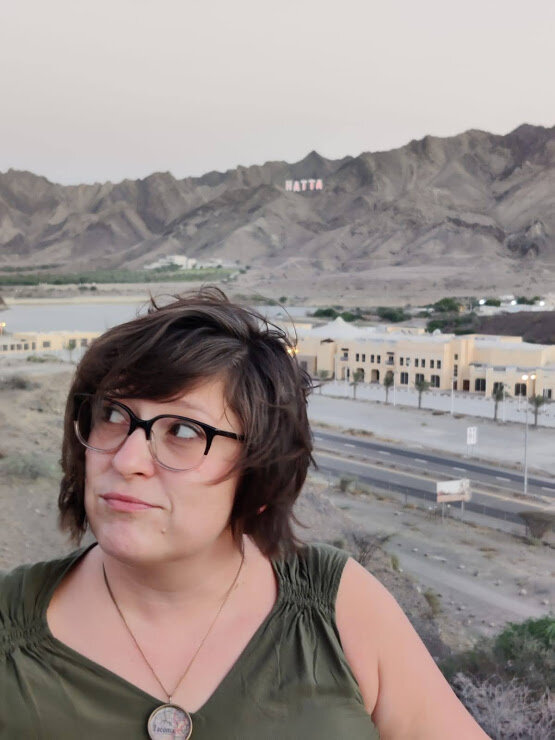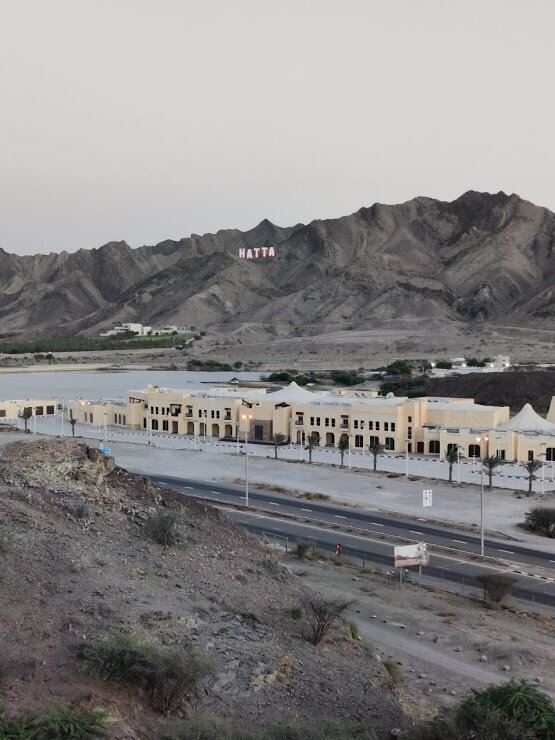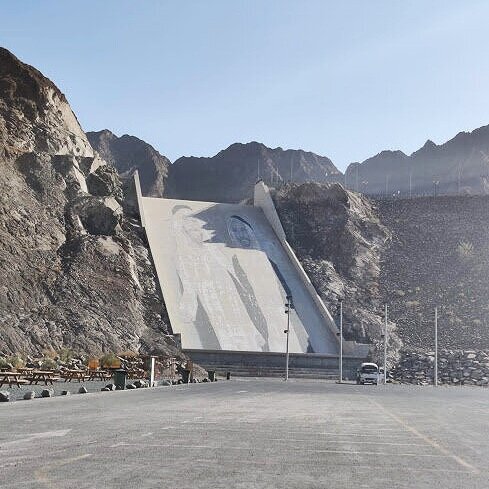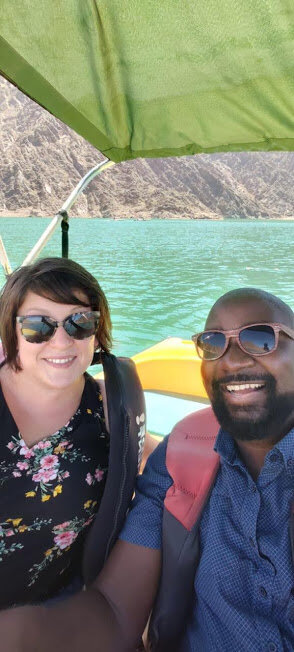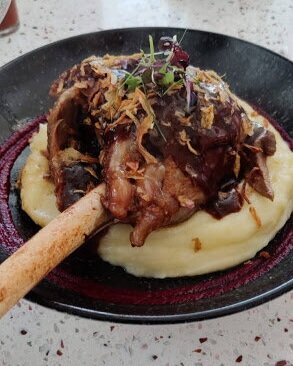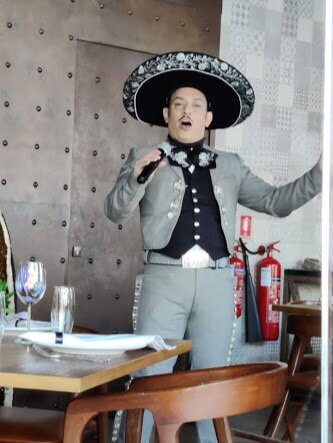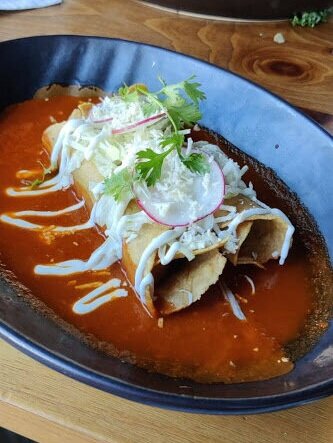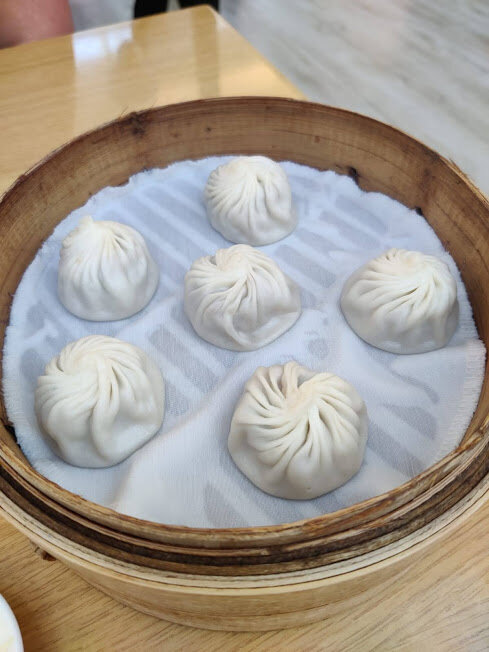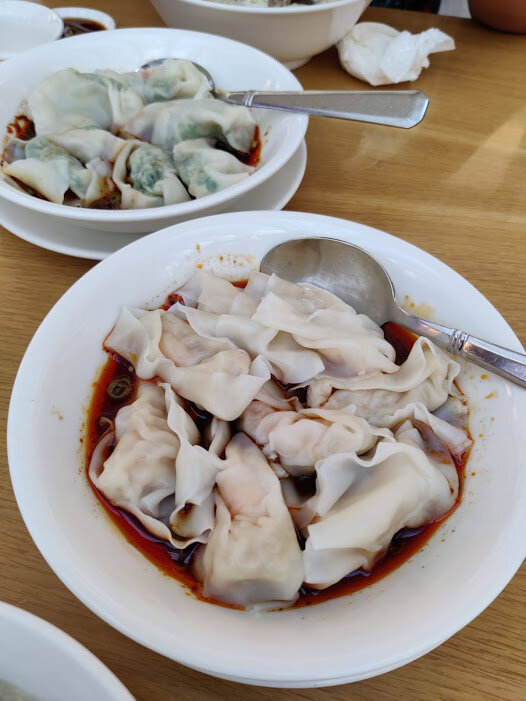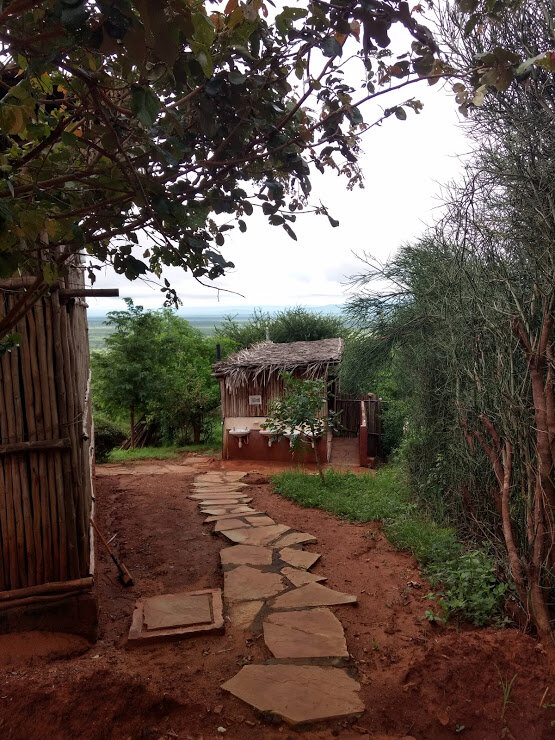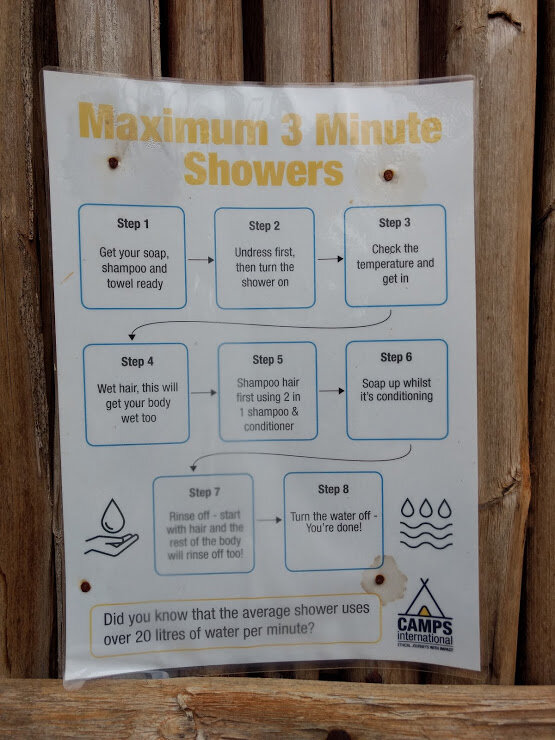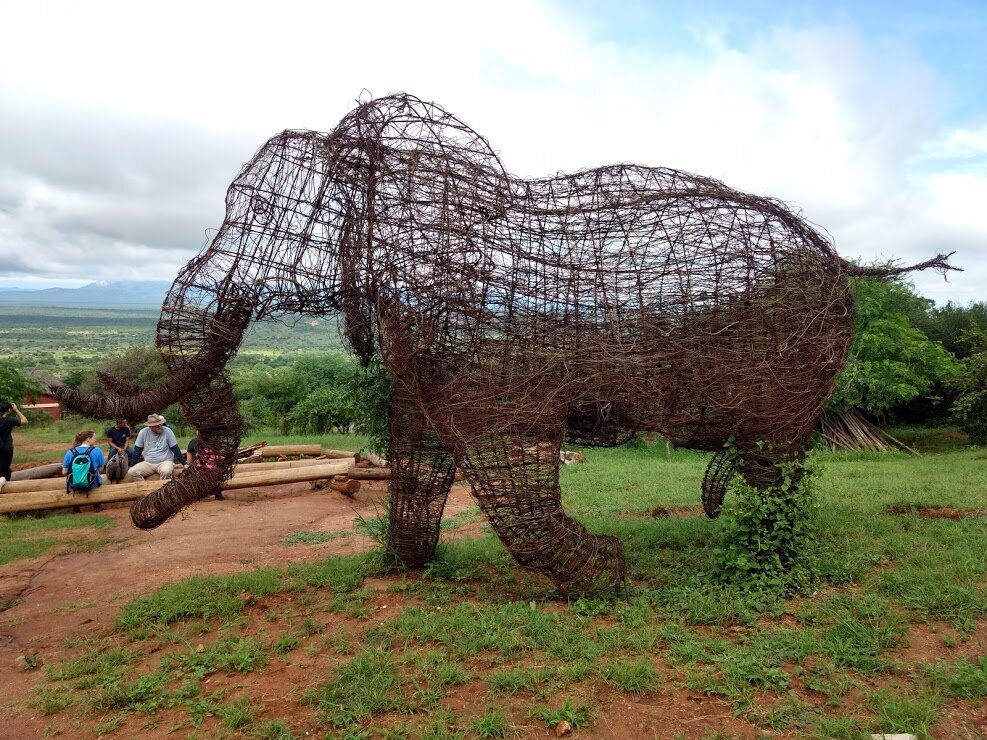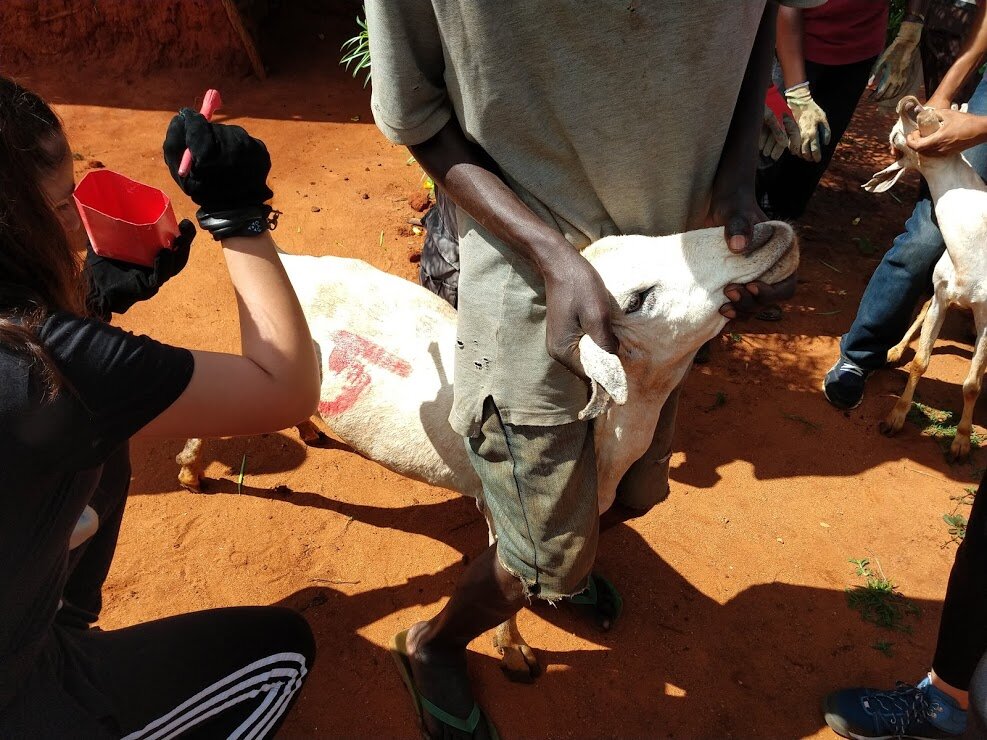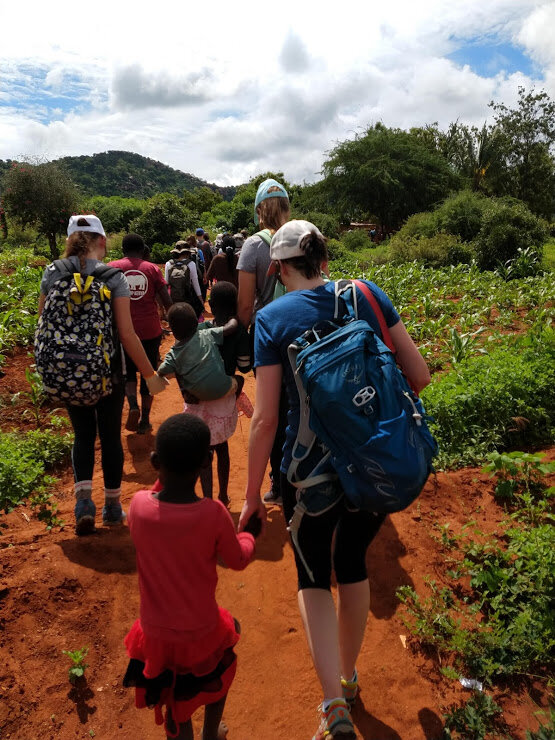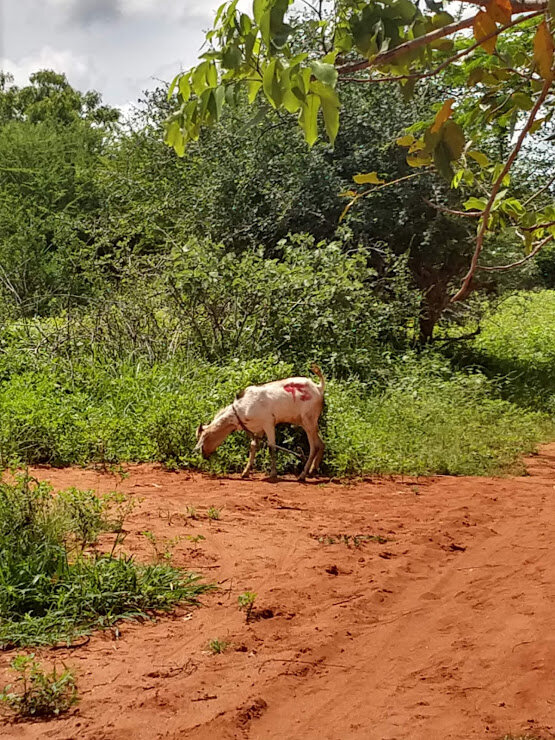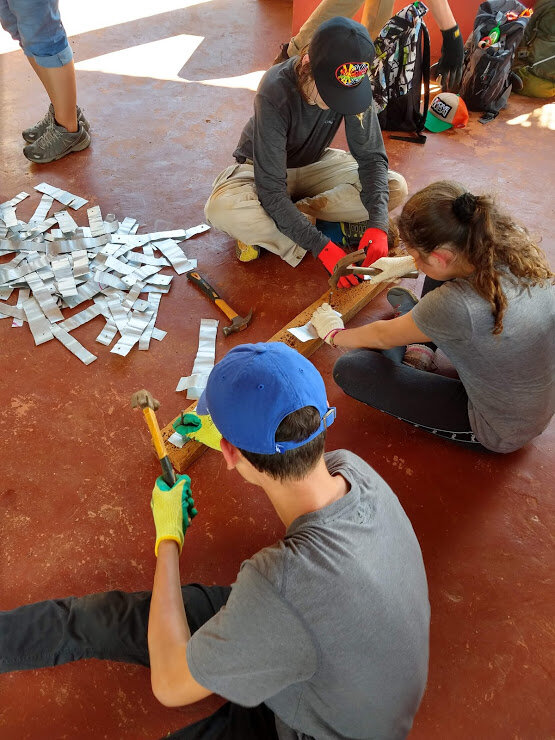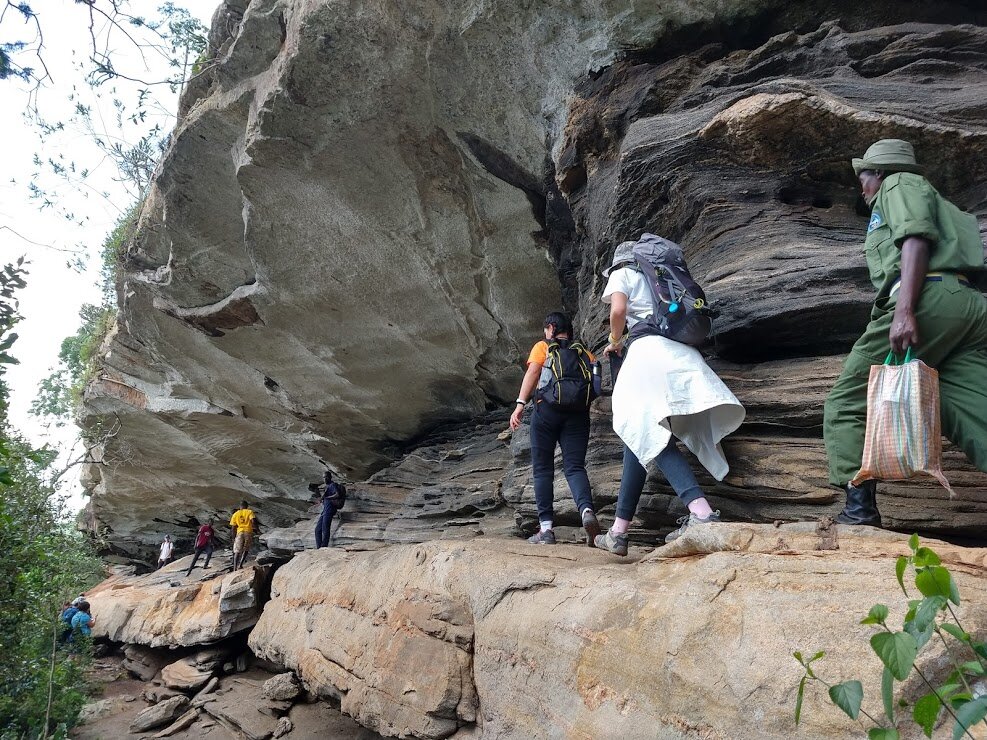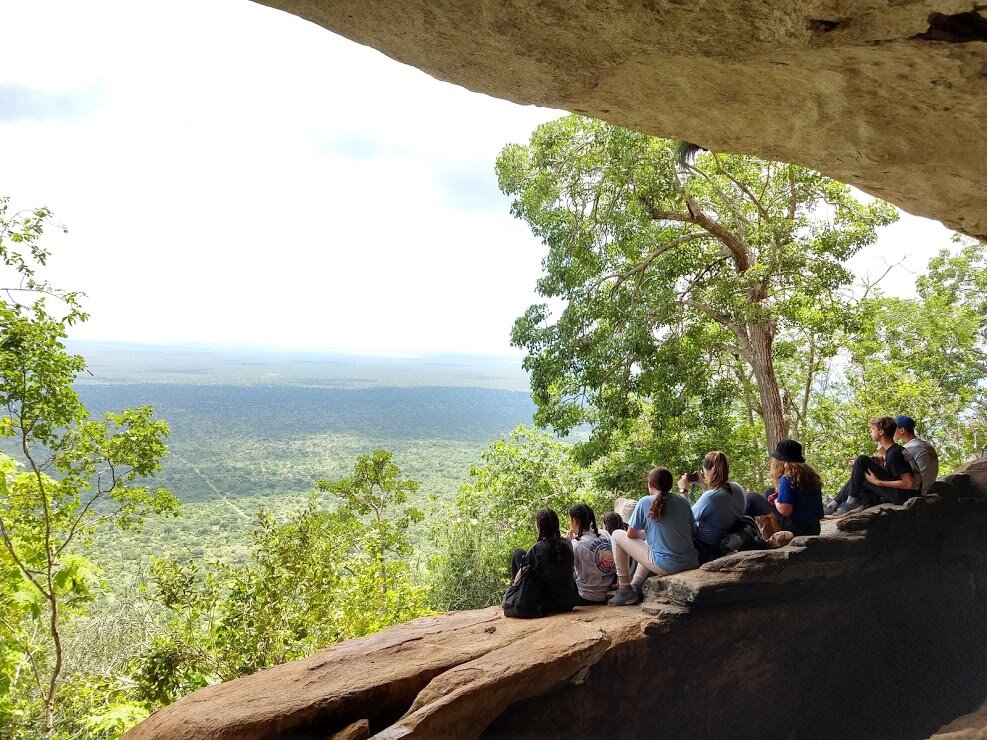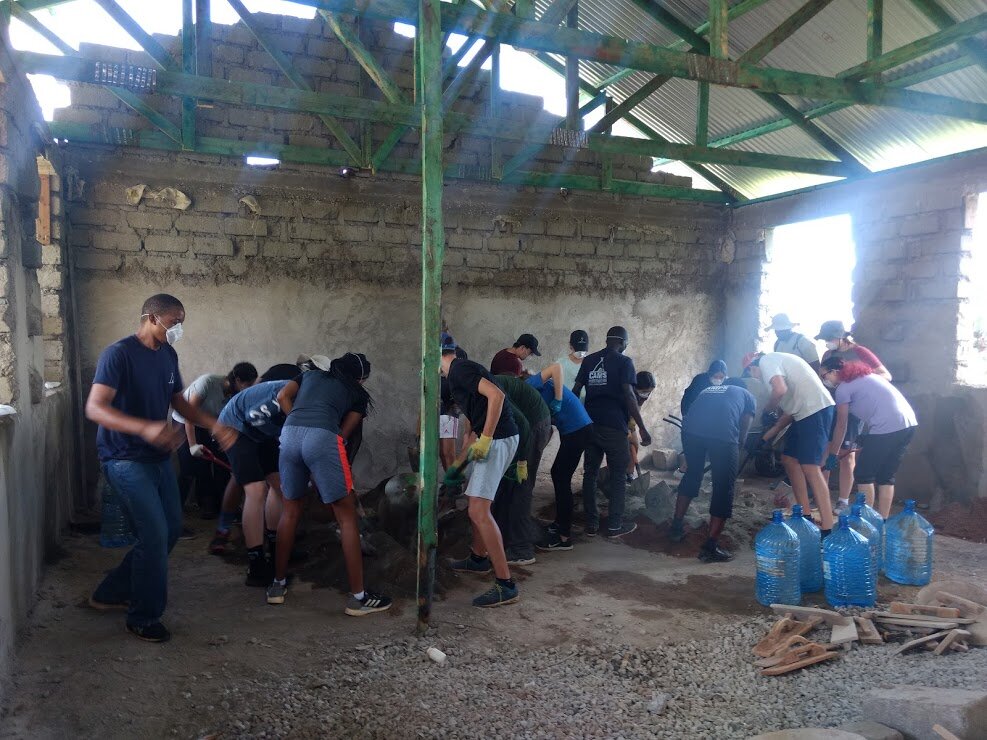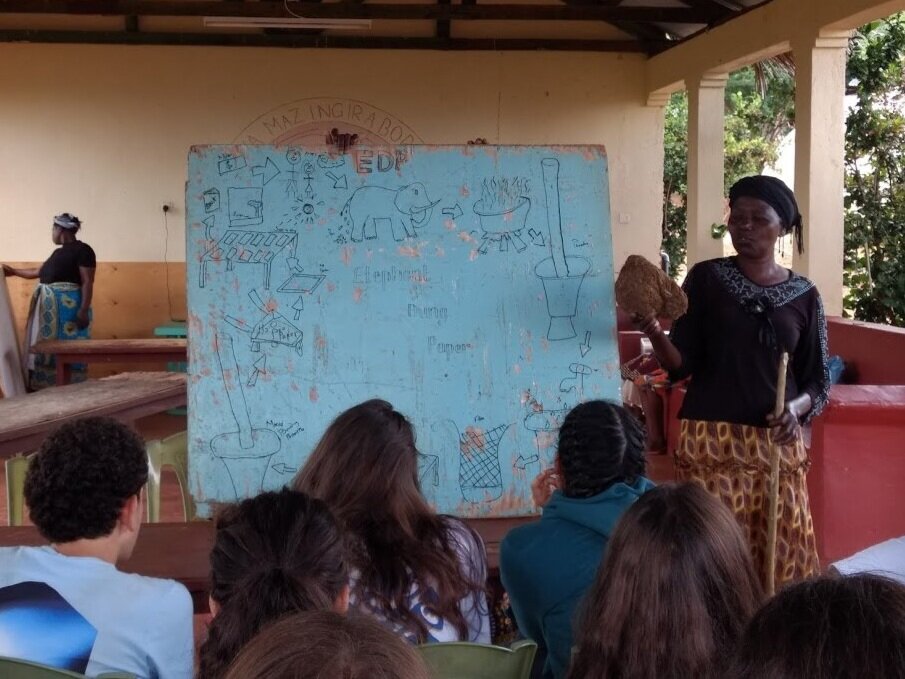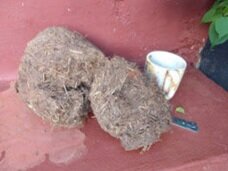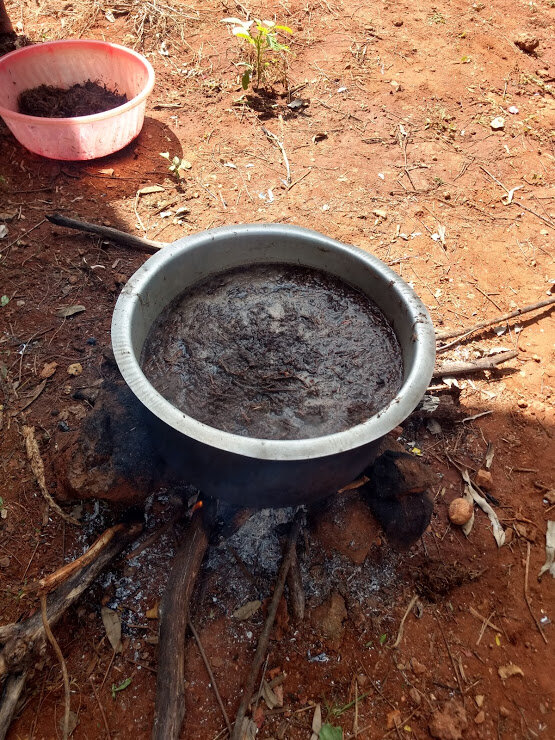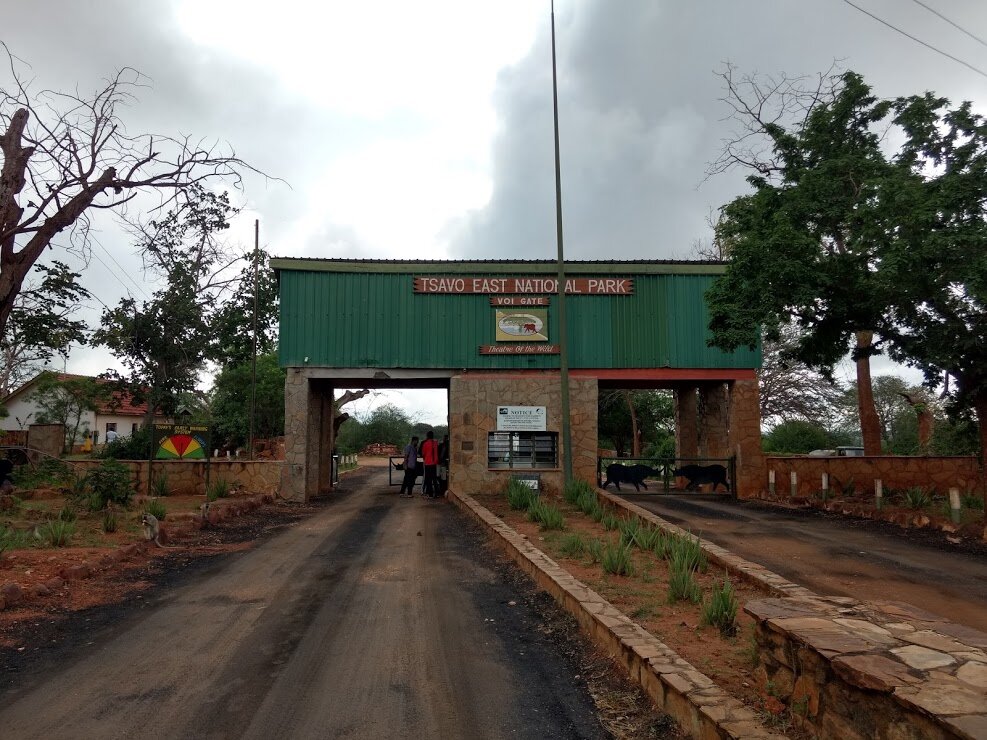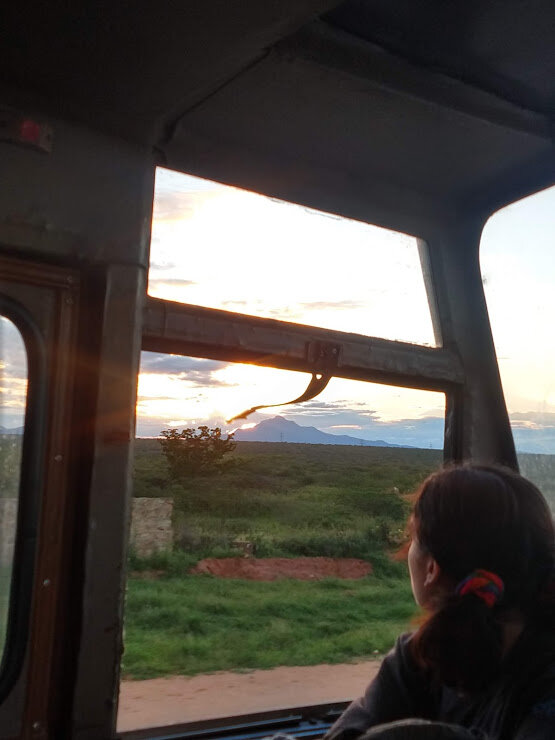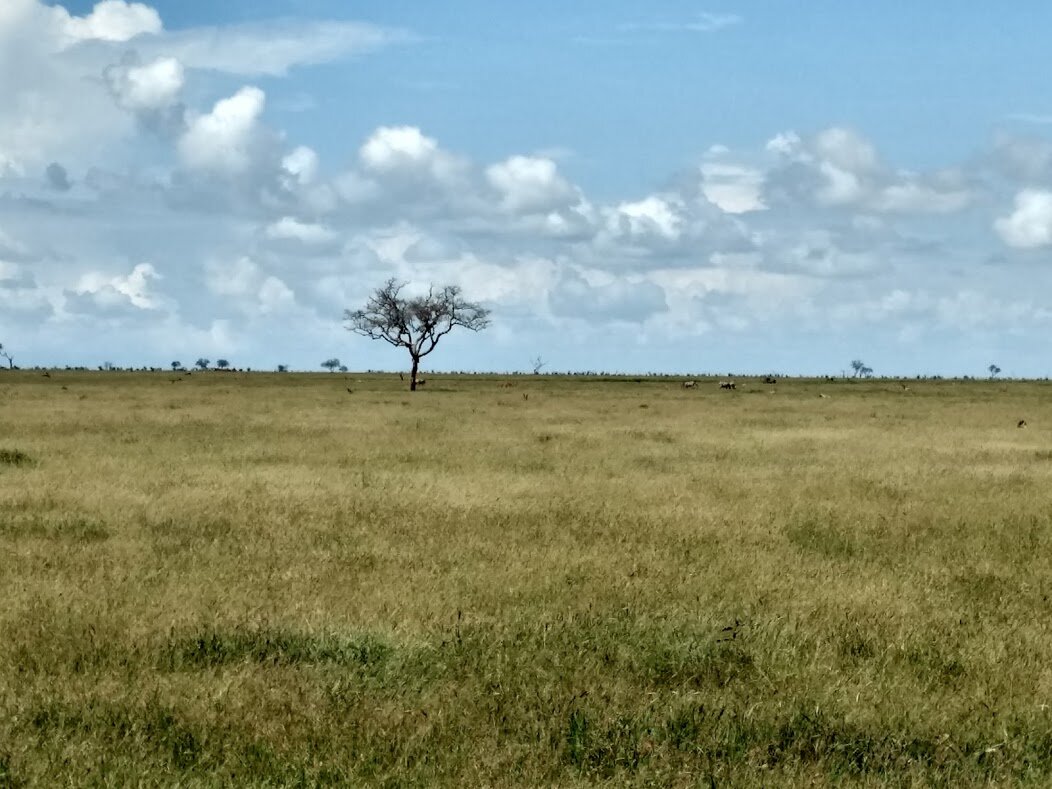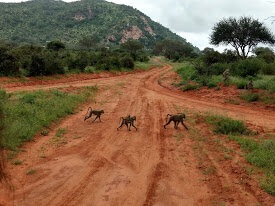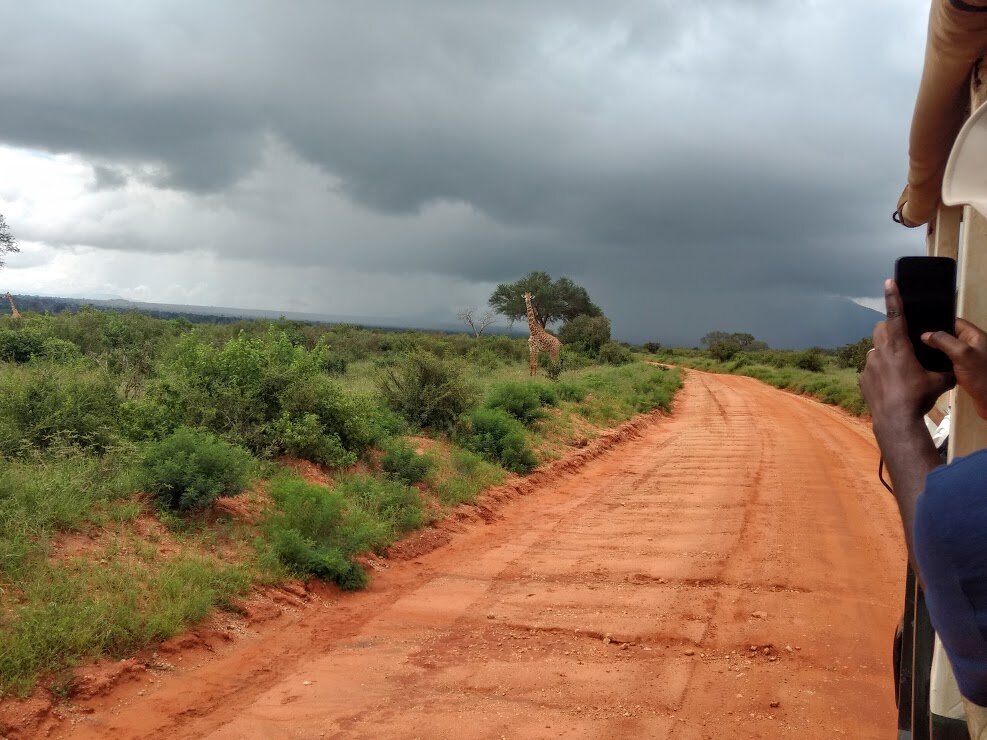Kuwait in a Weekend
For many, Kuwait brings up a particular image—for people of our vintage—it's likely pictures and video from the 1990 Iraqi invasion of the country and subsequent US led Gulf War.
But places are more than their darkest hours, and Kuwait is more than the grainy night-vision footage of missiles streaking across the sky—narrated by Christiane Amanpour—that we watched on CNN back in middle school.
When we moved to the Gulf, Kuwait was not on our radar for a visit but as soon as we arrived in the region, we met countless fellow Americans who raved about their amazing time teaching in the Kingdom. Those stories and the enthusiasm with which they were conveyed convinced us (Hope more than Nate), to hop on the just under 2hr flight.
The proximity is perfect for a normal weekend and that’s what we did.
As per usual when we travel, we ate our way through the weekend. Possibly due to its status as a dry state, the food scene in Kuwait is off the charts. Matbakhi by Sawsan came recommended and did not disappoint. The quality of the ingredients melded with the richness of the flavors. It doesn’t matter if you’ve tried kebab or mashi (stuffed marrow) before, you have not eaten it like this. Is this a whole chicken on pizza? No, friends, this is musakhan, a traditional Palestinian dish that somehow we’d missed in our six years of living in the UAE.
We tried to visit the Kuwait National Museum but it was closed for renovations.
Taking that as a sign from God, we decided to head towards some shopping.
First, we headed to the Souq Al-Mubarakiya where we wandered the stalls, admiring intricate thobes and abayas, and colorful arrays of olives and fresh fruit.










We stopped for coffee, tea, and the best date cake you could imagine.
Then, we experienced The Avenues, a 1.2 kilometer shopping center, the second largest in the region (apparently Iran Mall in Tehran is the size of the Starship Enterprise).
Nate in shock
For Tacomans, you probably think of the Tacoma Mall or maybe our Califonian readers are thinking about The Block (aka The Orange Outlets), in Orange County and Mall of America is ranked 10 places below the Avenues.
Art Installation, The Avenues, Kuwait
The mall is large enough that—for reasons we still don't understand—it has three H&M stores and a Hilton Garden Inn.
What’s perhaps different than in the West, is how folks use the shopping mall. It’s a place to be seen. Everyone is out in their finery. Couples are strutting their cute outfits. Kids are dragged along, strollers abound, and there was more flawless makeup and expensive footwear than we’ve ever seen.
View from the escalator
We on the other hand wore our customary shabby American wear. Nate especially in his customary unlogo’d t-shirt and comfortable Gap pants.
Since we hadn’t reached out vacation level 20k step count for the day, we strolled along the corniche (boardwalk) towards Kuwait Towers taking in the soft light of sunset and enjoying the sounds of laughter from all the families picnicking on the beach.
We didn't do anything extraordinary but yet found the time deeply enjoyable.
What made the trip truly worth it, was traveling with one of our dear friends who lived there for nearly a decade. Seeing the country through his eyes and stories, made it special.
It is unlikely that we will return to Kuwait. We kinda feel like we saw the whole joint but we remain grateful for the opportunity to have visited.
On to the next.
Don't Spill the Tea
Technically, Nate did spill the tea about the ins and outs of our weekend away in Samarkand and Tashkent, Uzbekistan. What he didn’t share was the national obsession with tea.
Every country has a national beverage. You might be imagining arak, raki, aguadiente or maybe Miller Light. But according to Pew Research (I know, it’s so pretentious to embed this link), thanks to colonization the world can be divided between tea countries and coffee countries. With the exception of the Philippines and South Korea, “coffee predominates in the Americas and in continental Europe, while tea is preferred in most of Asia and the former Soviet Union.”
Our last few trips to the Caucuses provided us some education on the tea vs coffee divide. Knowing that Georgians and Armenians trade in both coffee and tea, while the Azeris primarily rely on tea, I was curious to see what our journey eastward would prove. To our delight, Uzbekistan was the land of tea. Fruit dominated the scene but the bits and bops of cinnamon, all spice, and anise floated through many pots.
Today, I present to you highlights from our teacation.







Nate wraps up our trip with a cup of strong Turkish tea.
Traveling Through History In Uzbekistan
Originally posted in Nate’s weekly newsletter Takes and Typos on March 17, 2024
The Republic of Uzbekistan was born in August 1991. It was one of the 15 states that emerged from the fall of the USSR. Uzbekistan is landlocked, jammed among its Central Asian neighbors: Kazakhstan to the north and west, Hermit-ish Turkmenistan and Afghanistan to the South, and Kyrgyzstan and Tajikistan to the East. In recent decades the country has leveraged its natural gas and mineral wealth to modernize its infrastructure and cities.
Manti, Uzbek style dumplings
Like the rest of its Central Asian cohort, the country is geographically and politically situated between Russia and China and resides in the spheres of each state. We noted this repeatedly in our travels. When we took the train from Tashkent to Samarkand, we rode along rails laid during the Soviet era but on a high-speed train car, manufactured in China. The metros in Tashkent are built in the ornate Soviet style that Tucker Carlson recently gushed over in Moscow. One of the two national dishes is manti, a dumpling dish that arrived in the country from China along the Silk Road.
Upon arriving in Tashkent we found the capital busy, clean, and notably quiet. I’d say 60% of the women wear hijab but more in Samarkand than Tashkent. Uzbeks are very reserved people. They don’t smile much; they don’t chatter much in public. They greet each other quietly with a handshake and a meeting of the forehead. I joked to a friend this week that "full metro cars and weekend markets in Tashkent were quieter than three Jordanian dudes having lunch."
The Gūr-i Amīr mausoleum of the Turco, a Turkic Conqueror
Like Azerbaijan, which we’ve previously visited, the leader of Uzbekistan during the Soviet era, Islam Karimov, became the president after independence and ruled until his death in 2016. The country began to open itself to tourists in 2018. We saw other travelers in both Tashkent and Samarkand, but most of them appear to be Russian or Kazakh.
The historical sites in Uzbekistan are incredible. We toured mosques and madrasahs that date back to the 1400s and visited ruins the result of the Mongol conquest in the 1200s.
From what we could tell, Uzbeks don't really have a cafe or bar scene. This makes sense given the cold climate and conservative culture. On a few occasions, we walked towards busy-looking streets expecting to find restaurants or cafes and came up empty-handed. But the food we had was wonderful. Uzbek food is hearty, which again makes sense given the winters. The other national dish, plov, is a rice dish with stewed meat and vegetables—a Central Asian paella or biryani. It is also notable that people in Uzbekistan are decidedly tea, rather than coffee people. This was great for me because I don't particularly like coffee. I typically only drink the occasional espresso when I'm traveling. But I love tea and drank it at every opportunity possible.
Plov, an absolute banger of a rice dish
In preparing for our trip, I came across several videos calling Uzbekistan the “cheapest country in the world.” I thought these were tacky and felt a touch exploitative. That said, if you are budget-sensitive, traveling to Uzbekistan is affordable. The US dollar trades at 1:12,500 Uzbeks Soms. Most of the meals we had were in the neighborhood of 150,000 soms, so under $12 for two. The best meal we had, manti, plov, and tea service, at an understated cafe in Samarkand, was eight bones.
Tashkent very much has a Soviet feel. On a couple of occasions, we found ourselves taking multi-block detours to get around government ministry compounds. There are police everywhere. In our prior travels in post-Soviet states, we have found a vibrant nightlife and restaurant scene around Freedom or Independence Square. Not so much this trip. In Tashkent, Independence Square is in the middle of a quiet park.
Independence Square in Tashkent
In closing, let's talk about traveling while Black for a moment. Racism is real and not everywhere is safe for everyone to travel. I am not saying I am the first Black person to ever go to Uzbekistan but I didn't see any other brothers and sisters, and many of the people I encountered acted like I was the first Black person they'd ever seen in real life.
In a phenomenon I have not experienced since going to Beijing, in 2014, I was repeatedly asked by people to pose for photos. I obliged the first few. Hope overheard someone practicing saying “Welcome to Uzbekistan” in English before approaching us. As we walked through the Registan, I heard a couple of people yell “Hey, New York!” and wave.
That said, The people were very chill. I felt no hostility toward me. If you are a Black traveler you shouldn't have unusual safety concerns in Uzbekistan.
On the whole, this was a great little adventure. The people of Uzbekistan are welcoming. The food is solid to great. The history is unavoidable and compelling–it’s literally in your face everywhere you go. When I was a kid in geography class, Pyongyang, Tashkent, and Harare were the most exotic sounding places on Earth to me. It’s really cool that I got to visit one of them.
Mahna Mahna...Manama
The Kingdom of Bahrain is an unassuming island nation just across the water from Saudi Arabia.
Originally supposed to be one of the then nine United Arab Emirates, Bahrain (along with Qatar) dipped out three days before the signing of the documents and decided to declare themselves independent!
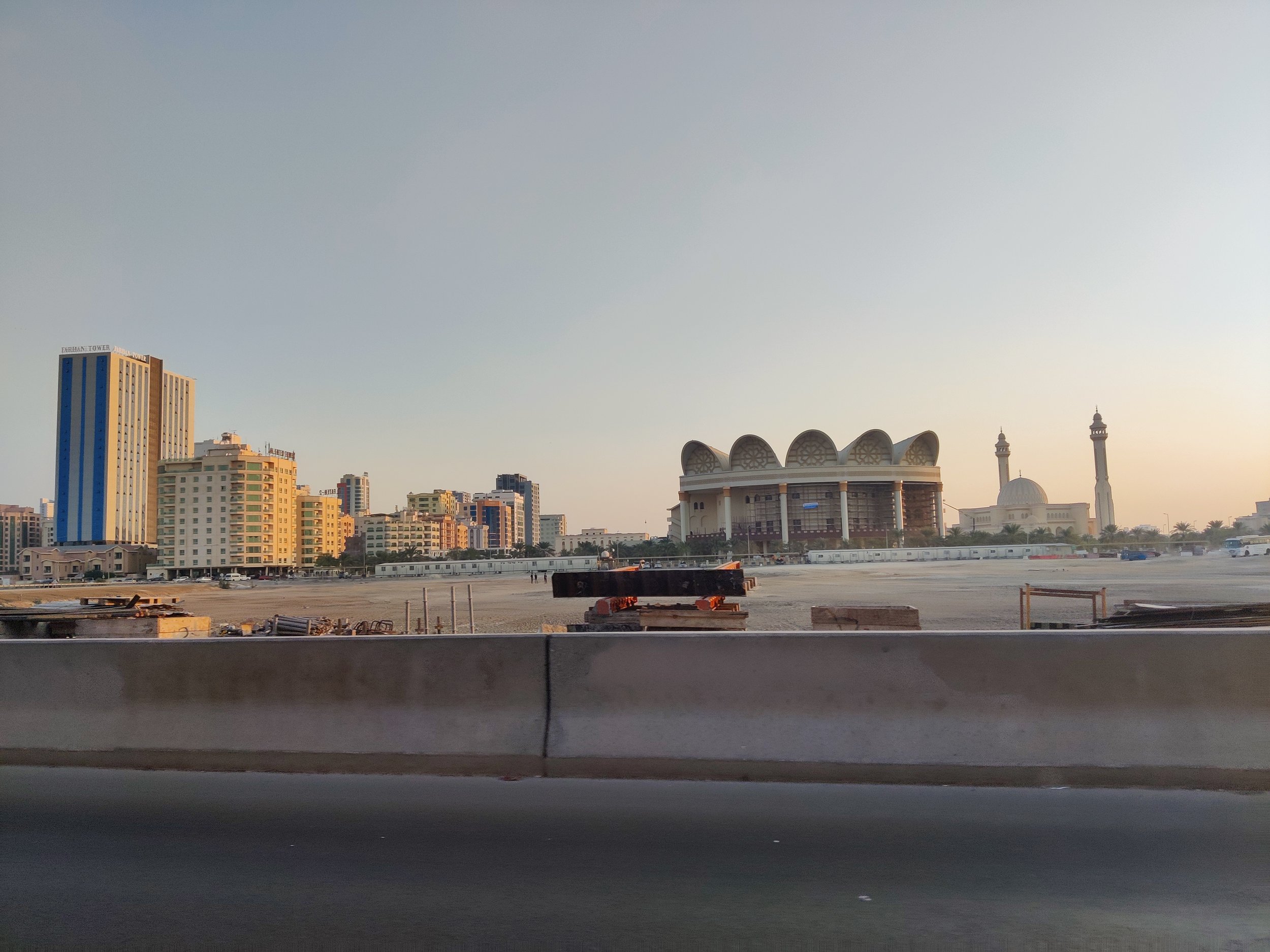


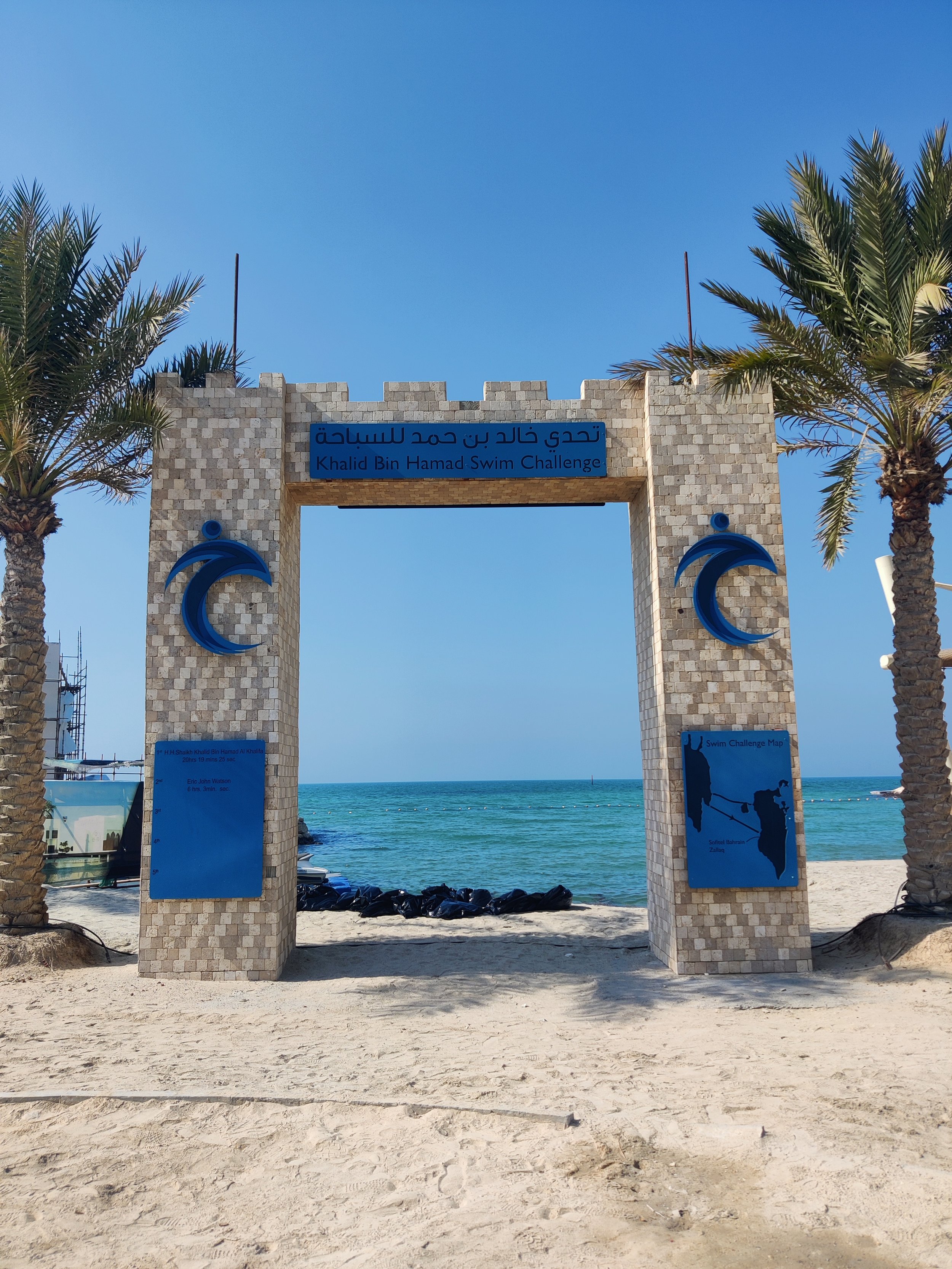
Bahrain is the third smallest country in Asia. It is roughly 4x the size of Washington DC, with the population equivalent to New Hampshire. Someone compared it to Saudi Arabia's Tijuana but that does it a grave injustice. The two states are connected by a 25km long bridge and Bahrain is visible from Saudi Arabia on a clear day. It certainly feels more rustic than where we live in UAE's capital but we mean that in a good way. Manama, its capital, has history and character.
As ever in the region, the tall minarets rising from mosques shape the built-landscape. They're punctuated by the few high rises that dot the horizon, giving a Dubai/Abu Dhabi vibe but toned down, the architecture showing a hint of tradition. Bahrainis are seafarers and there are nods to that history throughout the city: the port, sculpture, statues, and of course the endless things named “pearl” (lulua in Arabic).
Bahrain is an interesting place, this 21 Facts About Bahrain article taught us several things about the country before we arrived. Our first stop after check in was Nassef, a traditional Bahraini style restaurant in the heart of the Old Souk. Similar to the rest of the culinary delights in the region (hummus, fattoush salad), Bahraini dishes have a stronger Iranian and Iraqi influence manifested in prominent sweet and sour flavors.
We popped over for a weekend getaway with friends that included the Bahrain Jazz festival and a rather eventful brunch with live Latin music, a clown, a fight, and Mickey Mouse. The flight from AUH is under and hour and tickets to Manama float around 100 USD. We enjoyed our time, feel like we got a good sense of the city-state, and have some other sites we want to see next-go-round.
As Arnold said so eloquently, "I'll be back".
Round the World in Three Days
It’s so easy to get caught up in the business of a weekend—catch up with family, knock out the laundry or maybe clear out your emails (most teachers have at least a portion of their weekend eaten up by prepping or grading). However, the weekend is just enough time to take a short but meaningful trip around the world.
This past weekend, we decided to pop over to the city of Al Ain, the “cultural center” of the UAE, just east of Abu Dhabi city. You may remember our first jaunt back in 2020 as documented in the post “160kph in a Nissan Micra”.
We live 7500 miles from “home” but have family only 90 minutes away. My sister, Faith, moved to Al Ain a few months ago. So everytime we visit her, we make an effort to explore her new town. In prep, I binged Google reviews and a few foodie Facebook pages. Most of them promoted restaurants rocking $$$ and little flavor. But, I don’t give up on food that easily. I was determined to find reasonably priced, delicious mom-and-pop, uncle-and-cousin eateries.
Some of the best restaurants are located in the most obscure places. The way cities are planned here are very neighborhood oriented—the neighborhood for home goods, the neighborhood for automotive repairs, the neighborhood for fabrics.
Friday Night: Our first stop was Korea. Bulgogi and Korean fried chicken spilled out of our bento boxes, begging to be consumed. The lack of pictures to show off is indicative of how hungry we were (and how good the food was).
Saturday Lunch: Next, we decided to go West to Morocco. We found Amazigh (get it, Amazing?) Restaurant Moroccan Food tucked behind a grocery story and next to a cell phone repair shop. The staff seemed surprised to see two white women and a Black dude roll in but immediately handed Nate a menu in Arabic. He promptly passed it to Faith, who’s studied Arabic for the last four years. The next 8 minutes she translated the menu section by section. Once we settled on our order, the waiter came over and spoke to us in almost perfect English. The end results was a beautiful array of couscous, roasted vegetables, mutton and salad.
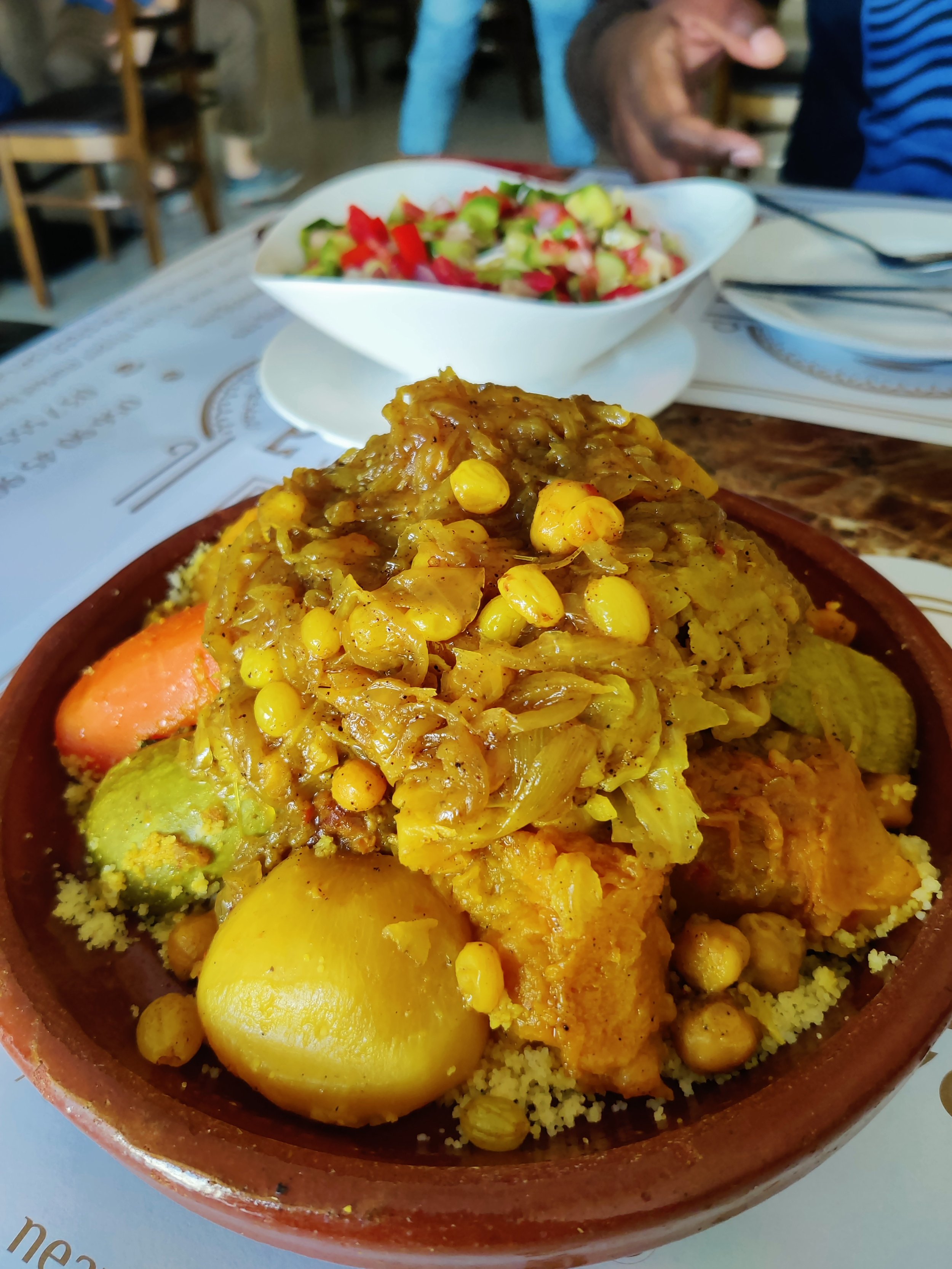
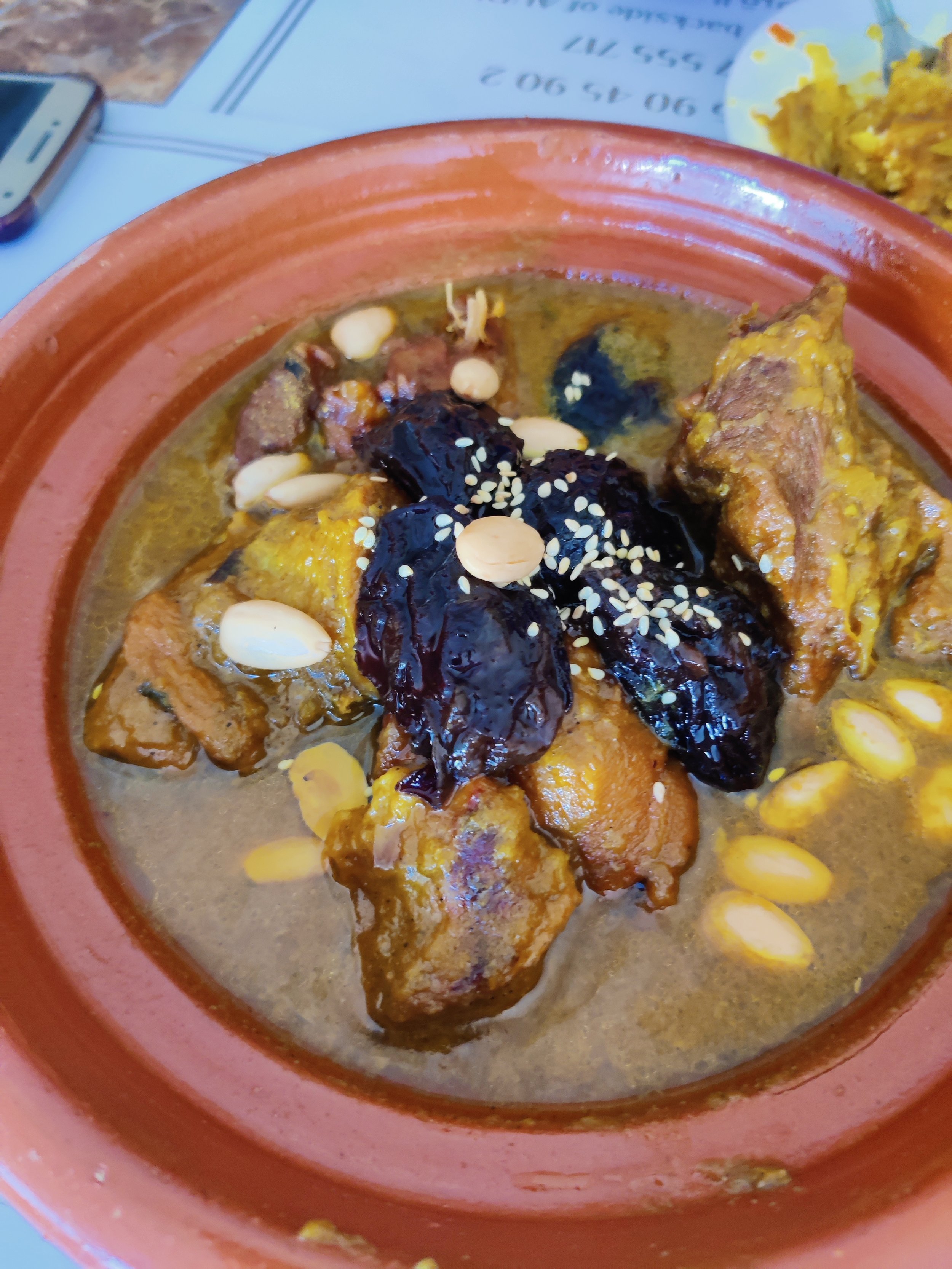
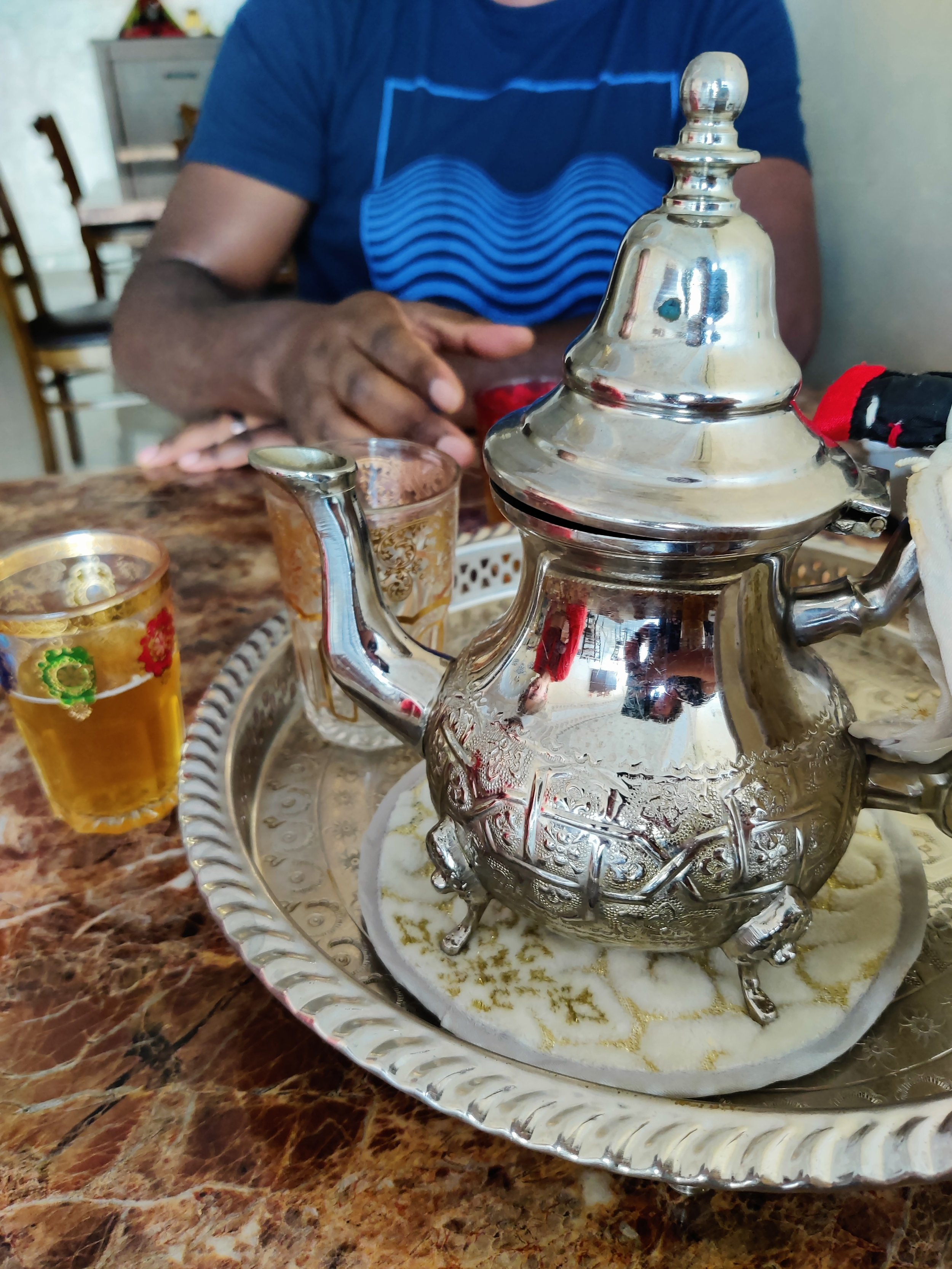

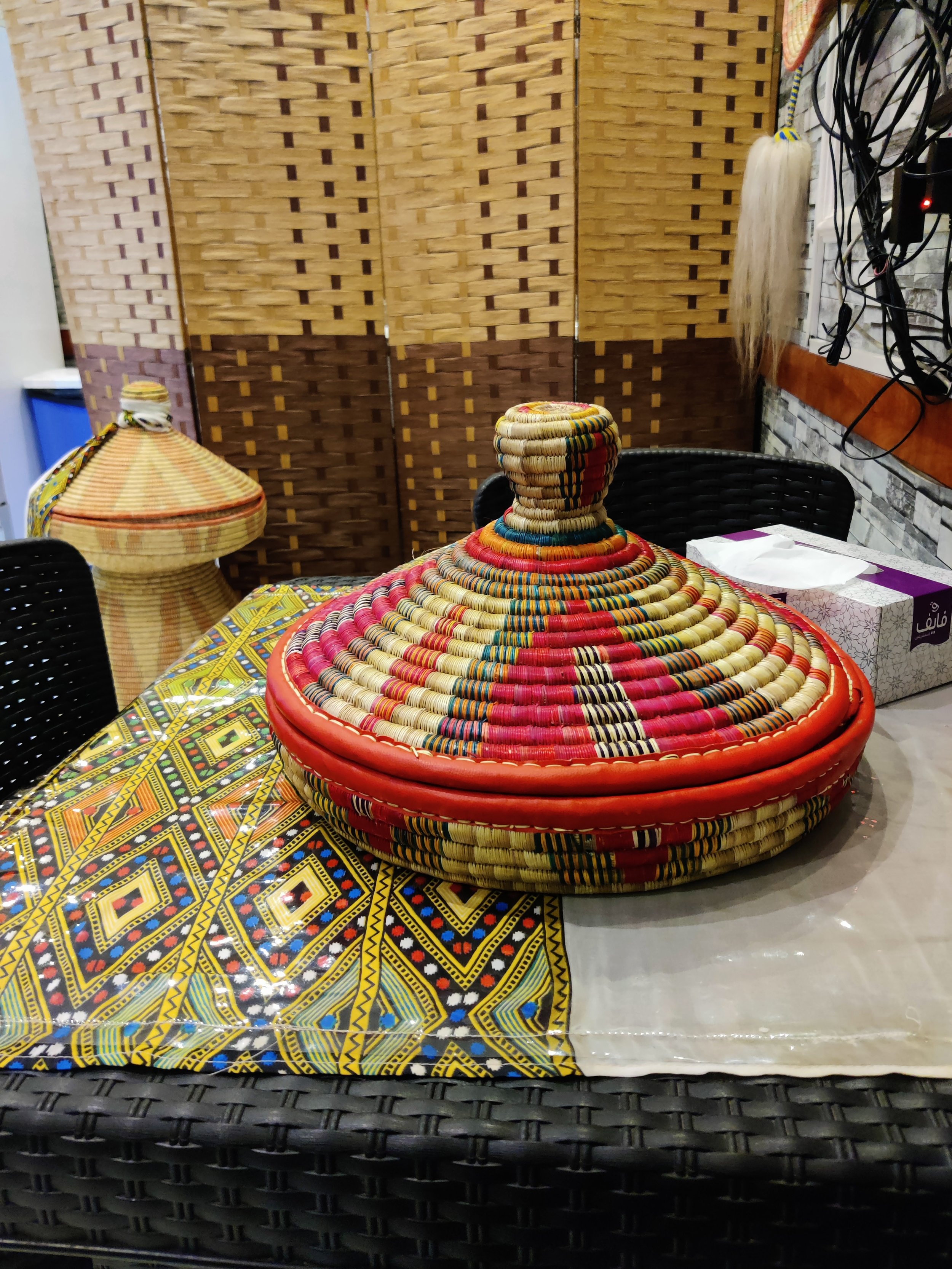
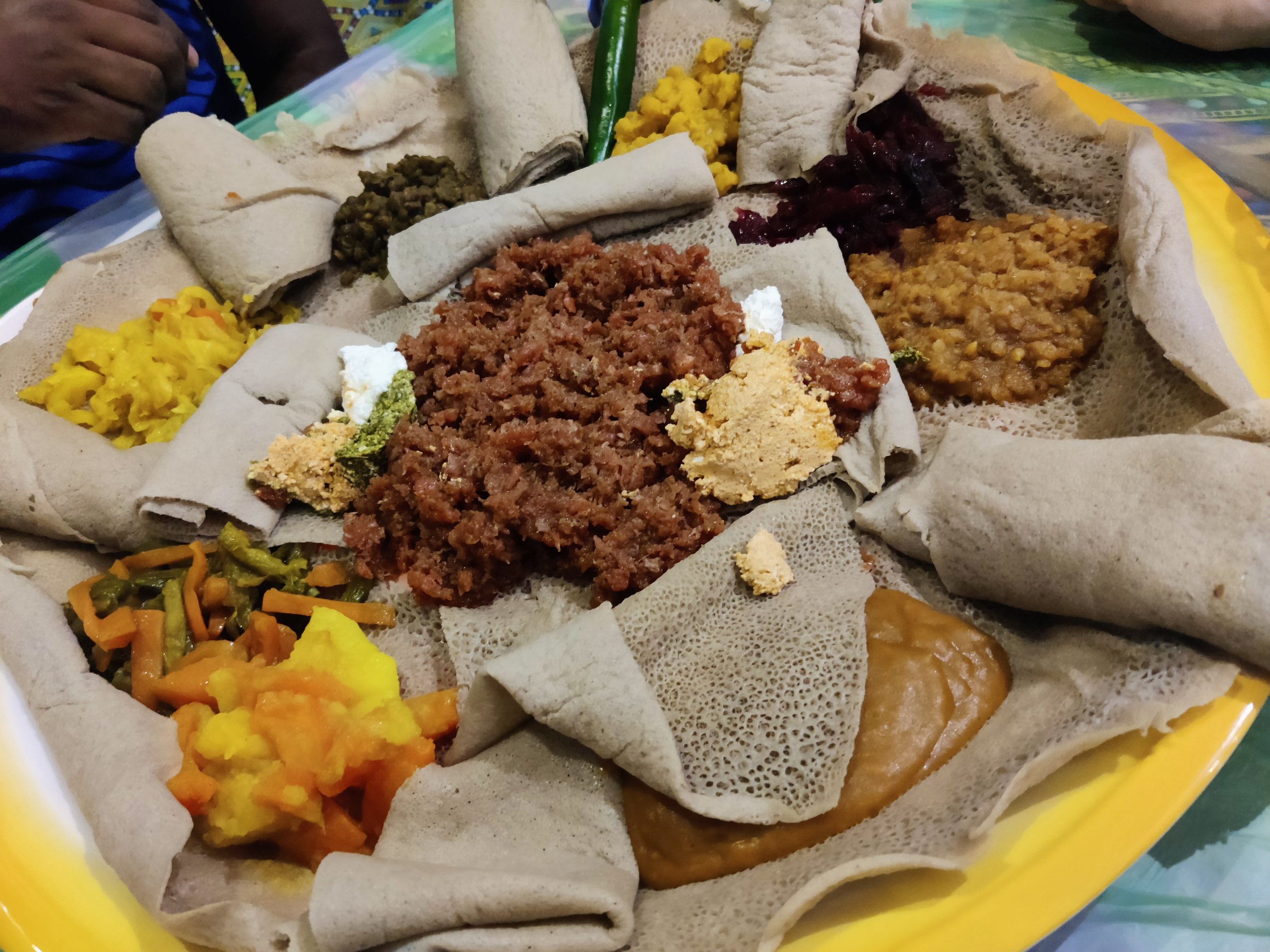
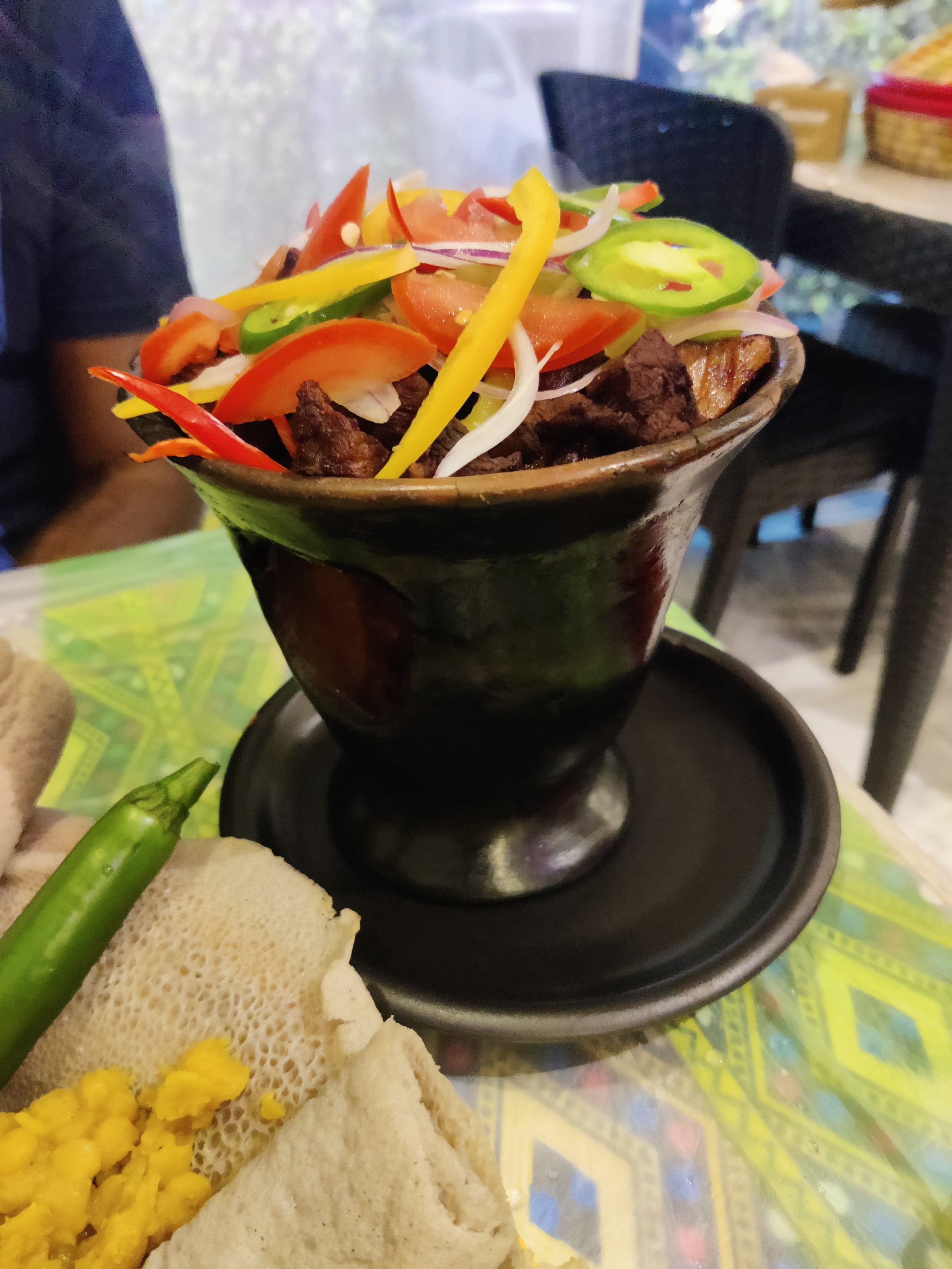
Saturday Dinner: You’d think we’d be full from lunch but we drove south to Ethiopia. A cluster of men, squatting and chatting eyed us momentarily as we exited the car. Inside the Addis Ababa Restaurant, the owner sat at an empty table working on something. You can see from the images, this place was all about the atmosphere. The food did not disappoint either and we left very full and very satisfied. We order tibbs (grilled beef in sauce) and Special Kitfo (beef tartare).
Sunday Lunch: We decided to keep things a little more local, only traveling 2,769km away to Kerala, India. Not quite a record scratch, the staff and customers glanced up, sized us up and then went back to eating mounds of Biryani, curry, and other deliciousness.
Ya’ll, a little Googling and petrol can go a long way. Hopefully, you’re feeling hungry and adventurous to check out the hidden gems in your own city or one nearby.
From Tbilisi with Love
When we travel we like to go beyond the usual suspects. Sure, Paris and Hong Kong are great but you haven’t lived until you’ve stayed in a Nicaraguan hostel where the owner tells you stories about being a contra en la guerra while driving you to the beach. We like places that feel genuine, not overrun by tourists, and I’m not gonna lie–we like a bargain. For these reasons, two of our favorite regions to visit, places we’ve returned to repeatedly, have been Central America and South East Asia: good food, good people, and the feeling you’re well off the beaten path. The Caucasus and Georgia are that.
Geography: We spent fall break in the Georgian capital of Tbilisi. For me, it’s been a while since I felt cold. It felt nice to get out of the Gulf and feel a more familiar fall. I spent much of the trip wearing a sweater and of course a 2016 MLS Champion Sounders hoodie. This was also our first time visiting a former Soviet Republic. Georgia is situated smack in the middle of the Caucasus. It has the Black Sea to its West, Turkey to its southwest, Russia (its occasionally problematic neighbor) to its north, and shares borders with Armenia and Azerbaijan to the southwest. Tbilisi is a cultural crossroads, bisected by the Mtkvari River with heavy Russian and Ottoman influences. Georgia is also home to the oldest winemaking region on the planet, going back over 8,000 years. That’s older than France’s and they are very proud of it.
The Trip: Low-key, I am not sure when I really found out that Georgia was a thing. I think it was during their war with Russia in 2008. But I have been reading a ton about it over the last few years. Our head-of-school has a property there and raves about it. It’s one of those places that it makes less sense to visit from back home in Tacoma but from here it’s just a 3 hour flight over Iran and Azerbaijan. We flew FlyDubai, Emirates’ second label equivalent of Old Navy.
Tbilisi is a beautiful city and it passes the $2/$5/$70 test. This is a test that I apply to cities. Can I get an espresso in the heart of the city for $2? Can I get a good meal on the street for less than $5? Can I get a nice hotel room, (hopefully with breakfast included) for $70? If so, game on–Georgia passes the test with flying colors. The food in Tbilisi was delicious, the wine was cheap and plentiful, and their national beverage cha cha (more on this later) flowed freely everywhere. We stayed in the heart of the old city, near Freedom Square and found the city very walkable and easy to navigate.
Dos:
First off, you should go! If you have ever been like I wanna go to Prague or Vienna, give Tbilisi a shot instead.
Drink Georgian wine–it’s literally all delicious and they’re (rightfully) proud of it.
Visit a traditional sulfur bathhouse for a scrub and a beatdown from a middle aged Georgian man with hands like bricks.
Eat the local cuisine. I recommend their dumplings called khinkali. They, like Russian pierogies, arrived from China via the Silk Road and are delicious.
Embibe in the national beverage, cha cha. It is like Italian grappa, made from the skins, seeds, and stems of the winemaking process.
Tour an Orthhodox Church. It’s fascinating to me how they feel like the midpoint between a masjid and catholic church.
Read up on Georgian history–Stalin is Georgian–they have a museum about him, we didn’t make it there but we’re going next time.
Georgia is a country of four million people at the crossroads of history with their own language, alphabet and a culture, though influenced by their neighborhood, also distinct from it. It was dope and I want to go back.
Now, here come the photos.
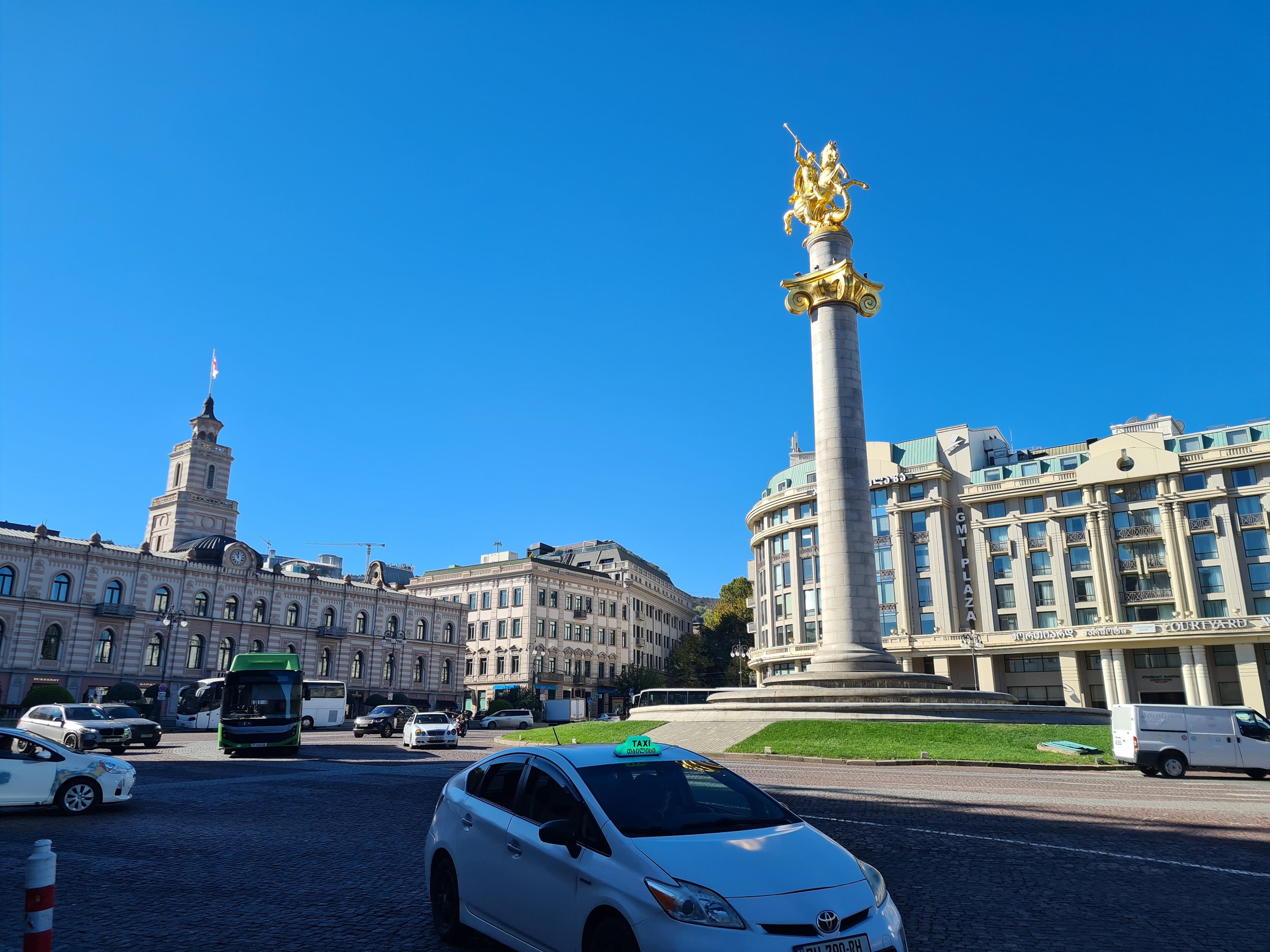


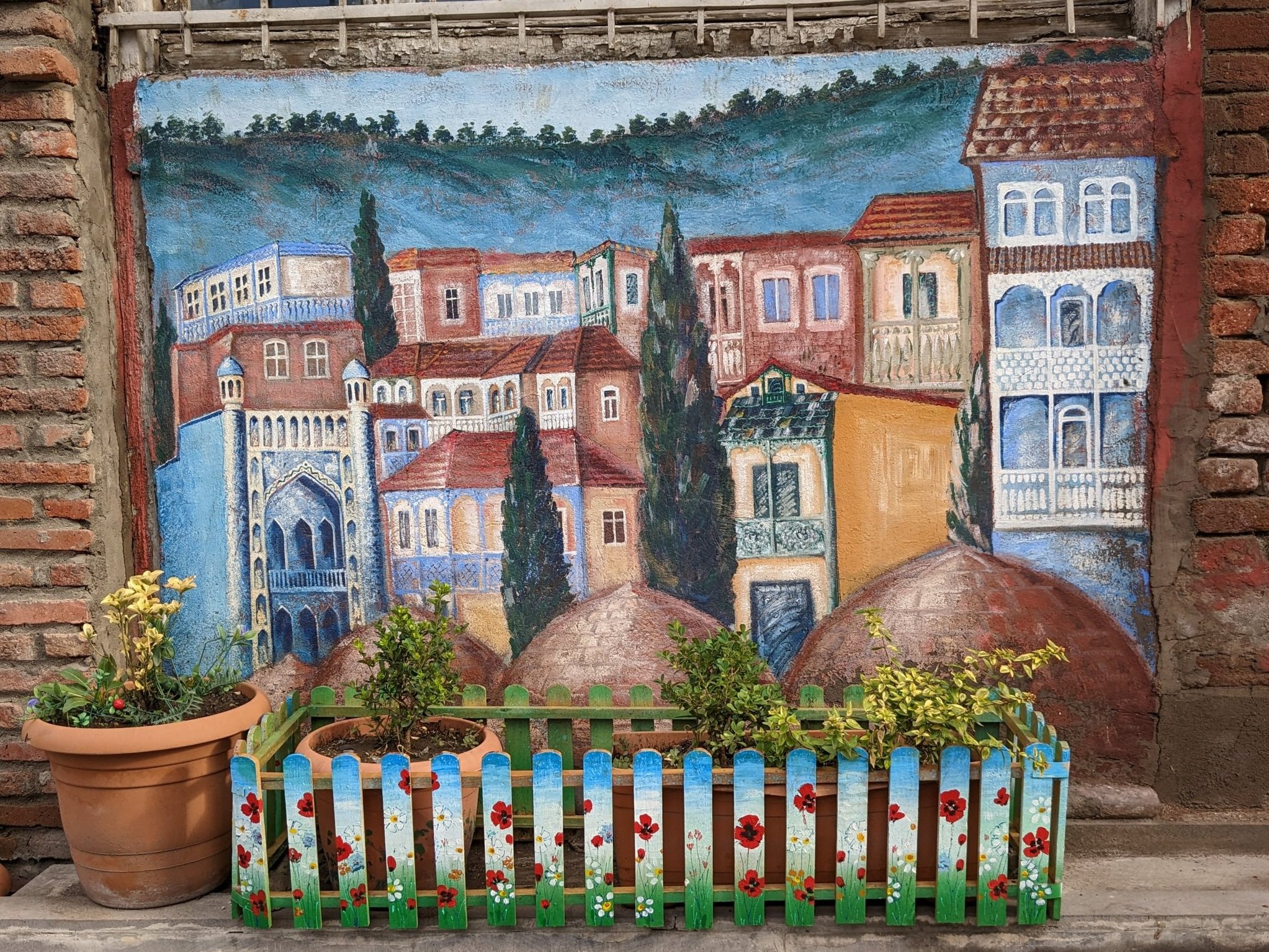
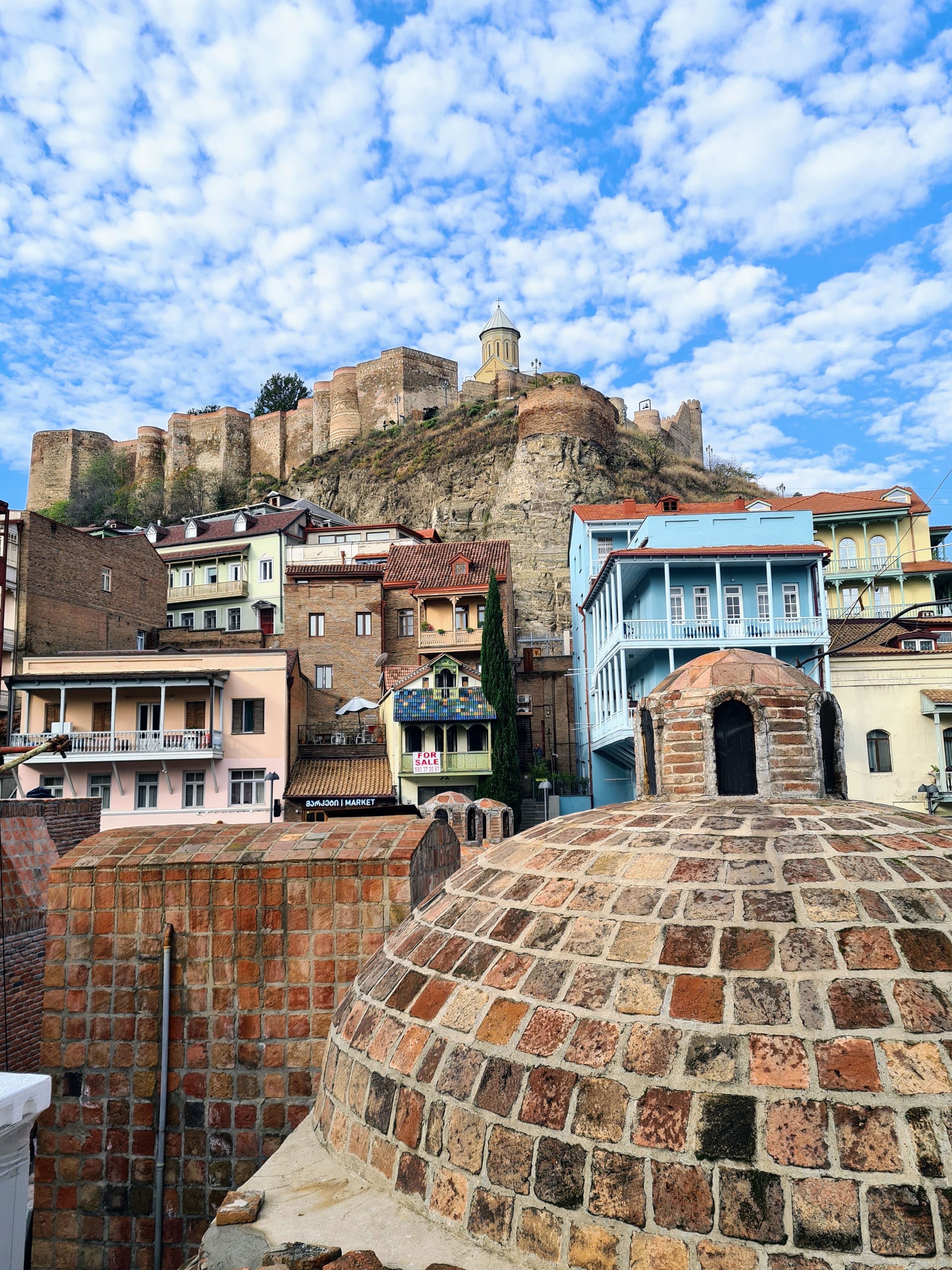
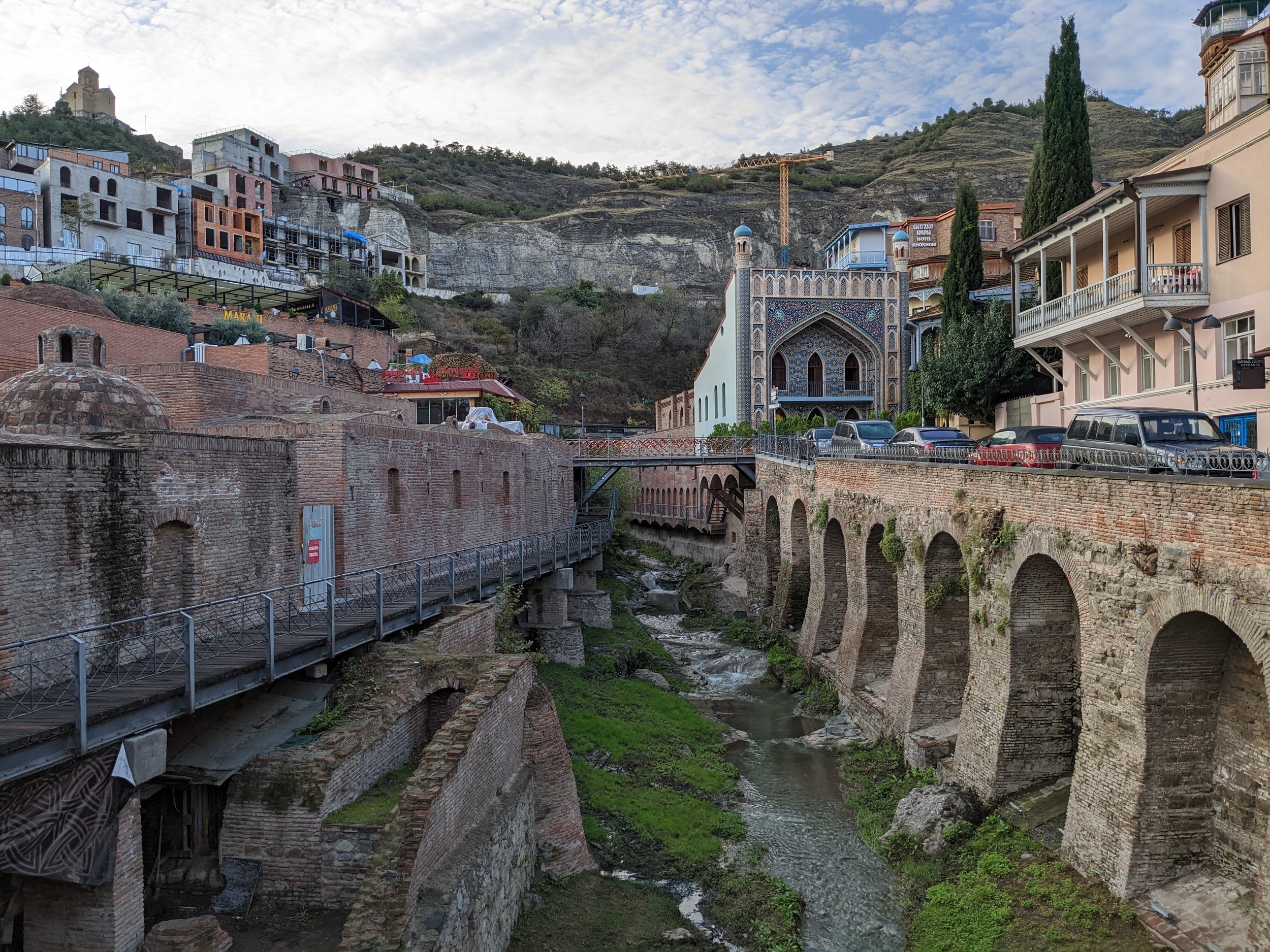

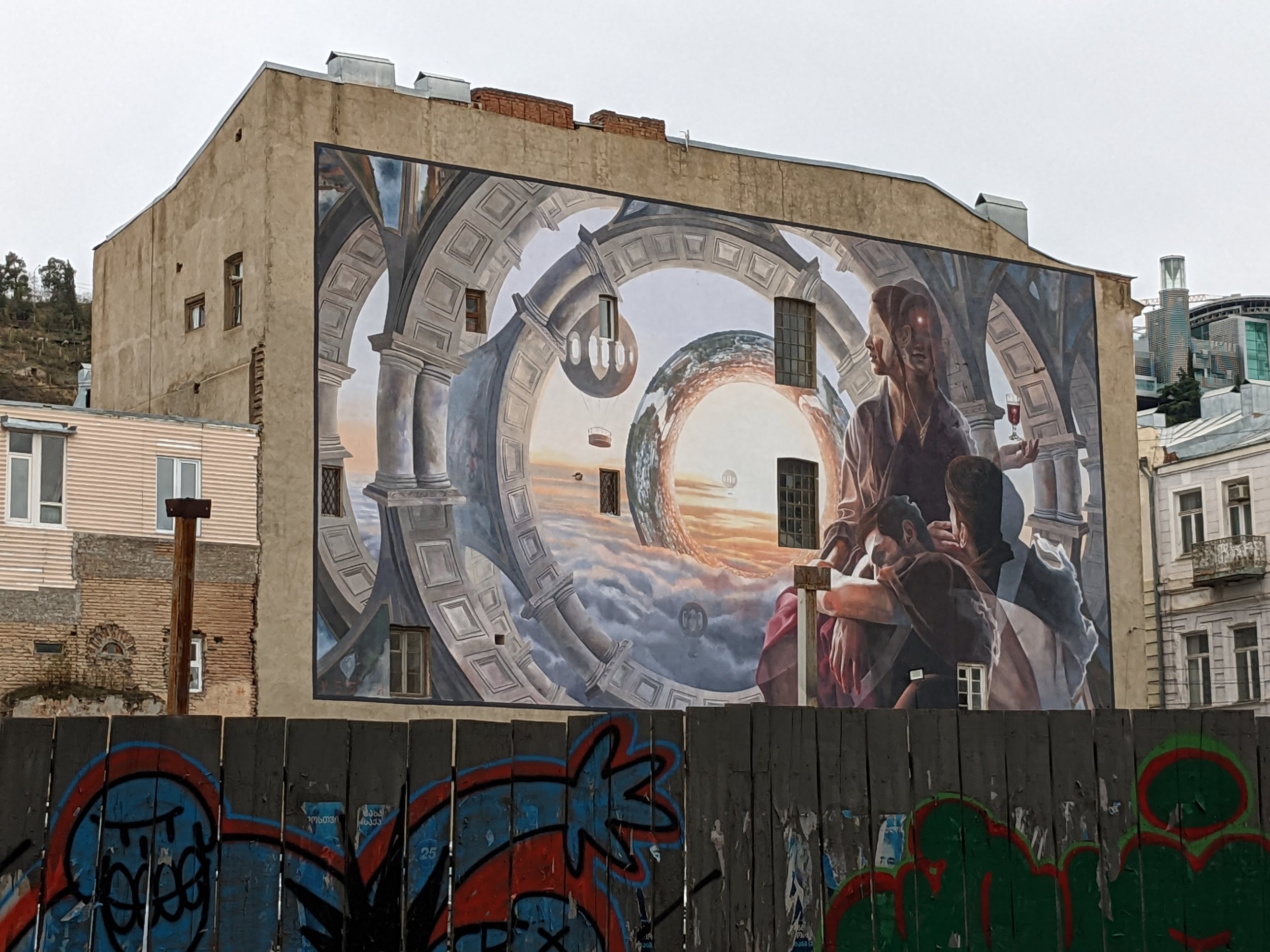
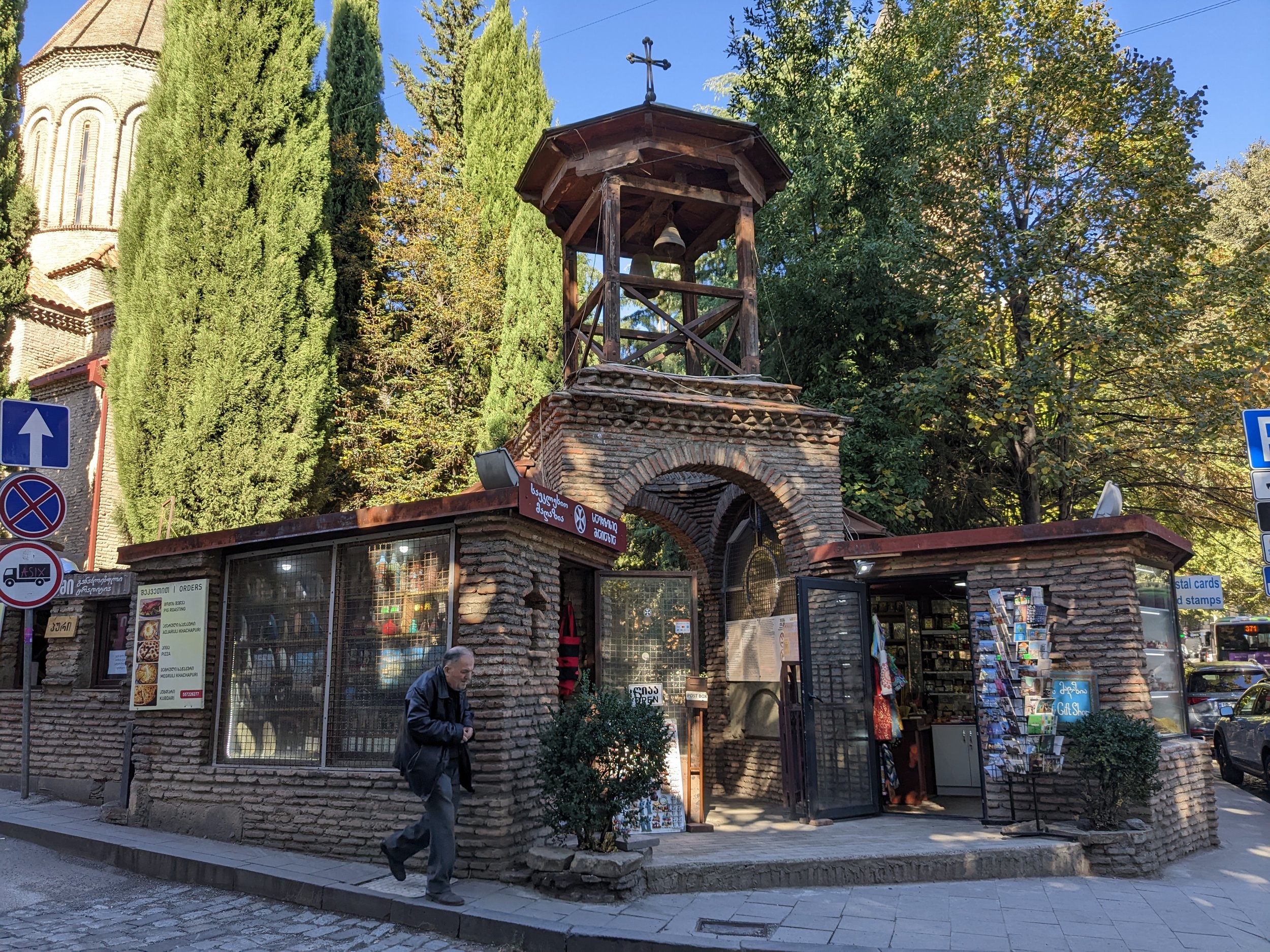

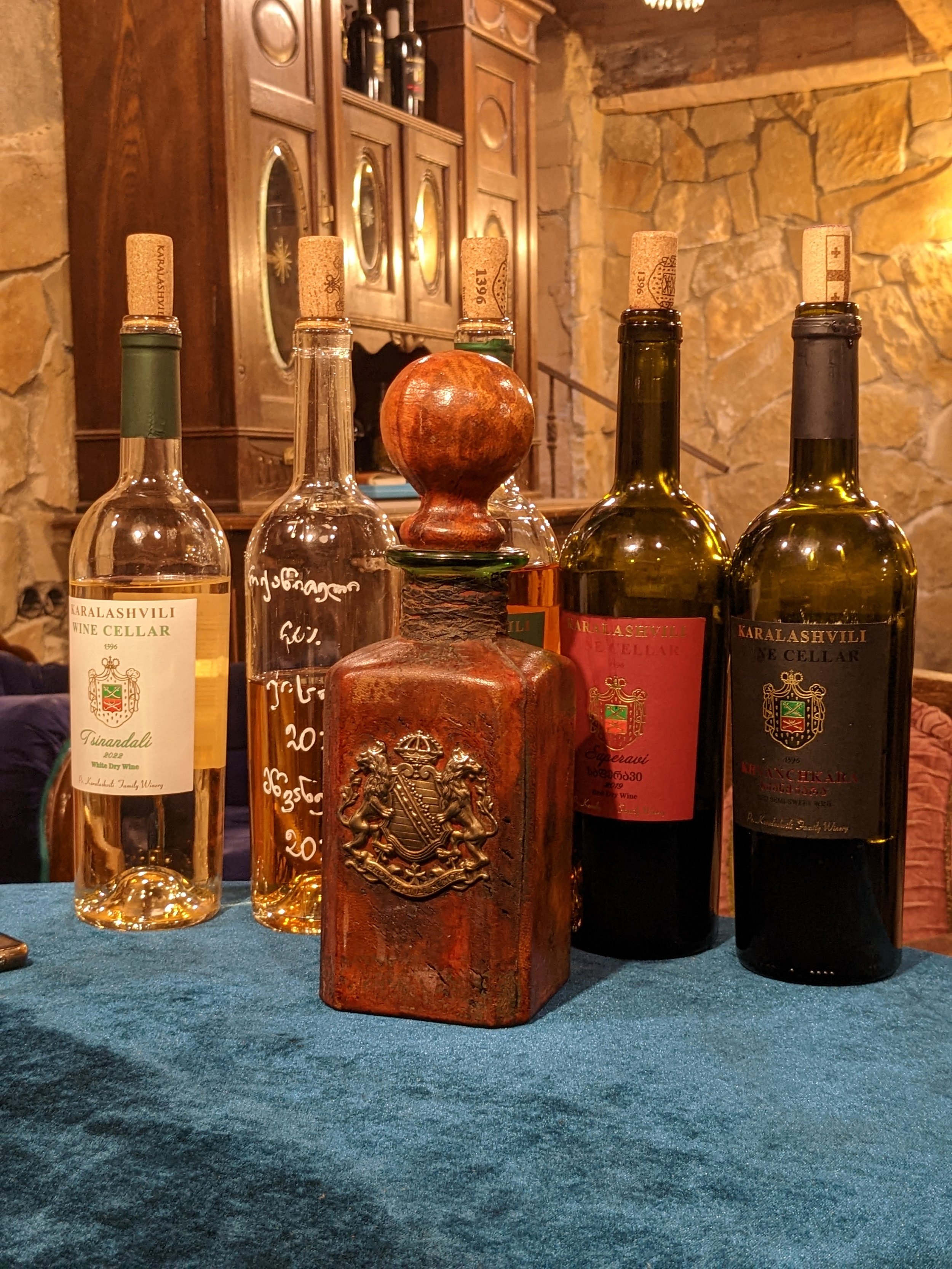

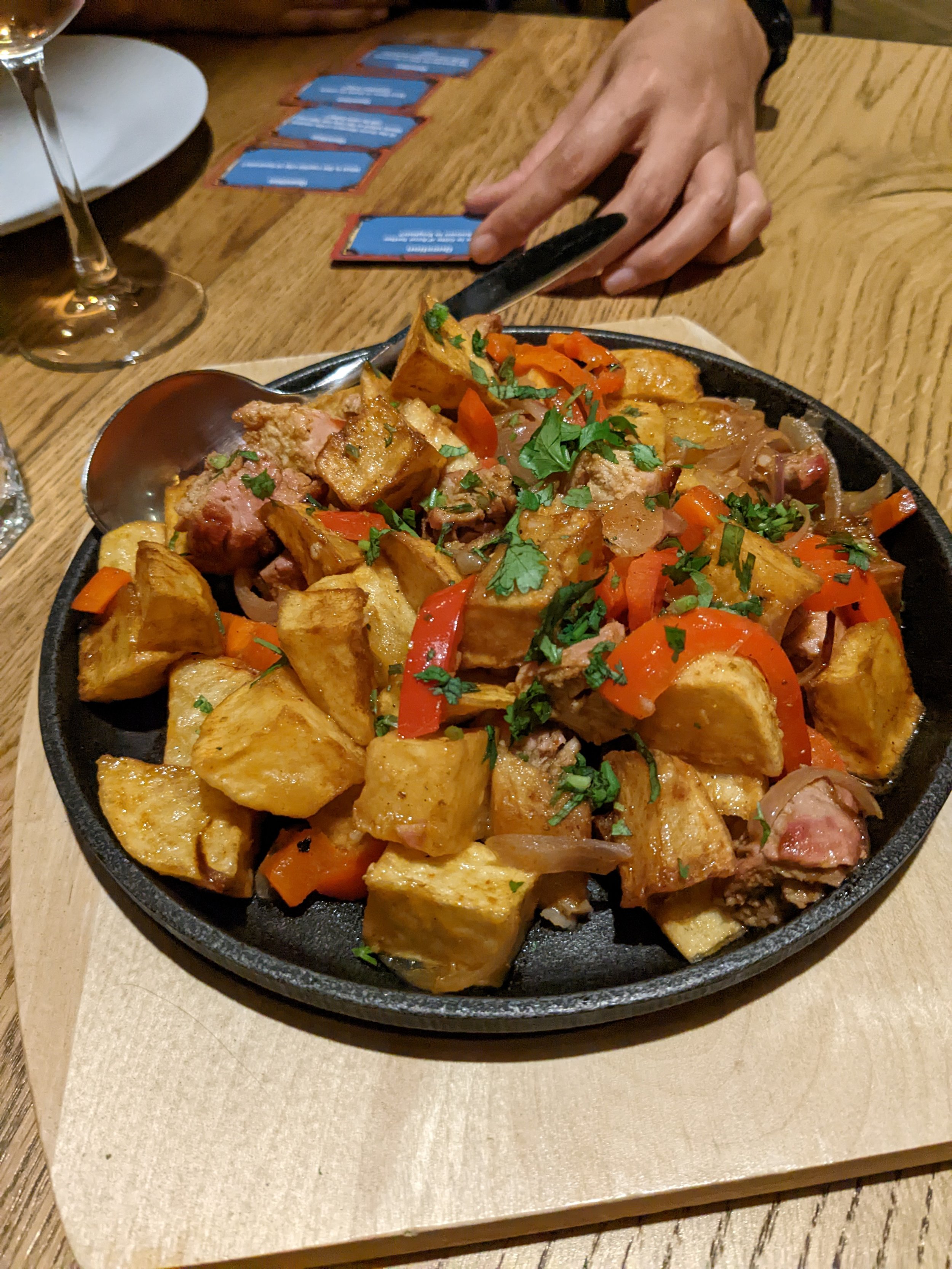
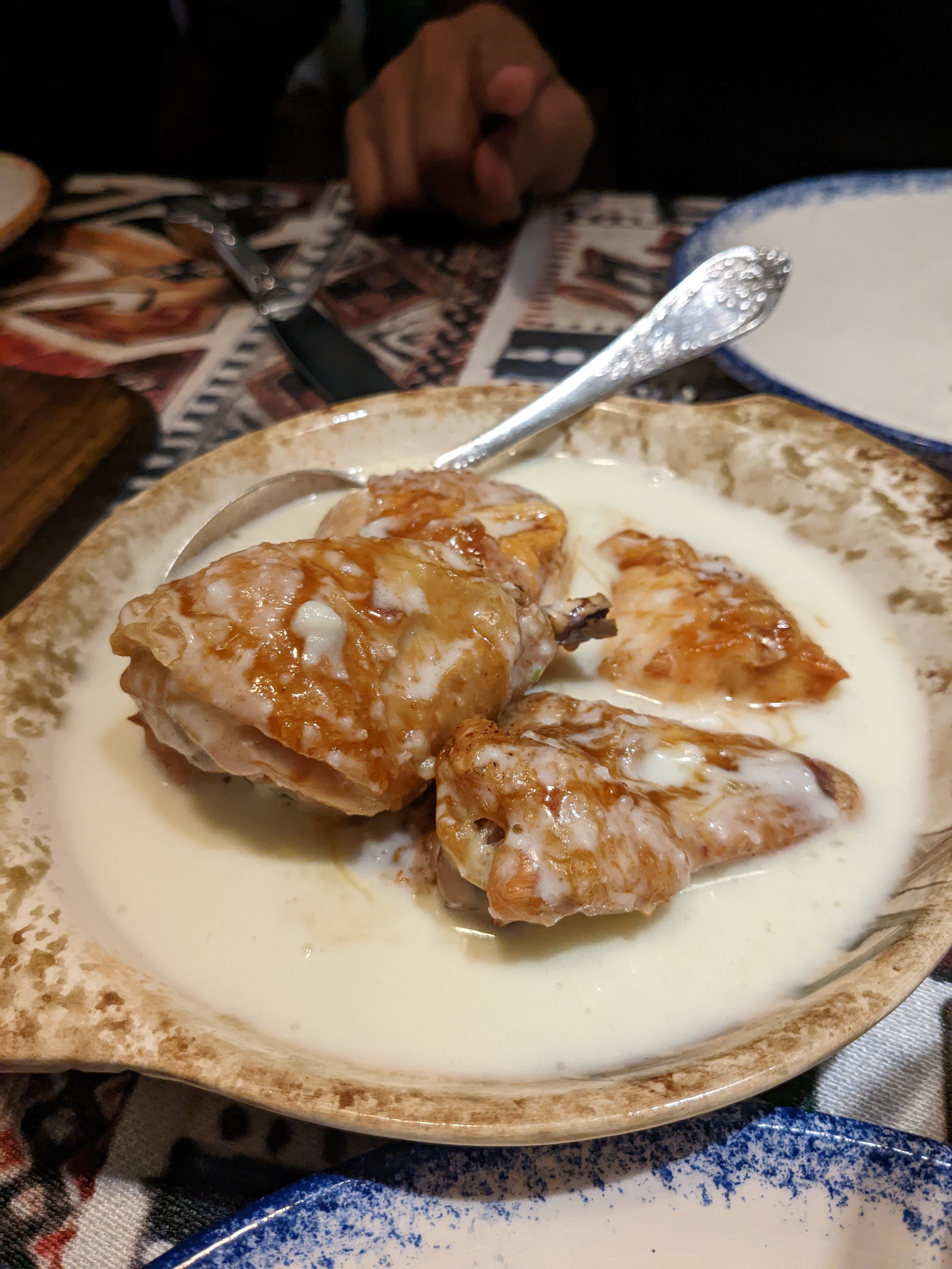
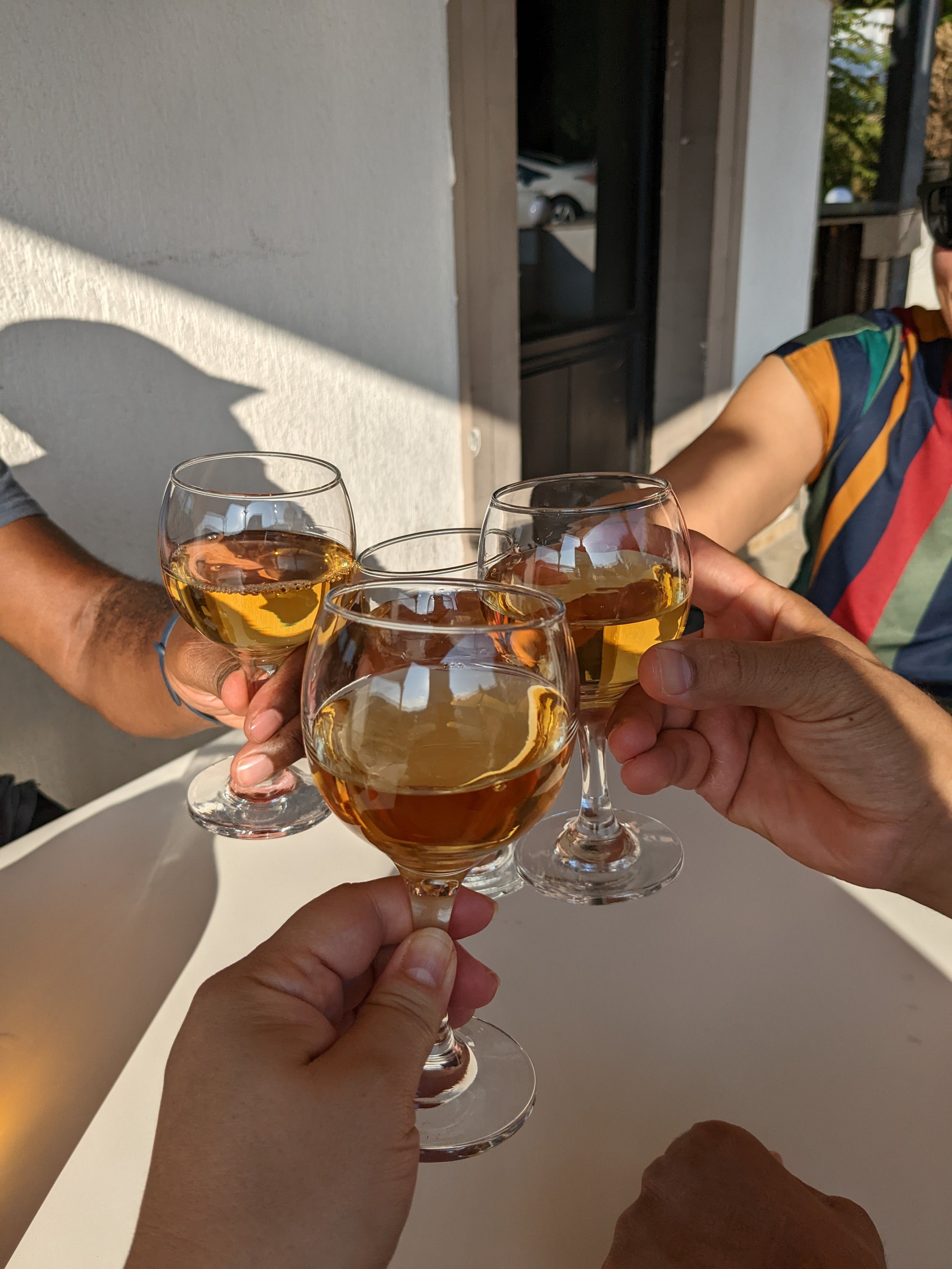

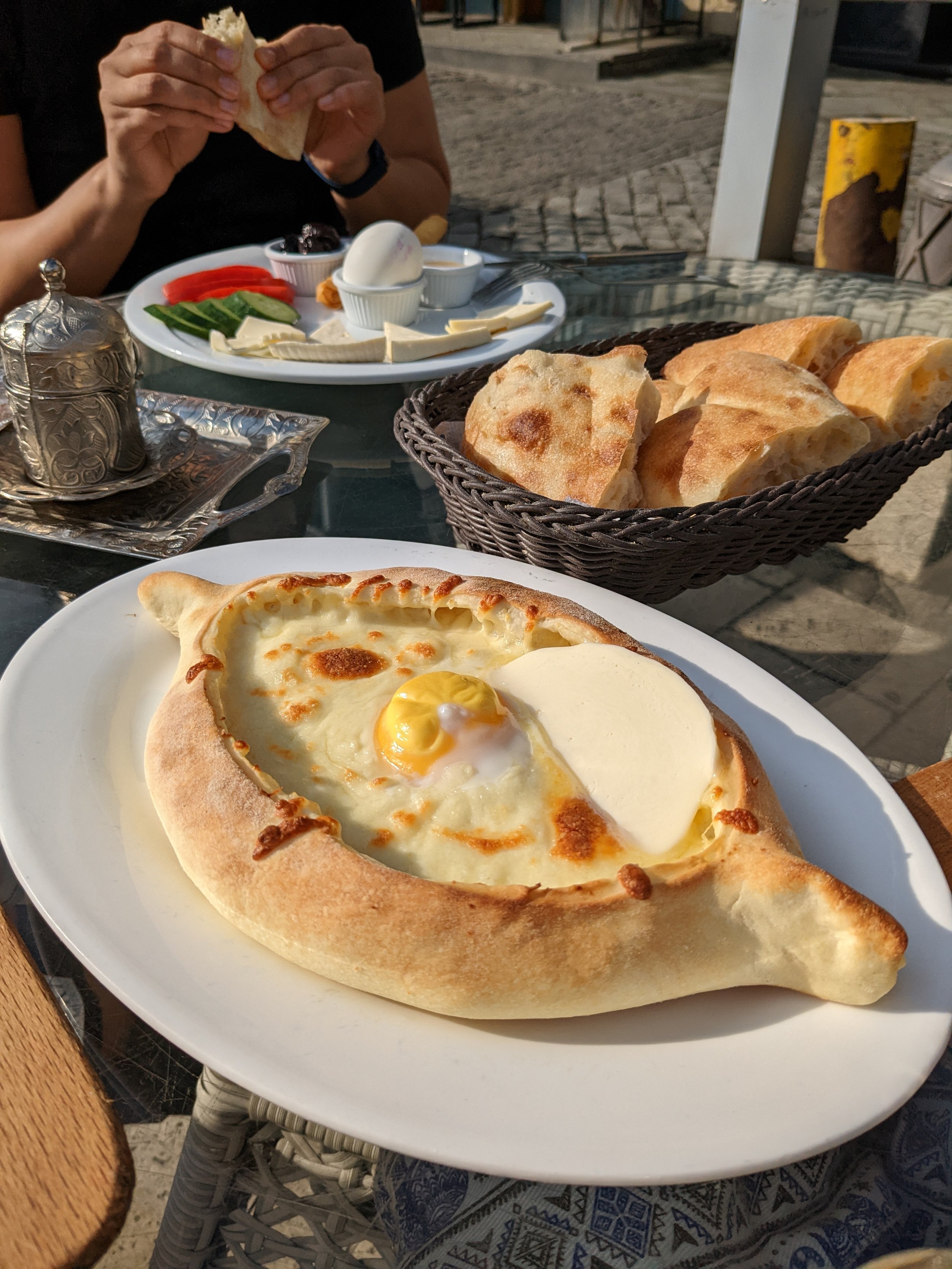
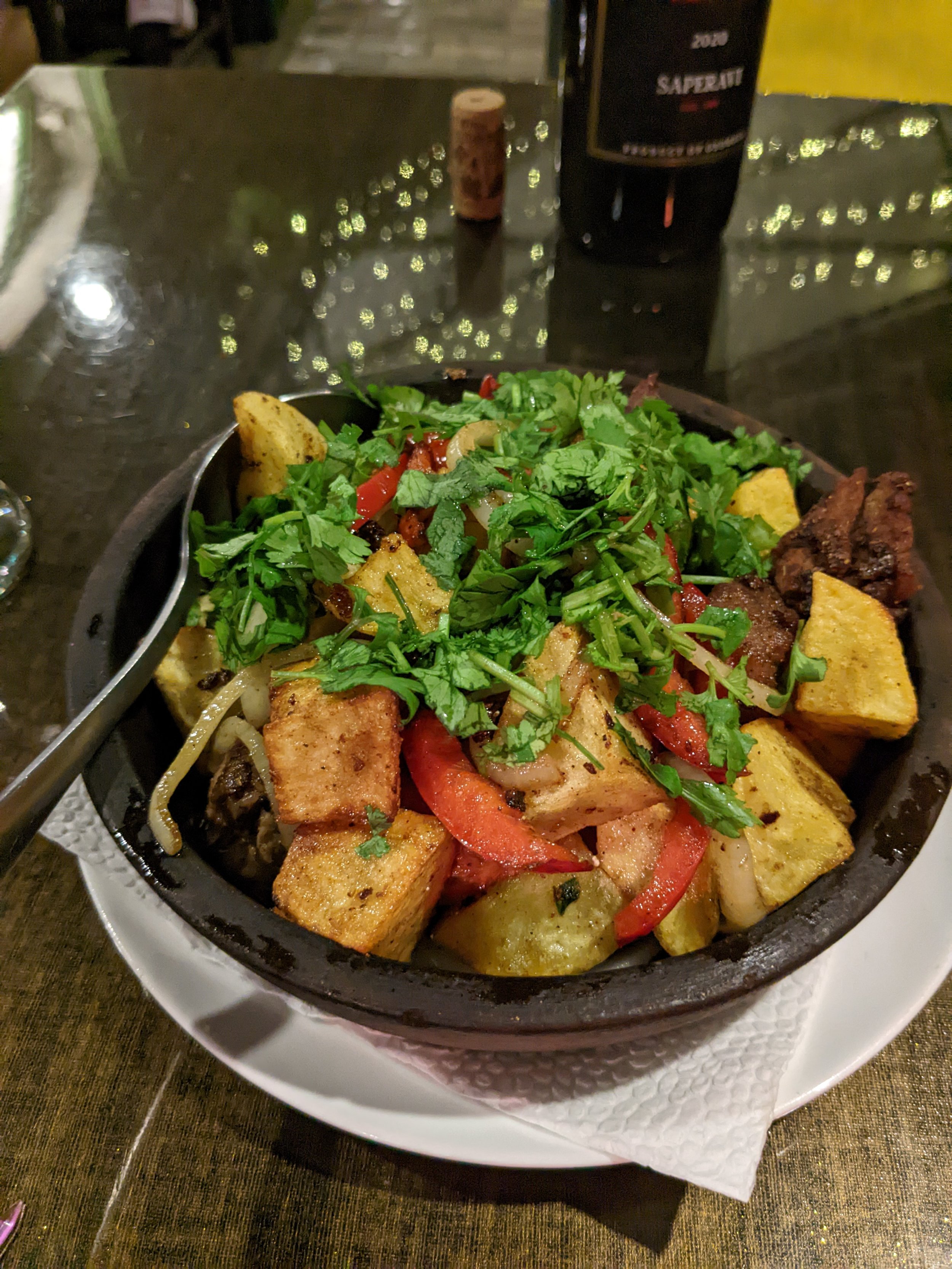
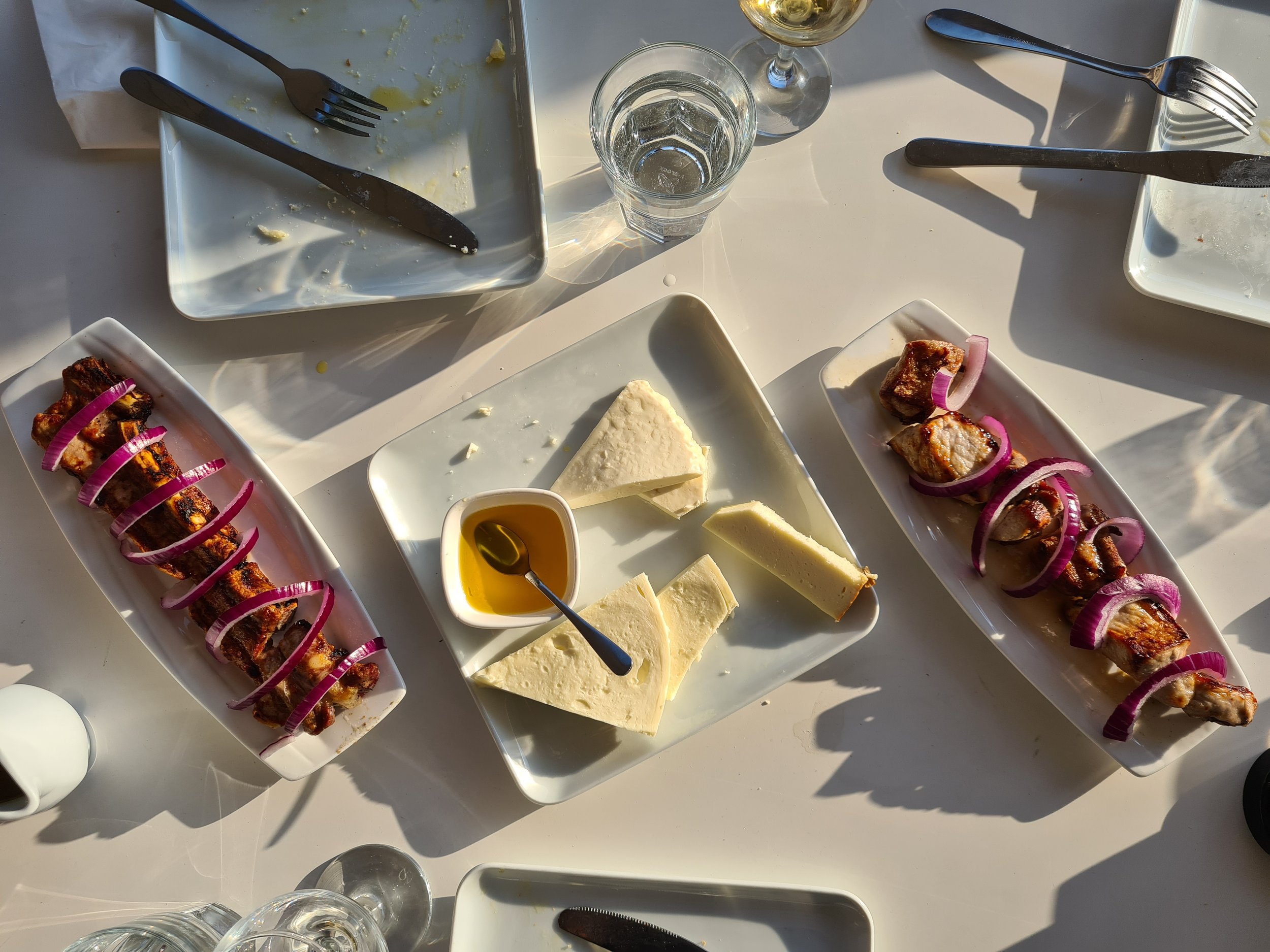

Greece: Four Islands Down 5,996 to Go
Ancient Greece …
Marble statues. Fistfuls of gyros stuffed with fries. Shops tempting you with fresh cones and heaping spoons of delight. My love for Greece began in 1995 when we drove through Thessaloniki and Florence on our way to Albania. This was my first experience with a "water closet." My first time seeing tomatoes the size of apples and experiencing the juiciest peach on the planet. I couldn't stop trying to decipher the Greek alphabet, hoping to be fluent in the blink of an eye.
Even as a 10 year old, I was whisked away by the stories of ancient Greece. Devastated when I learned Sparta wasn't some place I could visit, I threw myself into the gritty city of Athens. I never understood why there were so many naked statues but I stood in awe of the towering columns, the remnants of a mighty culture. Those memories of windy roads through the hillside, the monasteries peering at us barely holding onto the cliffs above.
I fell further in love in 2004, when my family and I joined a few others for an outreach program during the Olympics. Maybe it was the hustle of thousands coming together to celebrate their country's achievement. Those memories are deeply etched into my minds, the smells and sights still fresh.
This is why I was beyond excited to take Nate to a place filled with history, laughter and street cats. Actually, the street cats are a new thing, but I digress.
As hardworking teachers and a childless couple, we have the luxury of traveling with loose plans. A home base is all we need to throw our packs and then head out to explore the neighborhood. Yes, we center our trips on food, but mainly look for those places that beckon to you as you walk by. Not with sun-faded pictures but with the laughter of old friends—the kind of place the homies spend hours talking shop or remembering the past. We've come to adopt the rule of 4. That is, if a place has four old dudes sitting together day drinking, it's like a Michelin star. We've got to stop.
We purchased our tickets over a year ago but life got in the way and we postponed this trip a few times. So when we finally landed and hopped onto the metro, I was relieved. 10 days to experience the richness of Greek life and culture.
Our itinerary was simple. Athens and then some islands. Four days in the city flew by as we mobbed through the city, made guesses about where Socrates stood, and met up with colleagues for a glorious dinner of wine, Greek salad and grilled meats. The Parthenon and the Agora still held the wonder I felt as a child.




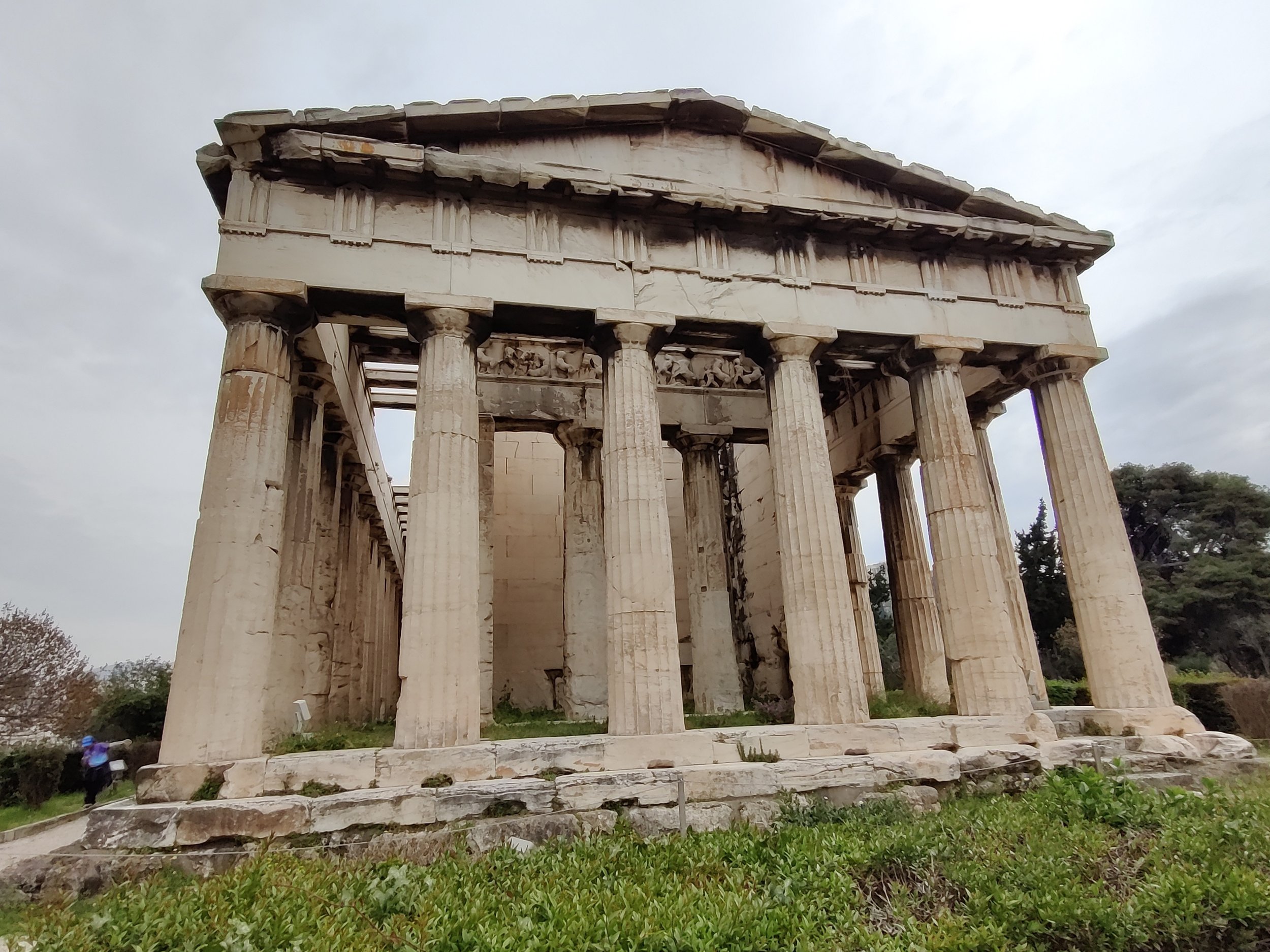
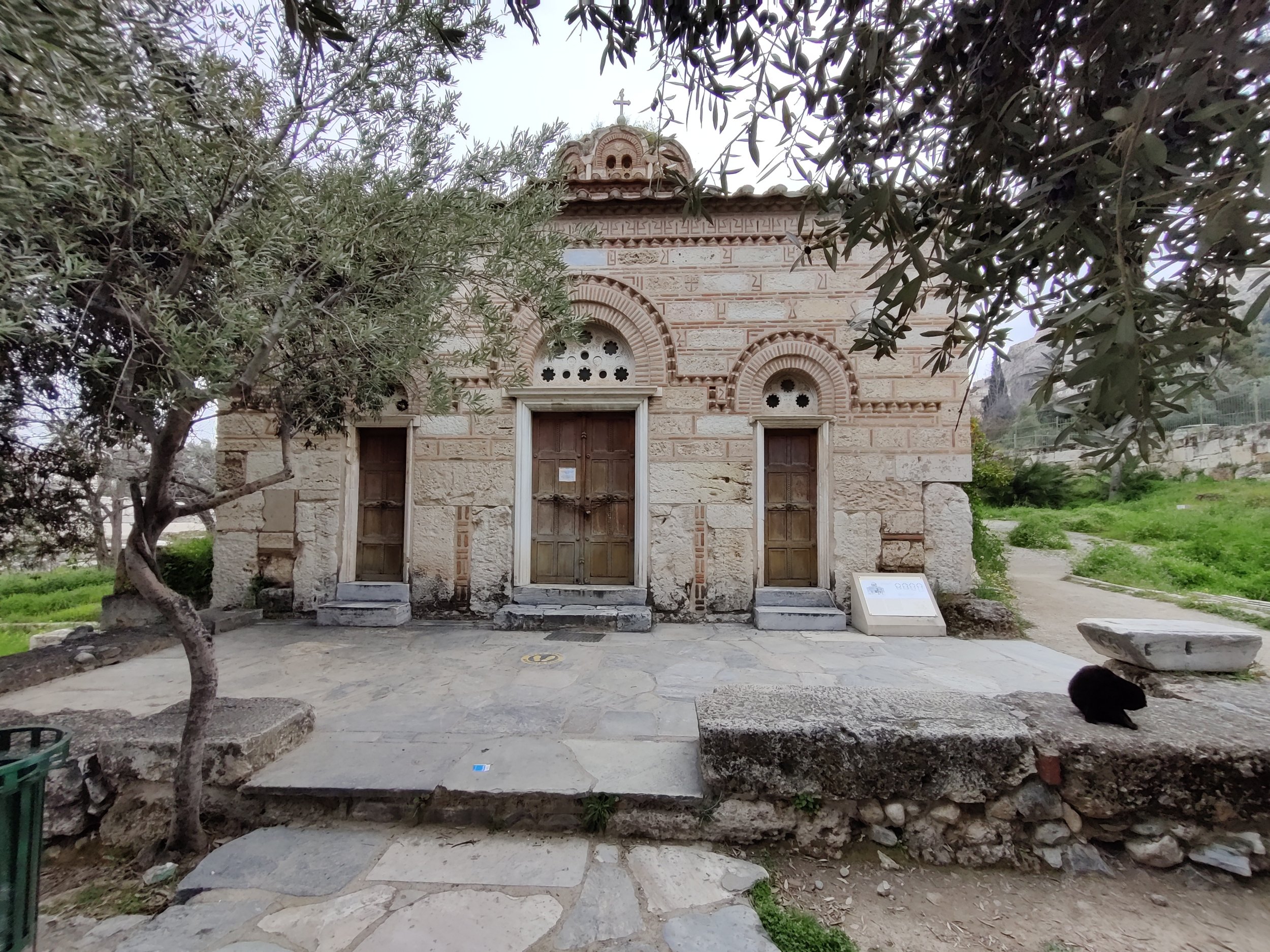
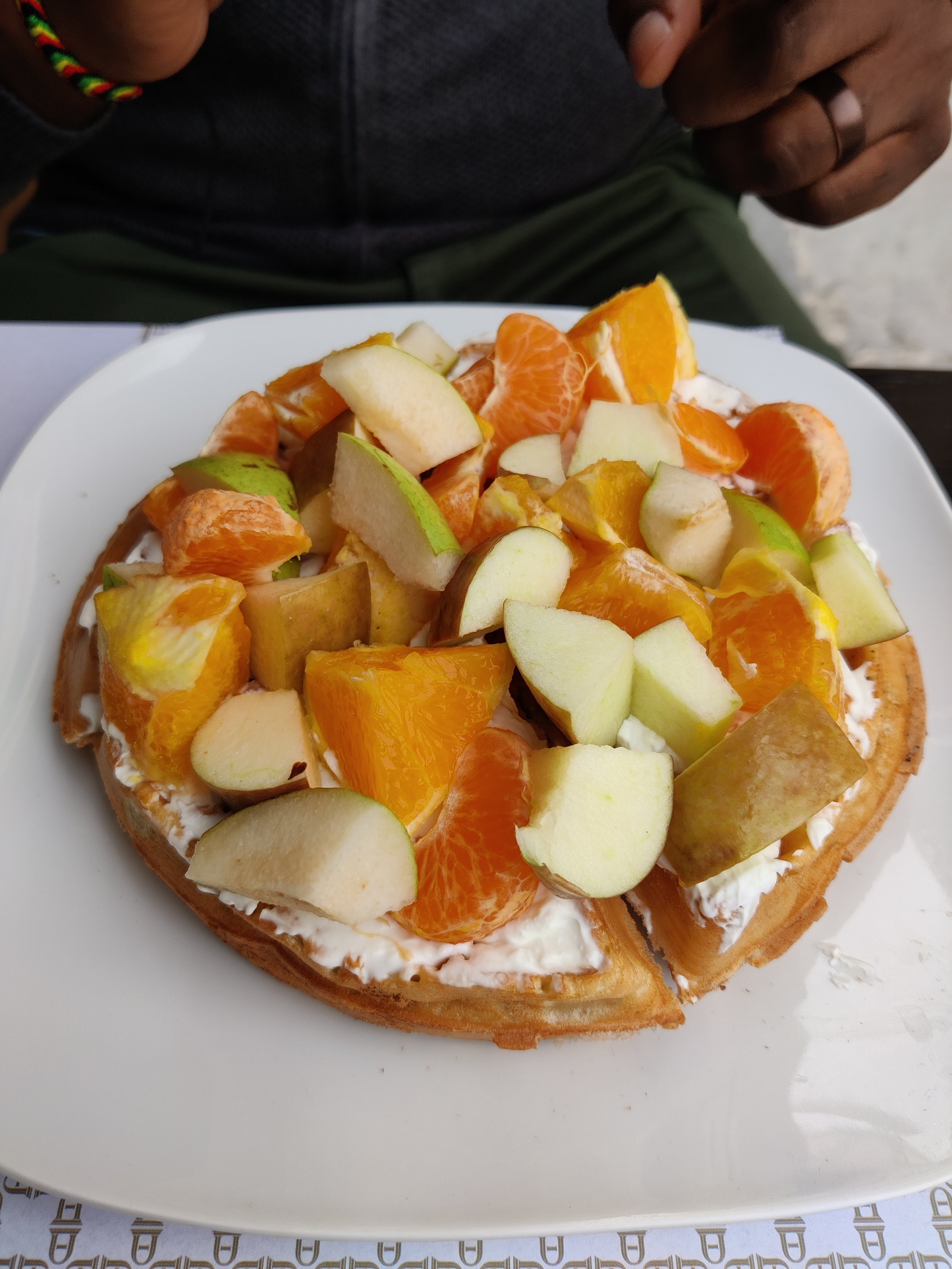
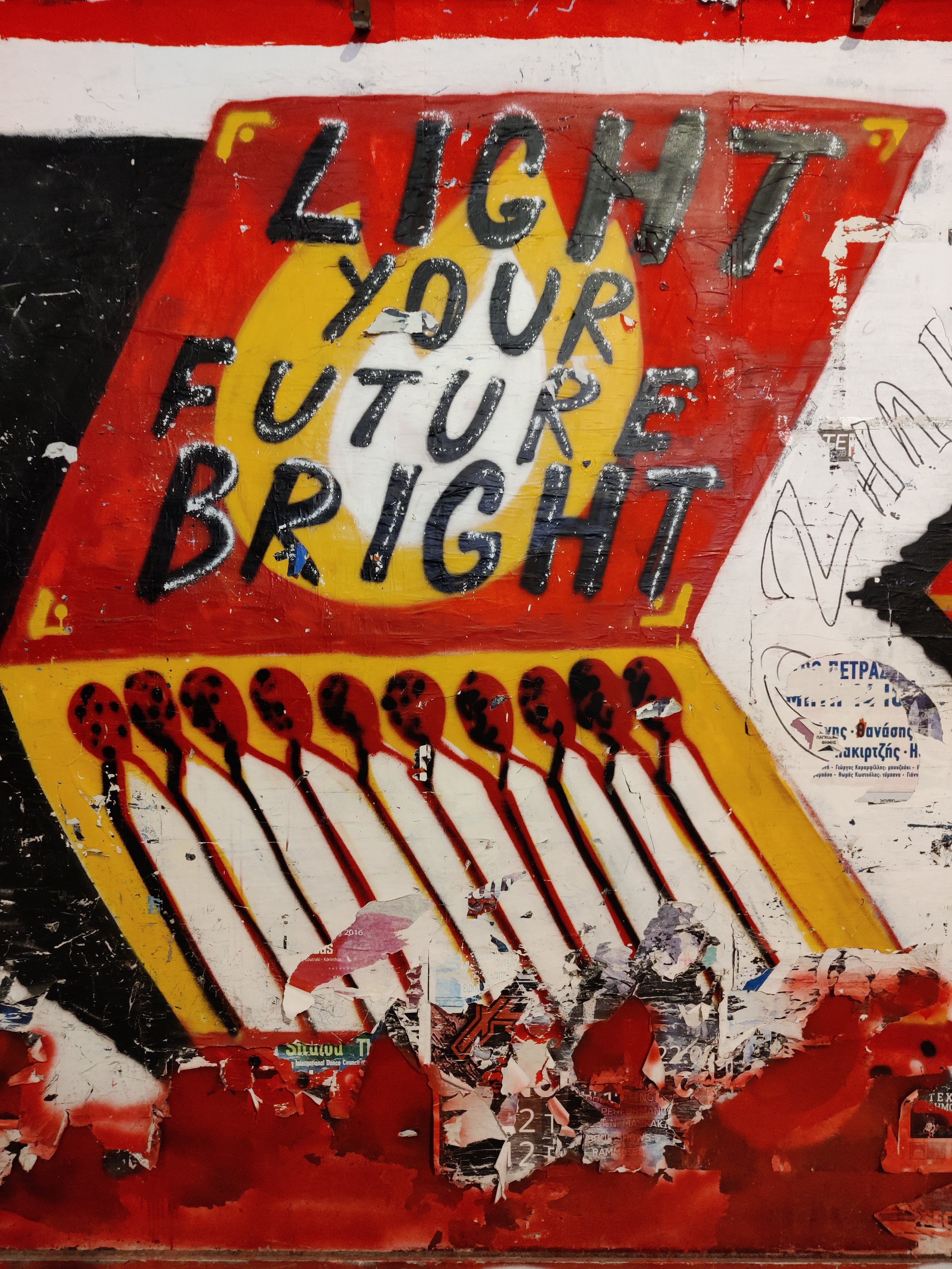
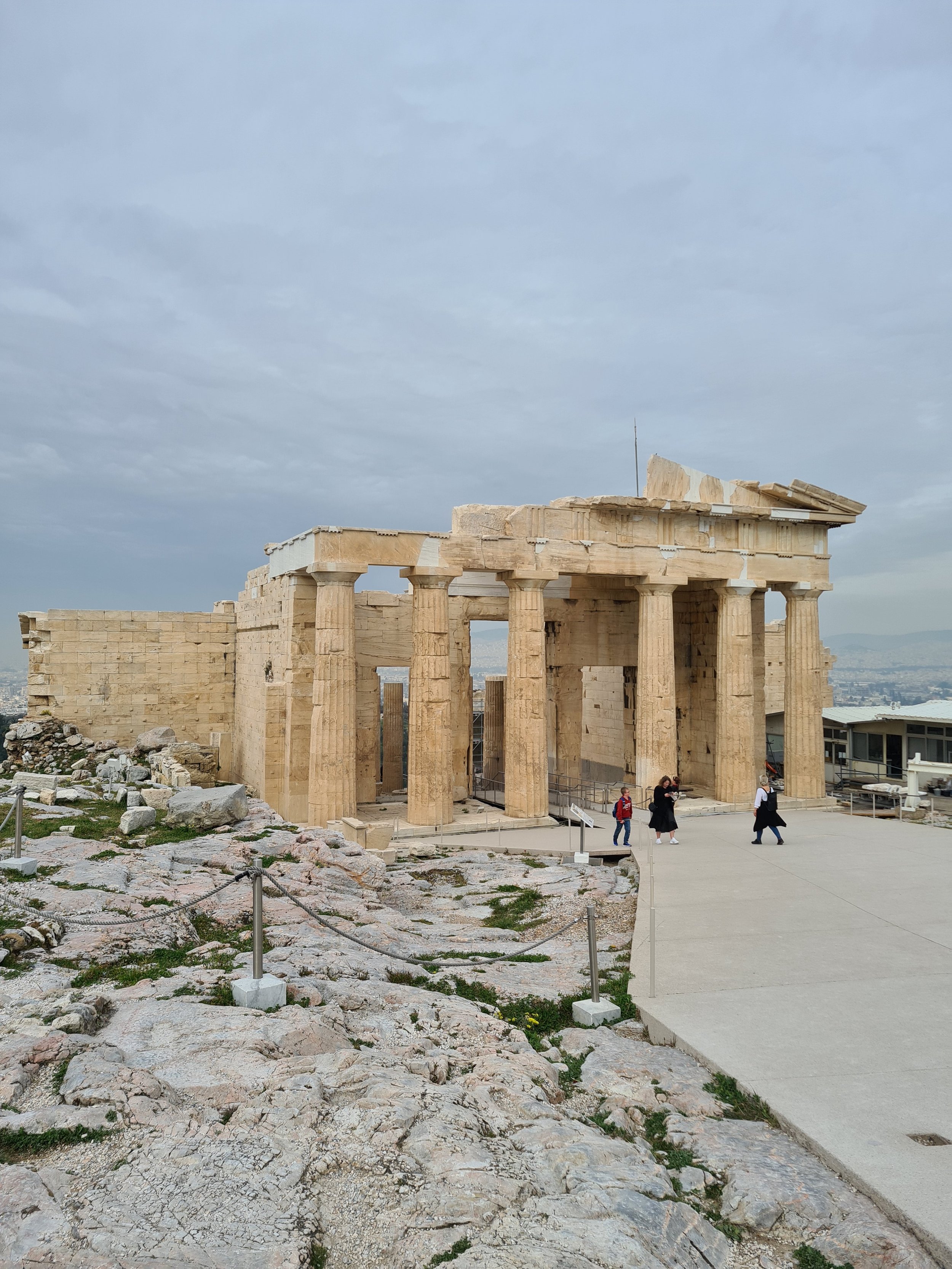
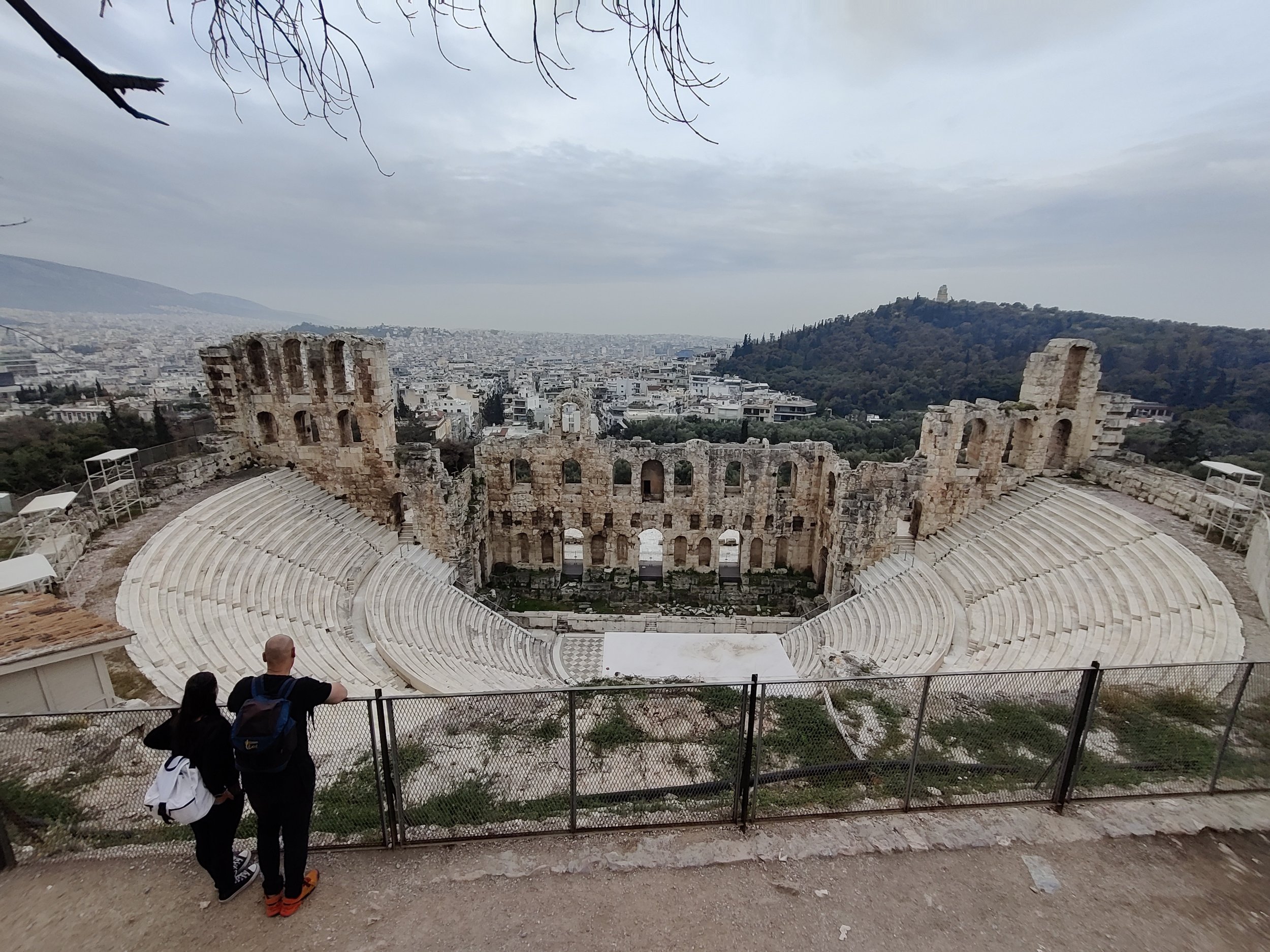

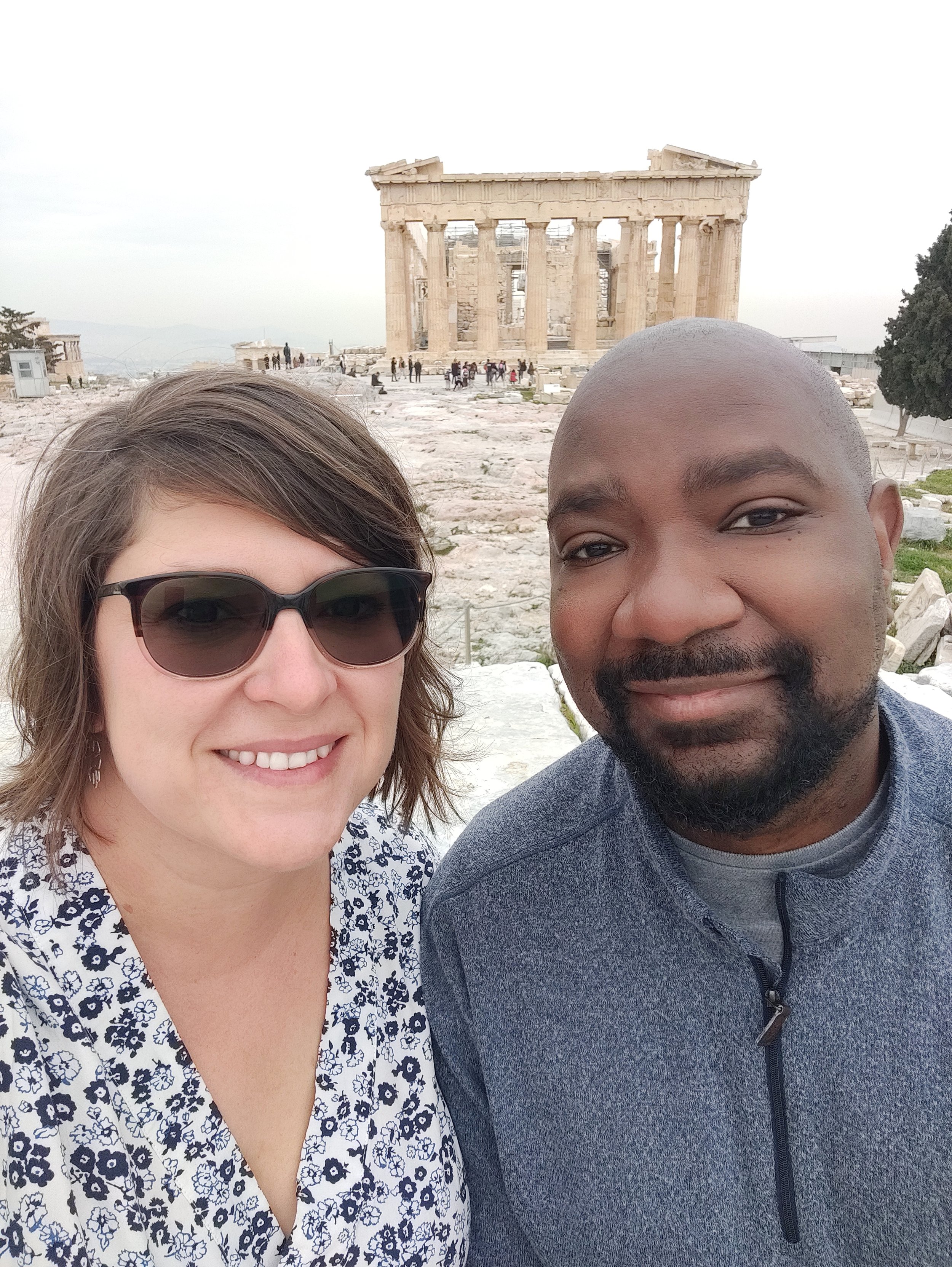
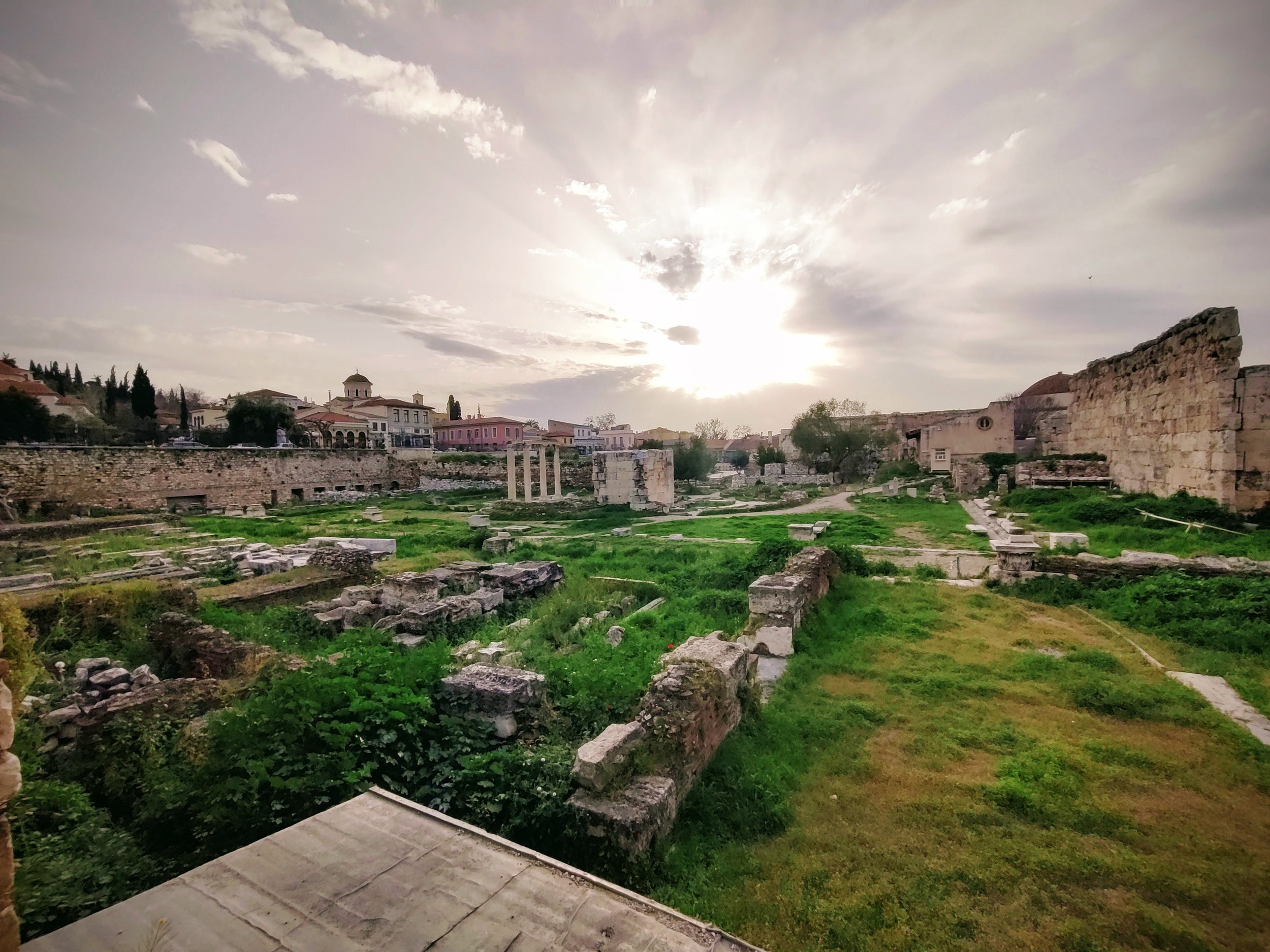
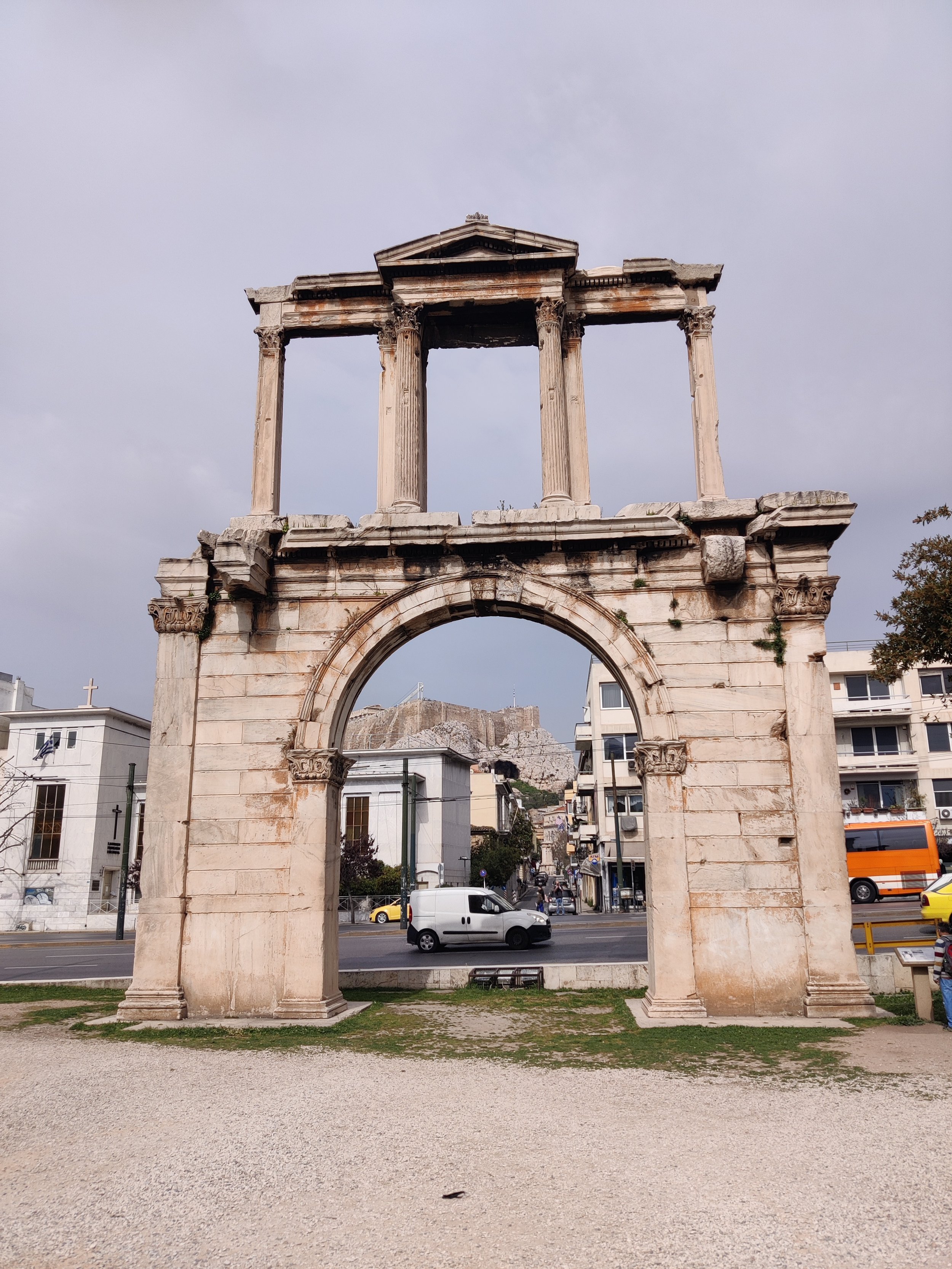
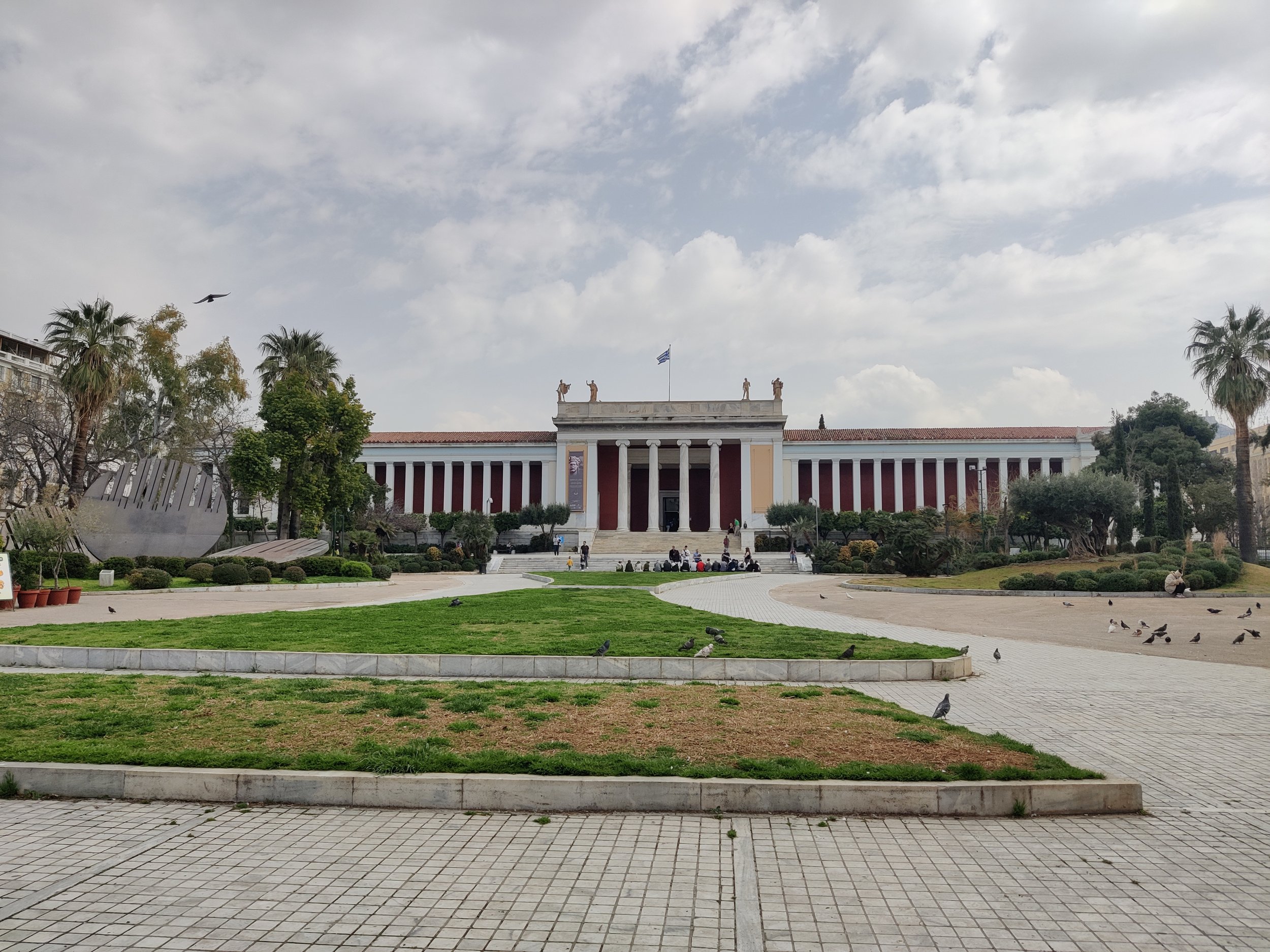
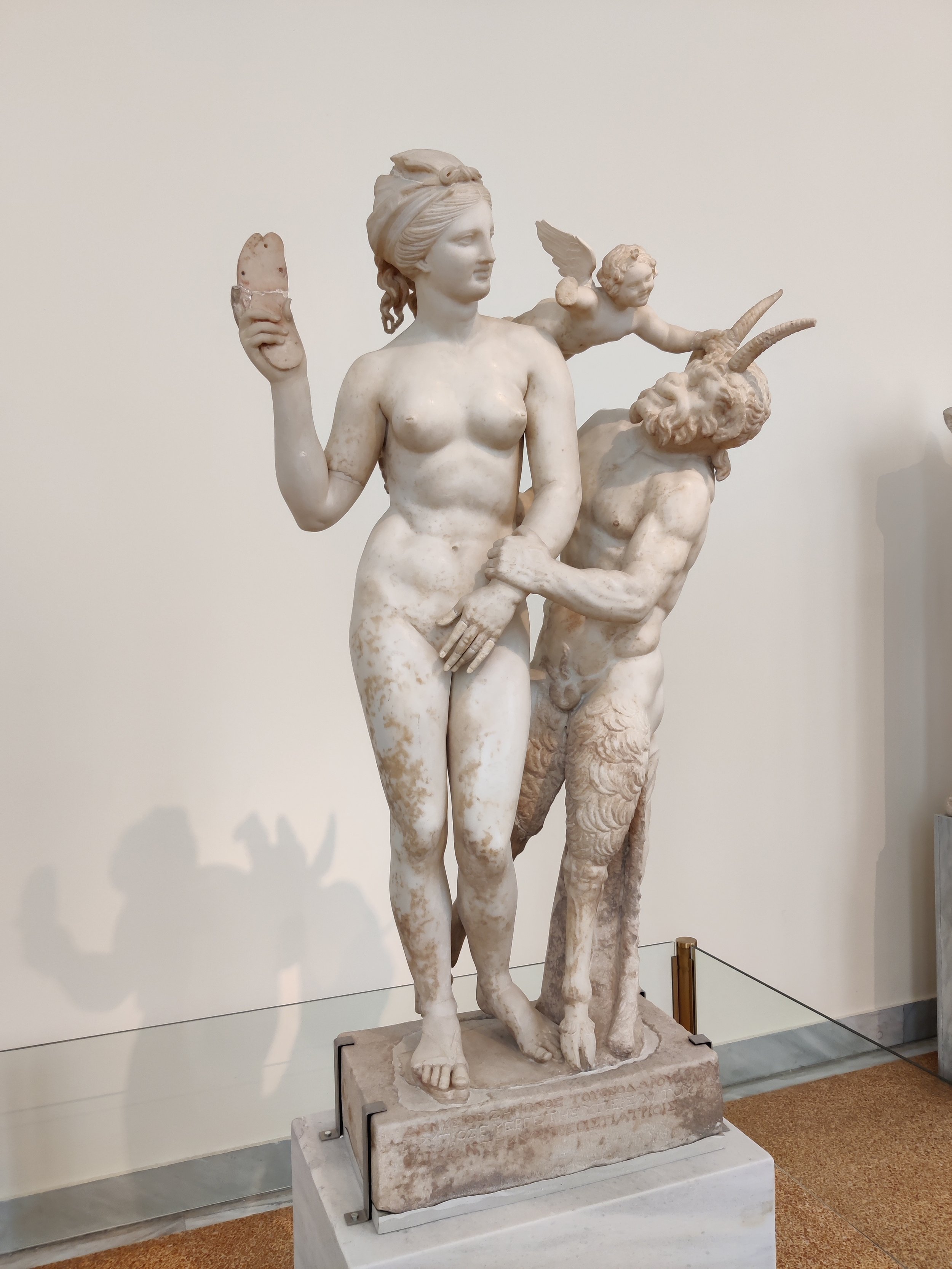

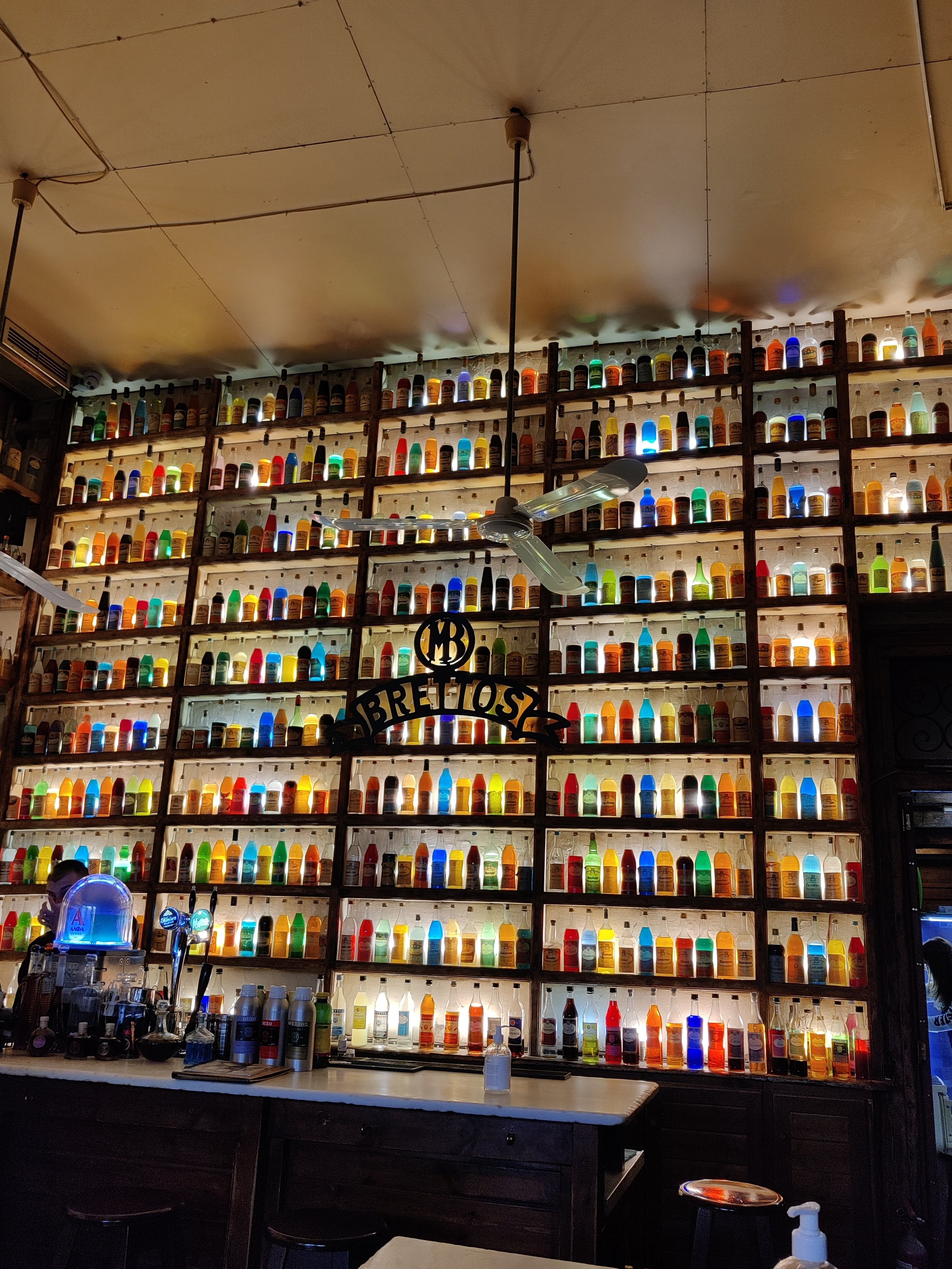
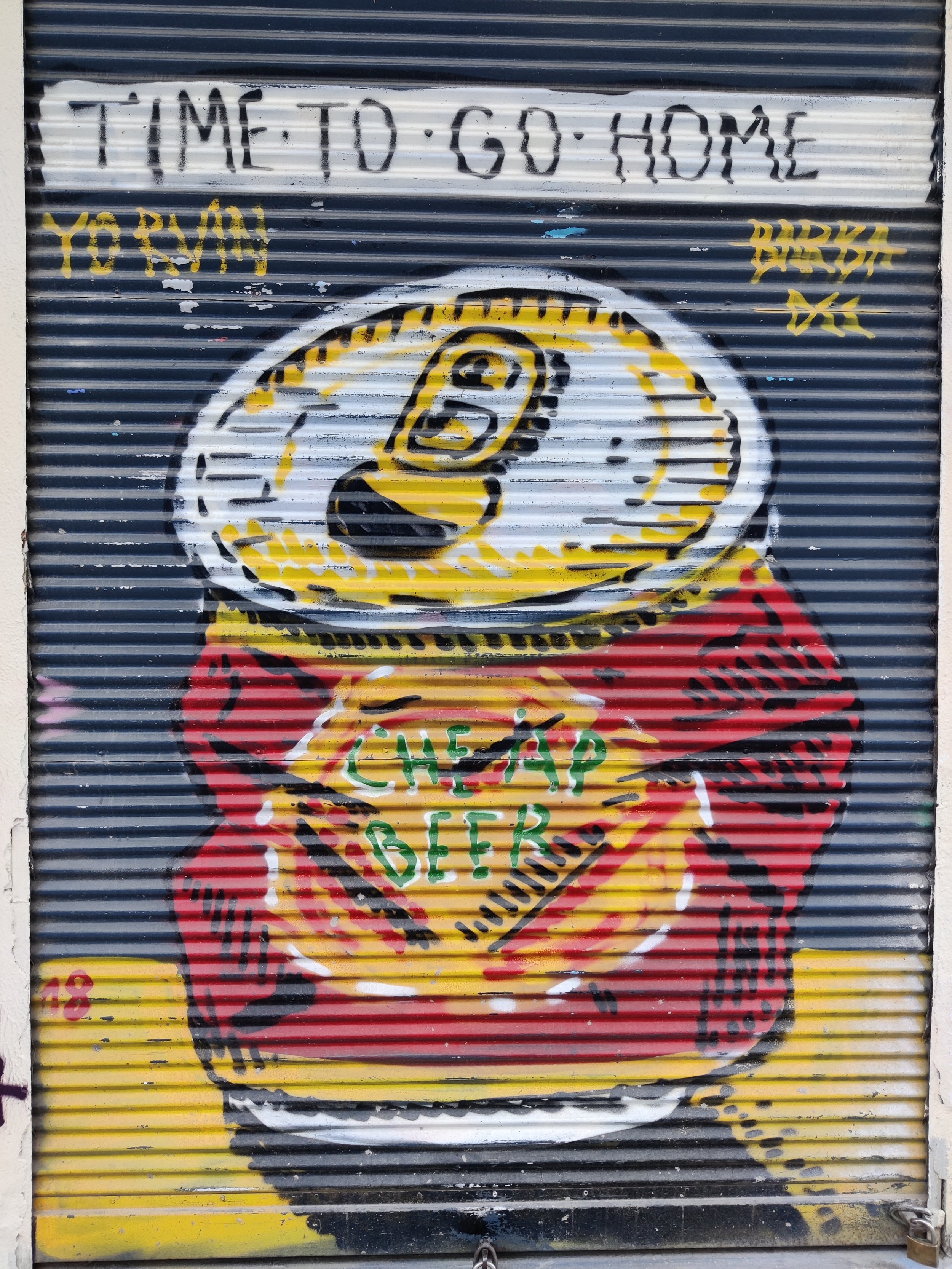

Korinthos
After galavanting around Athens for a few days, we hopped on a train for a short day trip to Korinthos aka Ancient Corinth—a significant village where the Apostle Paul kicked it.
The Fam, 2004
After a little Googling we decided to spend a couple nights on Aegina, a quaint little island an hour out of Athens. To our joy, some grad-school friends joined us for a few days bumming around. When we docked, I immediately remembered this iconic church and our family photo.
Aegina, Saronic Islands
From there we hopped a ferry to the Cyclades, a handful of islands East of Athens.
Most folks know about the instagramably views of Mykonos but not about the 600+ churches on this island. Turns out, this island is very small and pretty boring unless you like to party on yachts. It’s also insanely windy as evidenced from all our pictures. Thanks to a Greek ferry strike, we had plenty of time to drive the winding roads and eat a few more Greek salads drizzled perfectly with olive oil. We also popped over to Delos “Where Light Was Born”--perhaps one of the most intact and untouched archeological sites in all of Greece.
Our favorite stop of the trip was actually the shortest, the port of Tinos. After dropping our backpacks at the AirBnb and testing out grandma’s cherry liquor, we wandered through charming downtown. As we made our way towards the center, I glanced down main street and noticed a type of bike lane covered in green carpet. It felt important and like a normal Birkenstocks-clad person shouldn’t be stepping on. But we soon realized this was the road leading to the Church of Panagia Megalochari which it turns out everyone, who considers themselves a dedicated Greek Orthodox believer, makes a pilgrimage to. As a show of faith, you can buy a 6 foot tall candle to light inside the sanctuary.
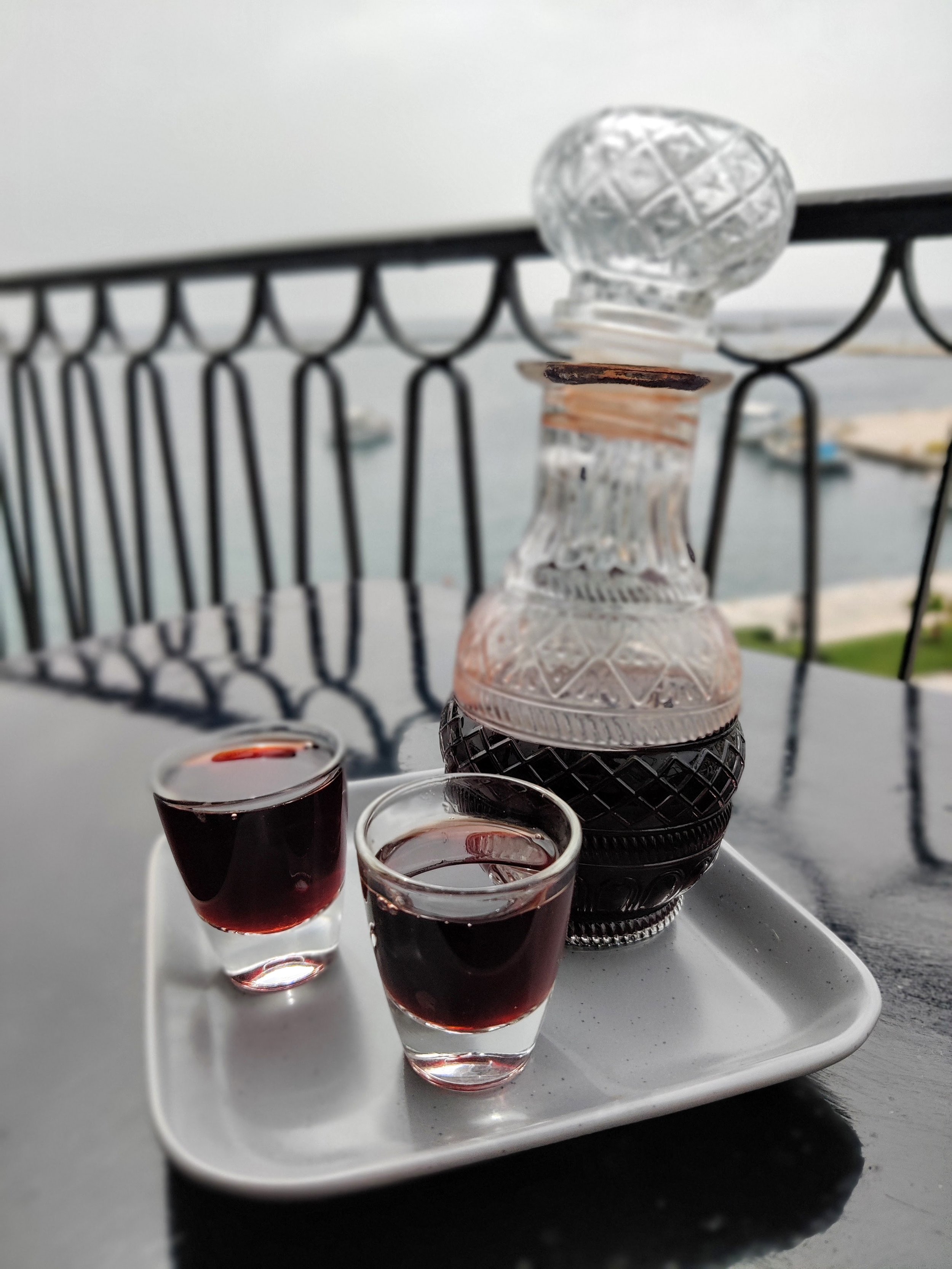
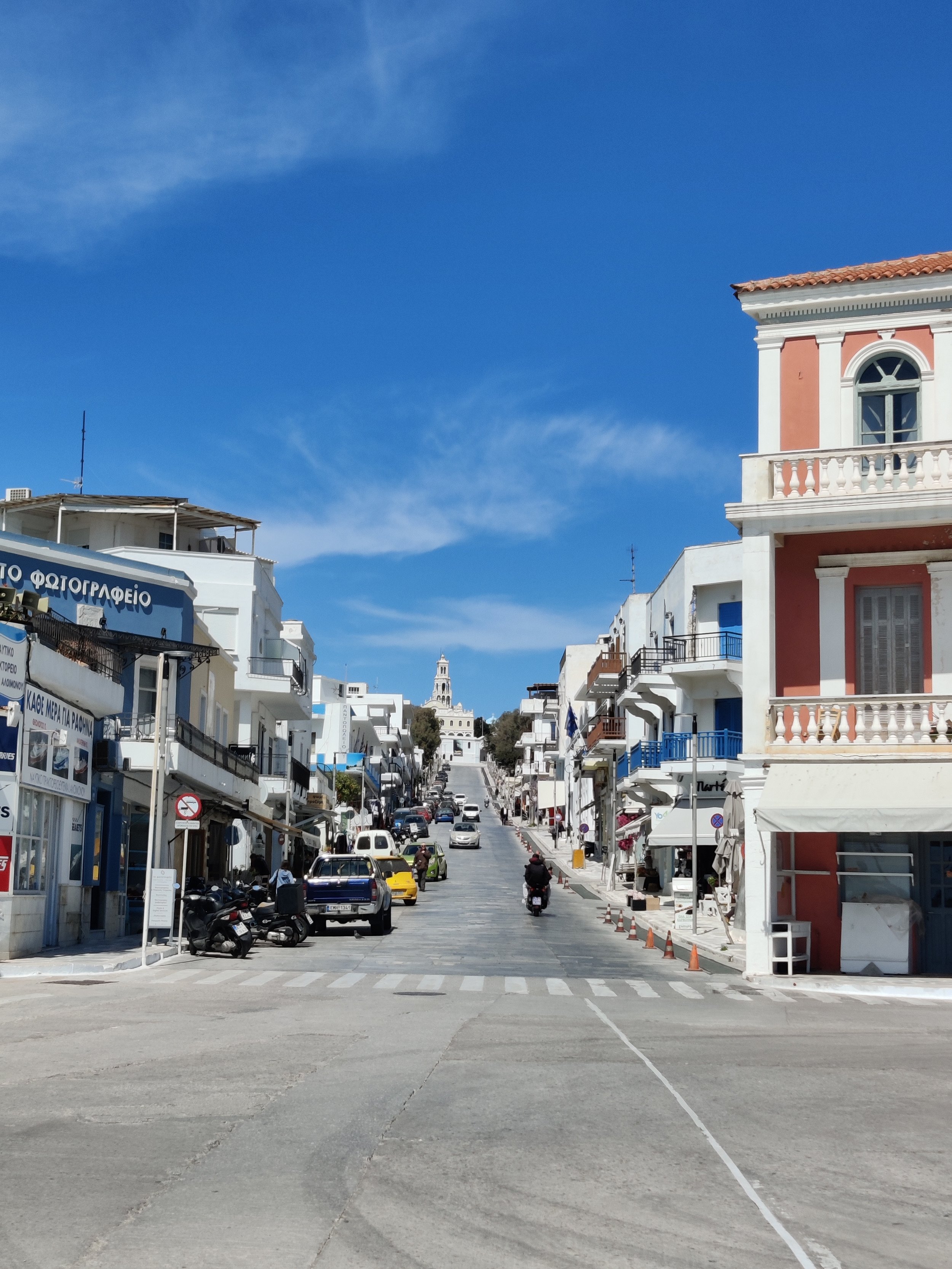
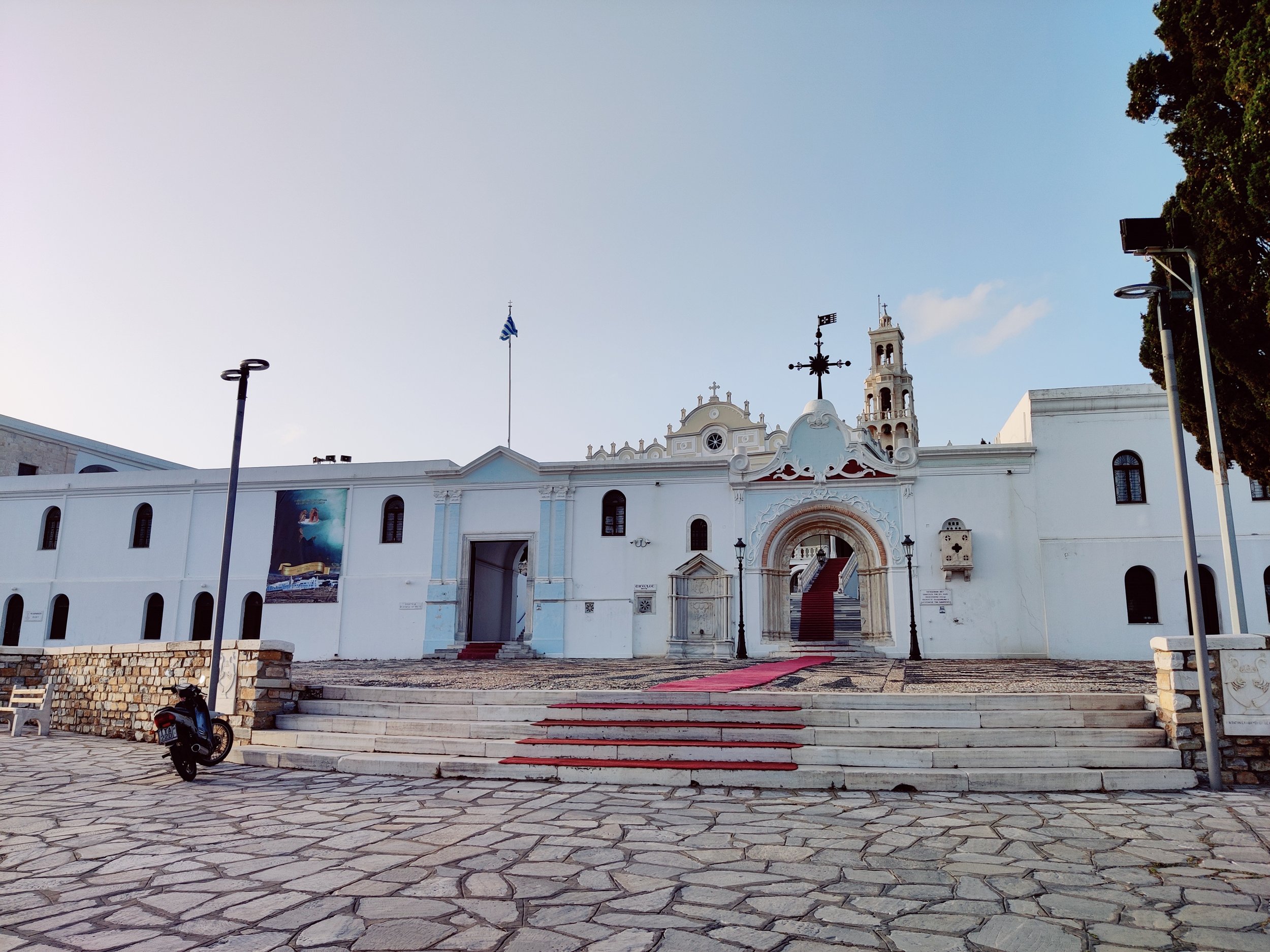

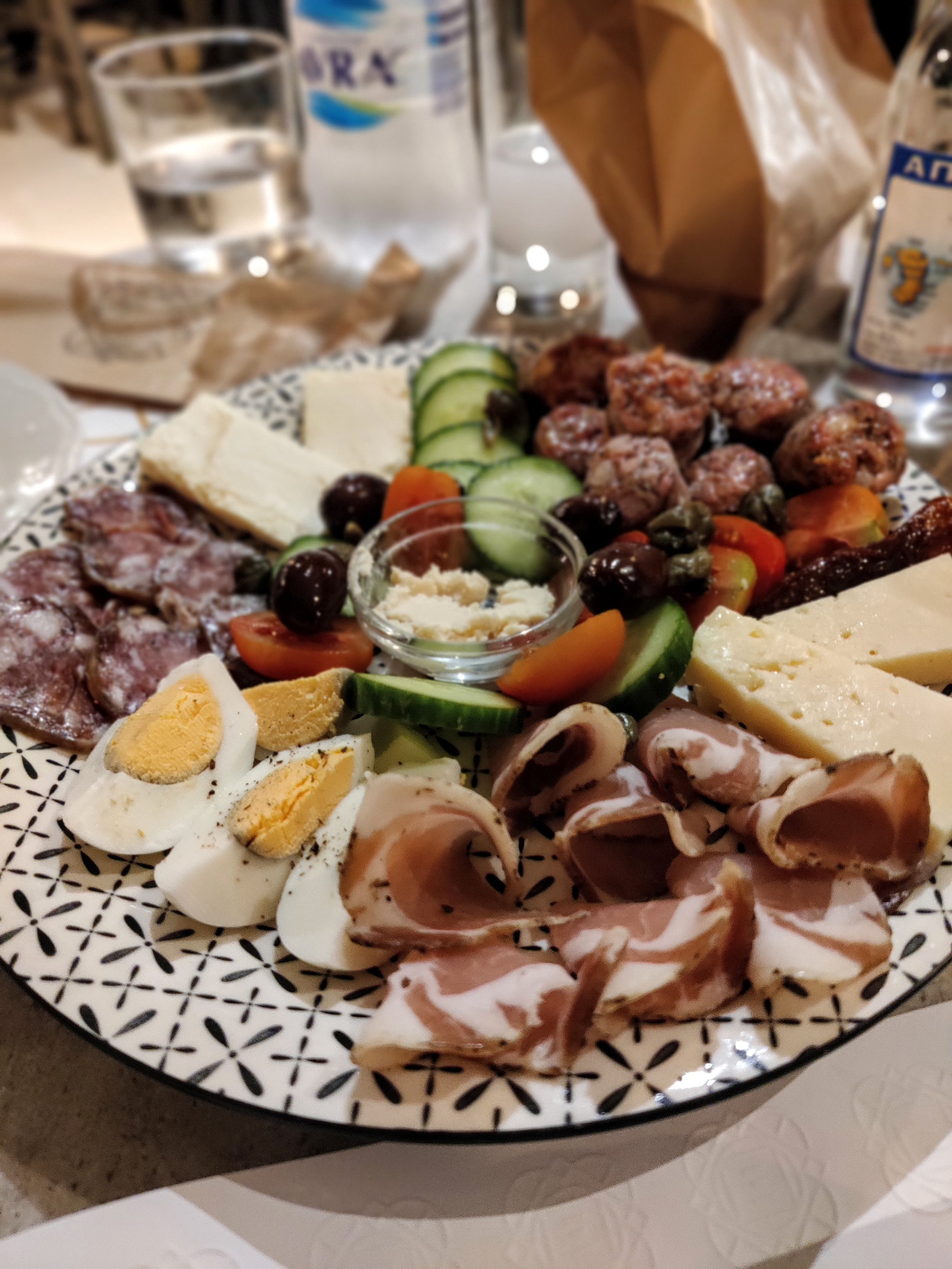

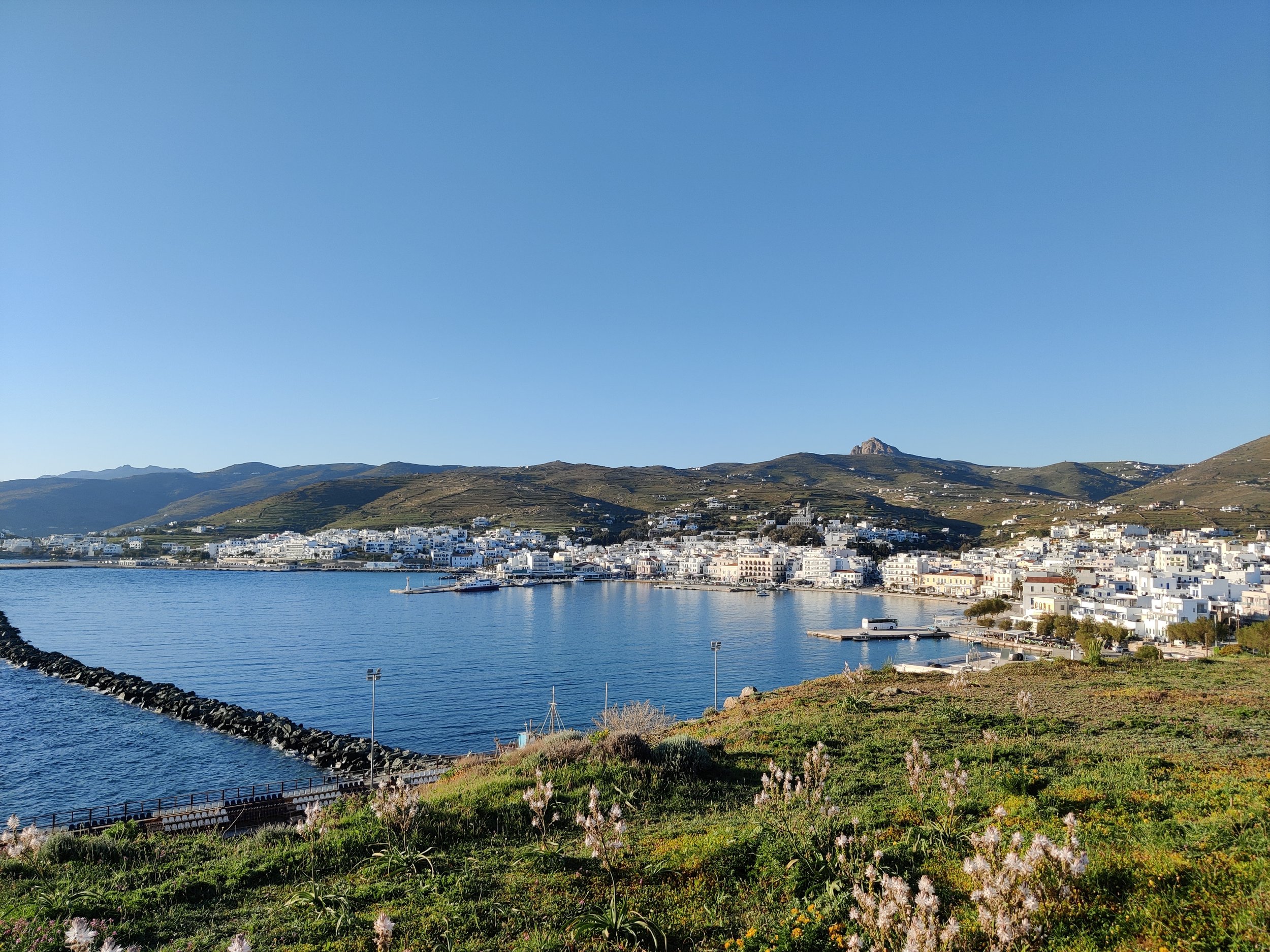
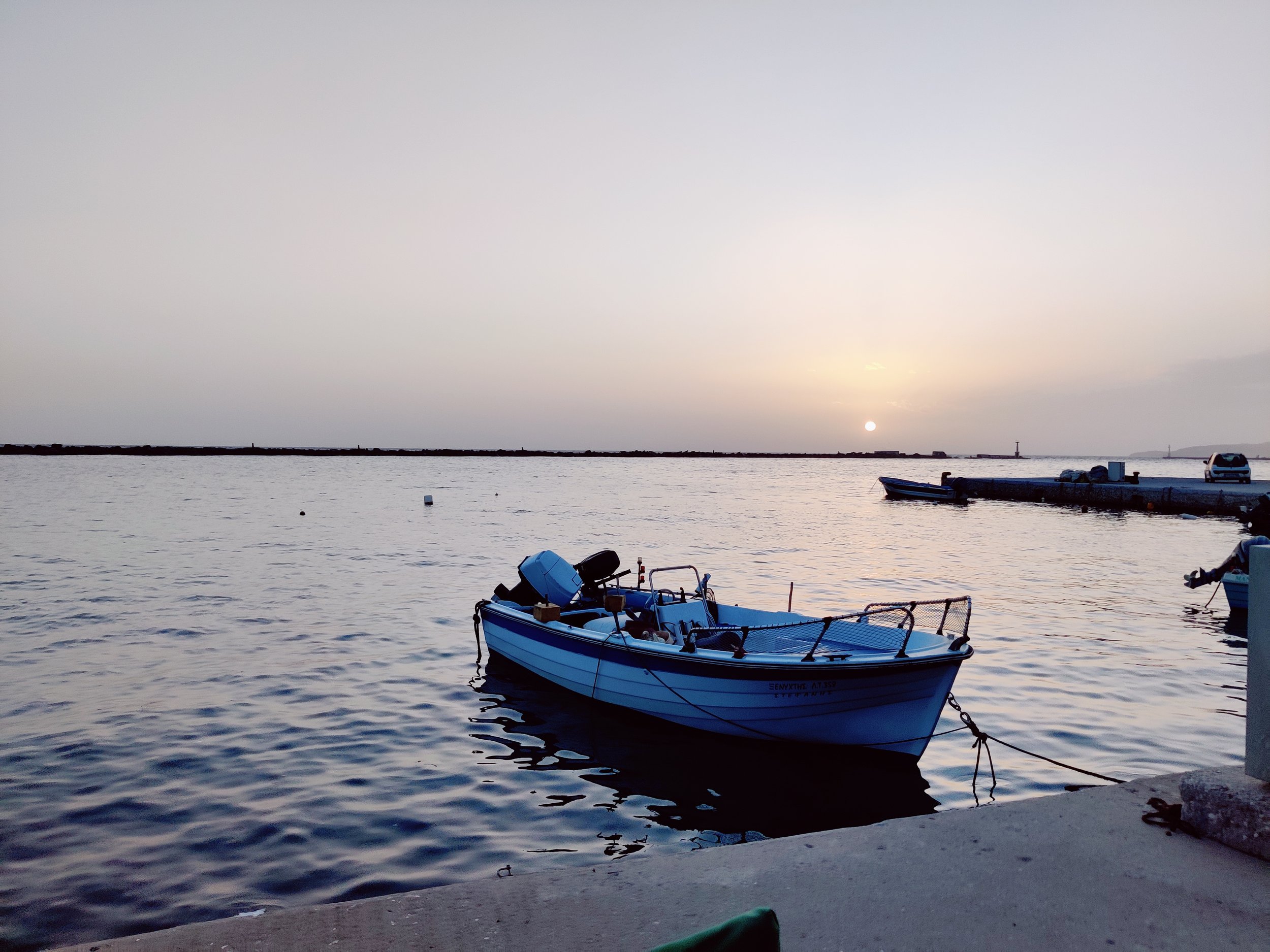
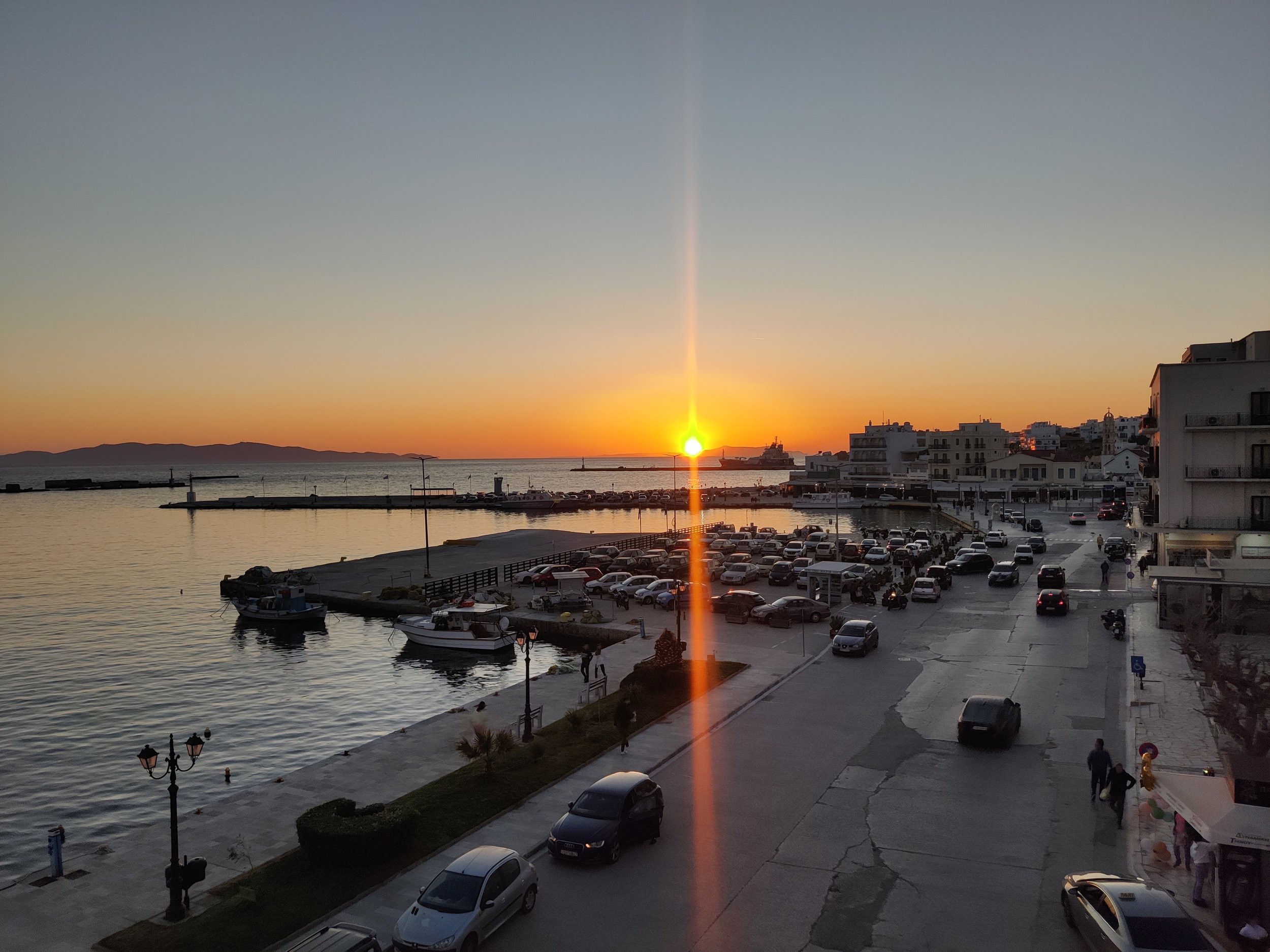
From getting lost in gritty Athenian alleyways, visualizing the birth of democracy in the Agora, drinking another .5 liter of house wine, or witnessing the power of organized labour strikes, our ten days in Greece flew by. Maybe next time we’ll get an Anthony Bourdain tattoo that says "Be a traveler not a tourist".
From Dams to Dumplings
School years are cyclical, even remotely. You begin the year on an emotional high. But at some point and rather predictably, the buzz and newness wear off and everyone’s energy level dips a bit. The answer to this at our school is fall break. It’s like spring break, but ten weeks into the school year. Last year, we spent fall break in Istanbul, but thanks to the coronavirus (Ms. Rona, you really suck) like in our last post, we kept it domestic.
While our home emirate of Abu Dhabi is actually the largest emirate in the UAE, Dubai is by far the most densely populated (thanks to its popping metropolitan area) and it is home to not only a thriving city but some incredible natural sites. Hope plotted a perfect route via E11 to E102 which eventually dropped us down into the town of Hatta, situated in the Al Hajar mountains, just two minutes from the Omani boarder.
Whenever we go on a road trip, we have a habit of listening to audiobooks or extended podcast series. This summer we drove up and down the Puget Sound listening to Slow Burn: David Duke from Slate. The sweet spot is an engaging narrator and something that blends levity and social commentary (yes, we’re nerds). This go-round, we downloaded Eddie Huang’s Double Cup Love which perfectly filled our 5 hours of expected roundtrip drive time.
So we packed our roller bags (and yes, Hope did bring the kitchen sink because--why not when you aren’t limited to kg and overweight baggage charges) and hopped back in the Micra. As we rolled along, high rises soon gave way to sand. One of our favorite things about driving in the UAE is the stark contrast between the highly modern freeway system that divides the desert. The contrasts are wild. One moment, high rises, ten minutes later--camels!
En Route
Because Nate loves dams but hates research, I meticulously planned our route to Hatta to stop along 3 of the 114 dams in the UAE. What I did not anticipate was the fact that there might not actually be water in many of the reservoirs at the moment. Thus, my surprise when we found ourselves off-roading in our subcompact across a rocky dirt road to what Google declared a “tourist” site only to discover wandering camels and some palm trees.
Hatta
Al Hajar mountain range
After winding our way through the mountains, we dropped into the unassuming town of Hatta--a popular destination for domestic tourists. It reminded us of Moab, the town outside of Canyonlands National Park. Hatta offers an opportunity to camp, hike or enjoy water activities at Hatta Dam. For a town with a population of only 12,000, Hatta’s food scene is popping. From Syrian and burgers to Italian food, you can always find something delicious to eat.
Still feeling like 95F was a dash too hot for a hike we opted to drive around town noting the traditional-style grocery stores, a cultural heritage site, several beautiful mosques, and a Honey Bee Discovery Center.
As the temperature dropped, we climbed up a small hill at Fort Hatta and basked in that golden hour lighting.
Usually Nate hates water based activities, but on the last day I sweet-talked him into renting a shaky paddle-boat. He struggled because the seats were too close to the pedals, driving his knees nearly under his chin. We peddled our way across the reservoir, mostly laughing and secretly grateful for the lifeguards patrolling in their motor boats.
Dubai
Burj Al Arab
Unlike some places (where we may be citizens), the Emiratis take this Covid thing very seriously. In order to re-enter Abu Dhabi we needed a negative PCR test within the last 48 hours. So we went for a test and some quality time in Dubai. We stayed on the Palm Jumeirah, not realizing its massive size and how far away it actually is from everything else in the city. Think about that time you stayed at the Hard Rock Hotel in Vegas and realized you had a 25 min cab ride to get onto the strip.
The drive inland did not put a damper on our culinary exploits. The Secret Garden for a late lunch, Pai Thai for dinner, Puerto 99 for brunch, and eventually Hope crying over mutton xiaolong bao at Din Tai Fung.
Needless to say, we felt lucky to escape the grind for a few days, and grateful to live in a country with excellent healthcare and public health programs. Things aren’t normal—there is still a virus, but government competence and the levels of testing give us a modicum of confidence. It’s not life as usual, but we feel safe here and that’s priceless.
Jambo, Wanna Go to Kenya?
Like most people our age, the mention of Kenya evokes images of The Lion King, wistfulness that Barack Obama is no longer president, and the sweet refrain of the “jambo song.” Little did we know those three elements would characterize our 7 days in the Tsavo region of Kenya.
The opportunity to chaperone a school-sanctioned trip fell into our laps unexpectedly. For the last two years, our school has offered Viper Ventures— curated experiences that give students an opportunity to travel abroad, serve a community, gain a life skills such as cooking or even dig into career options through a job shadow. Originally, we intended to stay local and supervise the cooking class or game design program. But when we learned we could chaperone together and didn’t have to be in charge, we couldn't resist.
3 adults, 27 teenagers. 2 travel days. 5 days in rural Kenya. Let’s GO!
The Journey
Our trip was organized by Camps International, a British agency that specializes in building global citizenship through service-oriented experiences, and coordinated by expedition leader, Amy, who’s infinite patience and expertise on avoiding sun-stroke was greatly appreciated.
Home Sweet Home
Camp Kenya is located in the Tsavo region roughly halfway between Nairobi and Mombasa. This was our base camp where we ate, slept, and fought beetles the size of a baby’s fist.
Goat Deworming & Elephant Deterrent Fencing
Day #1: On our first day we traversed the local community on a de-worming mission. The purpose of this process it to promote goat health which will impact the local farmers’ livelihood. We also built elephant deterrent fencing (cutting corrugated steel & creating strings of metal that make such a loud noise, elephants won’t trample a farmer’s garden.
Panoramic Hike
Day #2: A team of park rangers lead us up a neighboring mountain and nature preserve. For the Brits, it wasn’t even strenuous. For the rest of us, it required a few breaks and numerous bottles of water.
A Neighborhood School
Day #3: We spent the day learning about the Kenyan education system and helping build a nursery for next school year. Most of our students were unaccustomed to such physical labor involved.
Mama Mercy
Day #4: This day was centered on on learning more about the culture and traditions of the region. We spent half the day with Mama Mercy and the other half visiting a Maasai village.
This is Mama Mercy who is sharing her 25 years of community activism. From creating a micro-lending program for women-owned businesses when banks wouldn’t lend to women, to starting a co-op that trains women in beading & elephant dung paper-making then sells their crafts so they can support their daughters in school, Mama Mercy reminds us what it means to live your life for others.
Going on Safari
Day #5: On our last day, we went to Tsavo East National Park for a safari. Despite the gloomy weather, we saw over 21 different animals.
Dik diks, giraffes, monkeys (including baboons!), elephants (did you know these ones are usually red because they roll around in the dirt!?!), pumbas (yeah, that’s a warthog), maritobou stork, various species of eagles & ground birds, and antelopes (which we learned includes oryx, waterbucks, impalas & some others).
Our Reflections
One of our favorite moments was slapping freshly mixed cement onto a wall for the new nursery at a local school. We listened to a couple of students (it was likely one of their first brushes with manual labor) work their way through some realizations they were having about how schools get built and how hard construction is without modern industrial equipment. This is the power of travel. It pushes us beyond our comfort zones, learning new ways of living.
The ability to travel is a privilege and it is a privilege that we’ve had over the last decade, as a couple. Our travel has shaped our world-views and is a crucial element of who we are as a team. It has helped us be more empathetic to others and is why we see ourselves as a part of a larger global community.
So Wait, a "Homerun" Counts the Same as a "Touchdown"?
We both love live sports--the din of the crowd, the energy, the feeling of seeing athletes up-close and personal. It doesn’t matter if we have no clue who any of the athletes are. It’s the thrill of the game and the joy of the experience.
Brazil fans represent at #BrazilWorldTour in Abu Dhabi, UAE
The Familiar
On Tuesday evening we went to Mohammed Bin Zayed Stadium for an international soccer friendly. It was Brazil versus South Korea. We didn’t expect both teams to bring full-rosters, but were pleasantly surprised by the lineups: Son Heung-min (Tottenham), Coutinho (Bayern), Firmino, Fabinho, and Allison (all from Liverpool), all balled out of their minds. The crowd heavily tilted towards Brazil -- the match was part of their #BrazilWorldTour, but every South Korean person in the city seemingly came out and they made a ton of noise all match. Coutinho hit one of the nastiest free kicks you’ll ever see. He basically had a window the size of a cereal box and beat the keeper to the near post from 20+ yards out. Our seats were directly behind where he struck the ball so we could see the nasty spin he put on it.
Sheikh Zayed Cricket Stadium Entrance
The Unfamiliar
We don’t know cricket -- not even a little bit. But on the car-ride to the Sheikh Zayed Cricket stadium we brushed up on essential knowledge we needed to enjoy a match in the Emirates T-10 league.
We still don’t really understand everything we saw, but we liked it. Alot.
Reading the scoreboard was like solving a puzzle…
T-10 is a modified version of the game where matches are basically ninety minutes, rather than the five-day (marathon) test matches you may have read about. If I understand correctly, in a test match players tend to try to avoid getting out, but T-10 is like late 90s baseball, dudes were stroking long-balls (or sixers as we learned they’re called). My friend Big Dave compared it to a baseball Homerun Derby.
Fans trying to catch selfies with an apparently famous cricketer
Beyond the game, the stadium atmosphere was lit.
Cricket, like soccer, was born in England and exported to their colonies. Hence, South Asians are wild for the game. No, like it’s their jam. It’s like how a certain brand of white women™ love PSLs and Ugg Boots... but worse.
There were cheerleaders, mascots, a DJ/MC/Hypeman/Host starting chants and bumping Bollywood music. At numerous points throughout the day, the DJ roll called.
Bangladesh, make some noise… ROAR
Afghanistan, make some noise… ROAR
Pakistan, make some noise… ROOOOOOAR
India… he didn’t even get to finish… the ground just shook.
The Food
One of our favorite on-going jokes is to compare the food experiences at sporting events in different countries: the Corona Big Gulp & nacho cheese gun at Estadio Azteca, the baguette delivery at the 2019 World Cup Final in Lyon, the seemingly bottomless well of 3 Euro beers consumed at the Esprit Arena in Dusseldorf.
Having experienced 3 different football matches in completely different stadiums (BYO snacks at one, no-snacks, applesauce sized cups of water served at another) we had no idea what to expect at a cricket match.
There were three cricket matches played, back-to-back-to-back. The fan zone offered a half-dozen food trucks bursting with samosas, halo-halo, and shawarma. Inside the stadium, the concession dudes made it rain chicken sandwiches and personal pizzas. There were Baskin-Robbins pushers and even a chaiwala!
What’s Next?
Who knows? This is a year to try new things.
We’re headed to Kenya on Tuesday to chaperone a student service project. We’ll see what kind of sports shenanigans we get into there.
